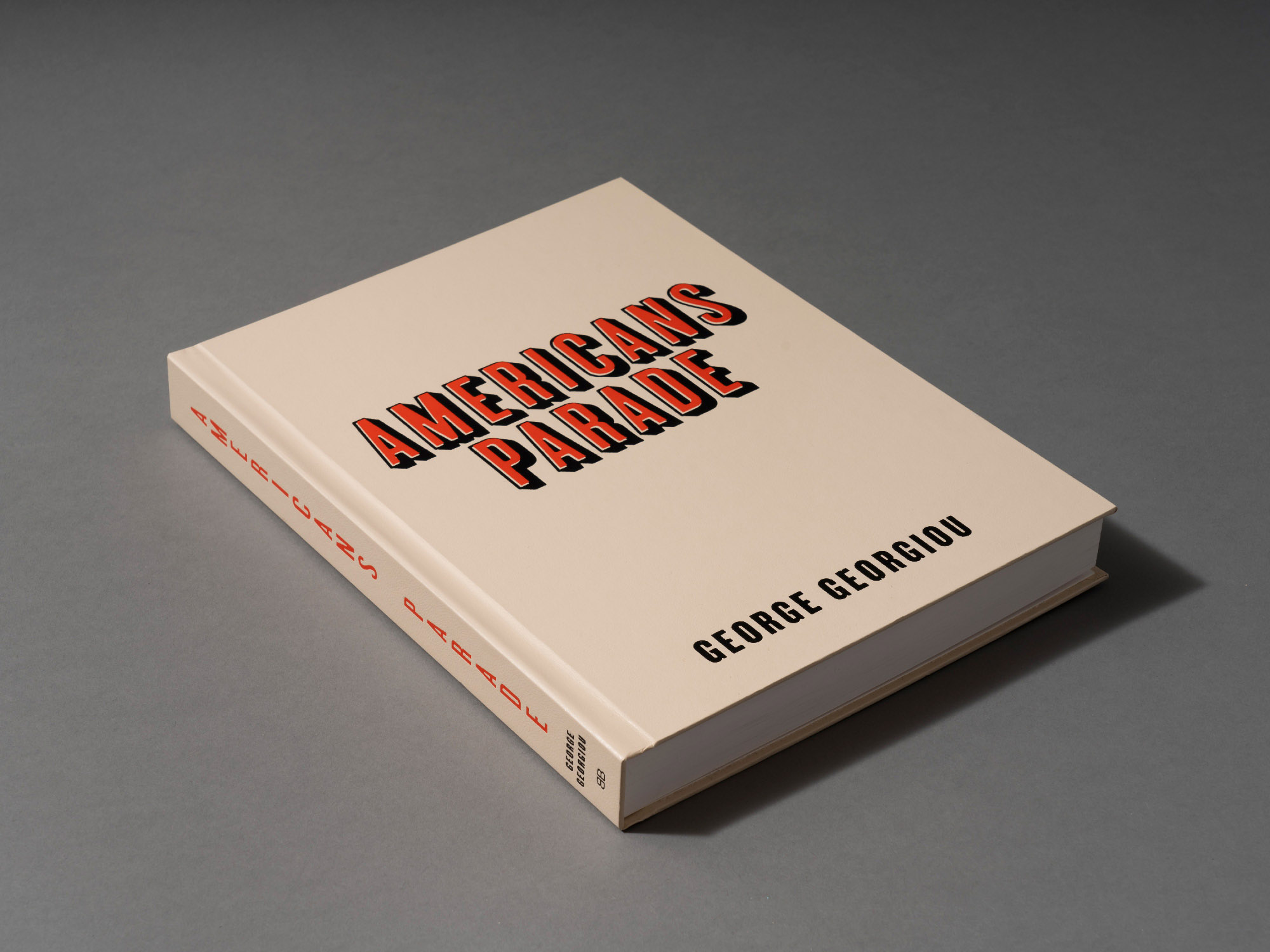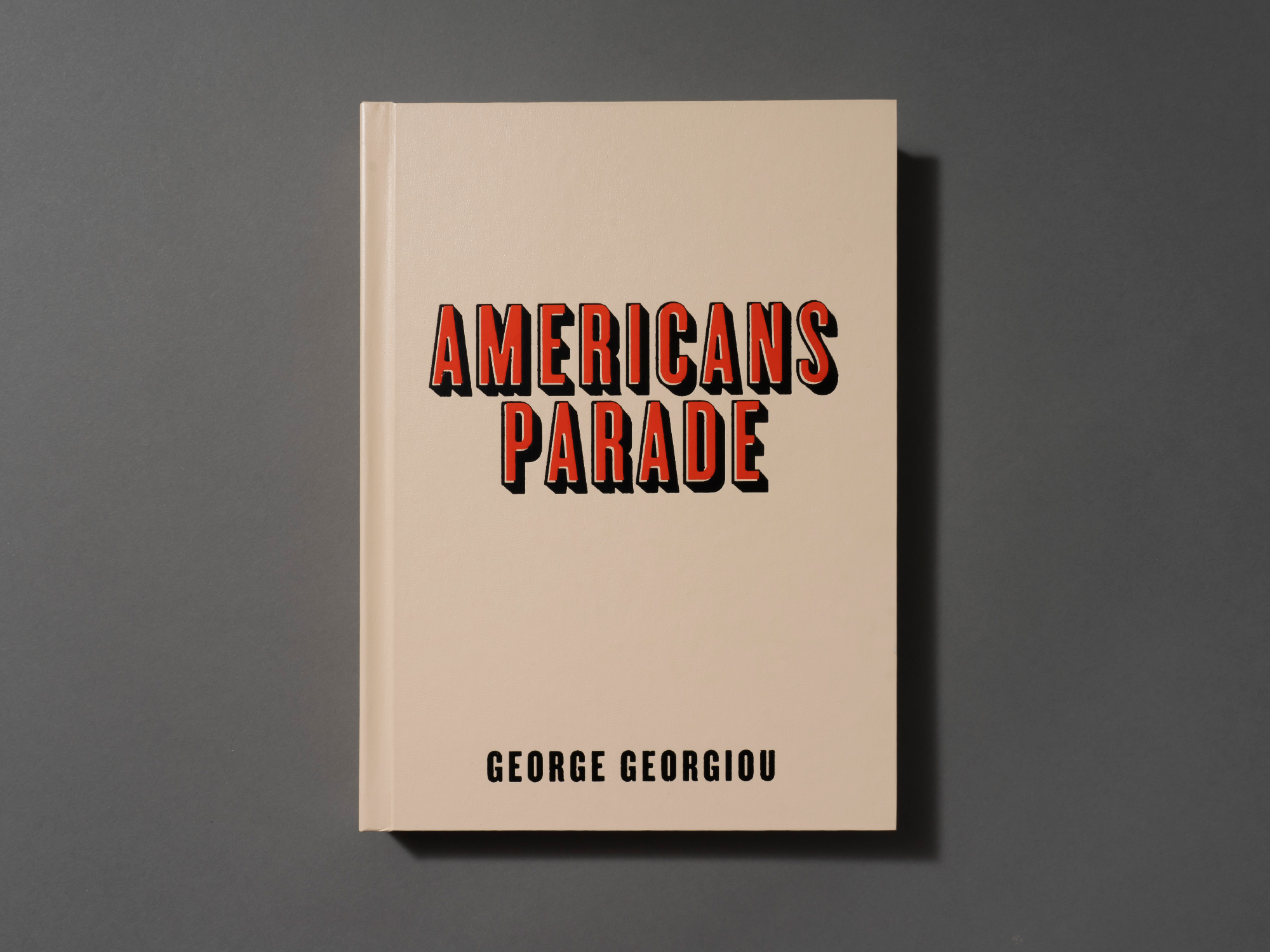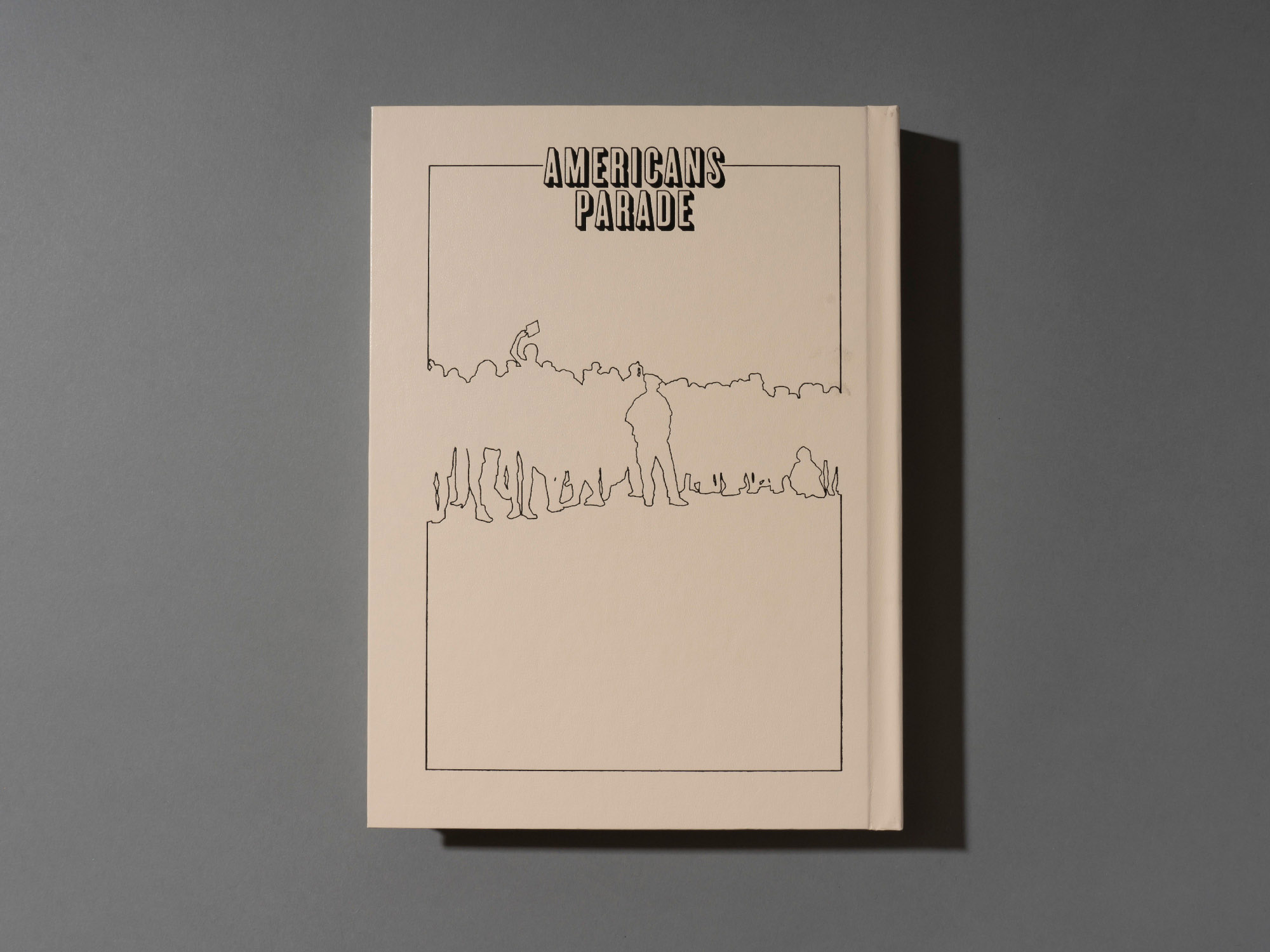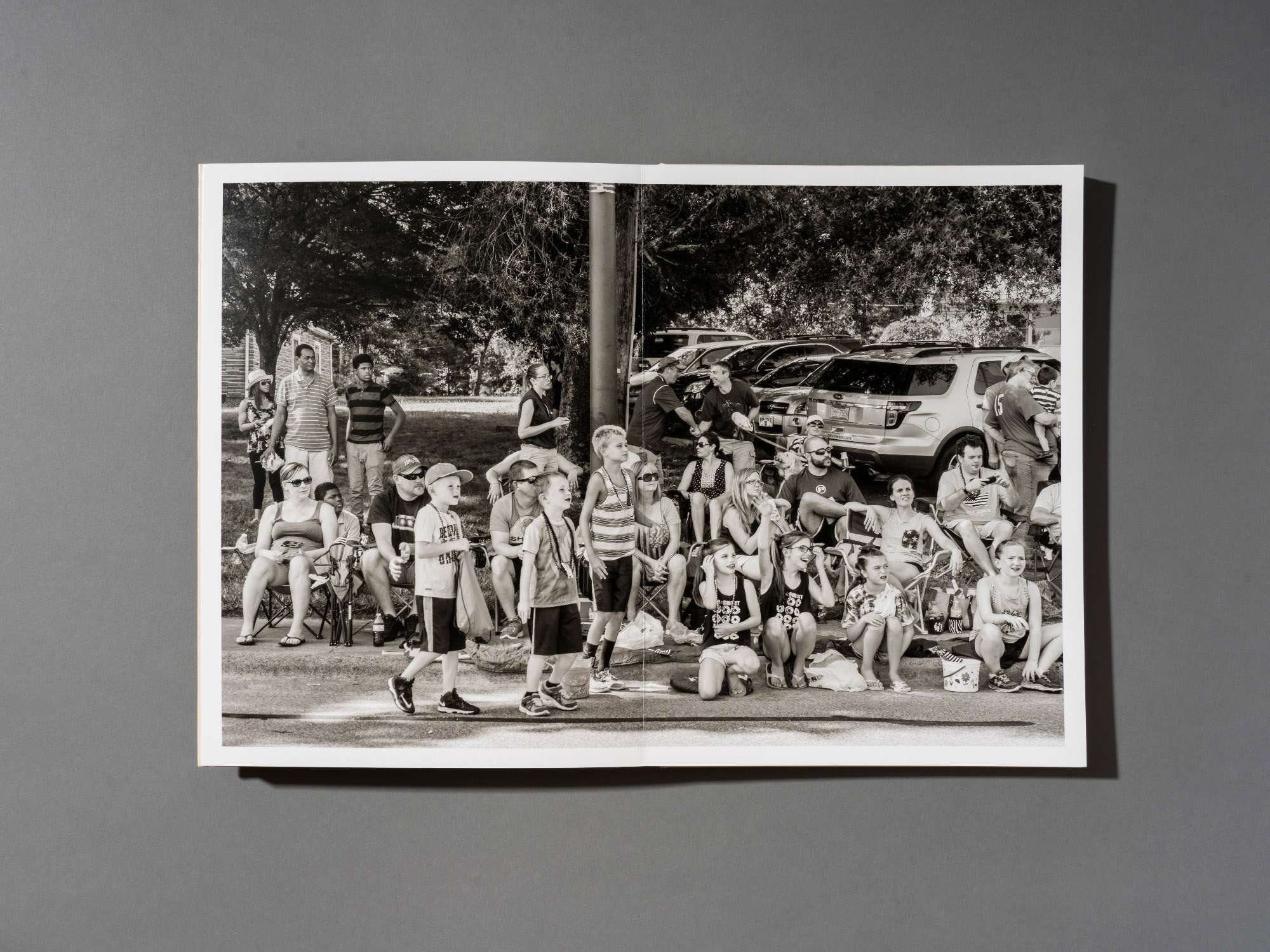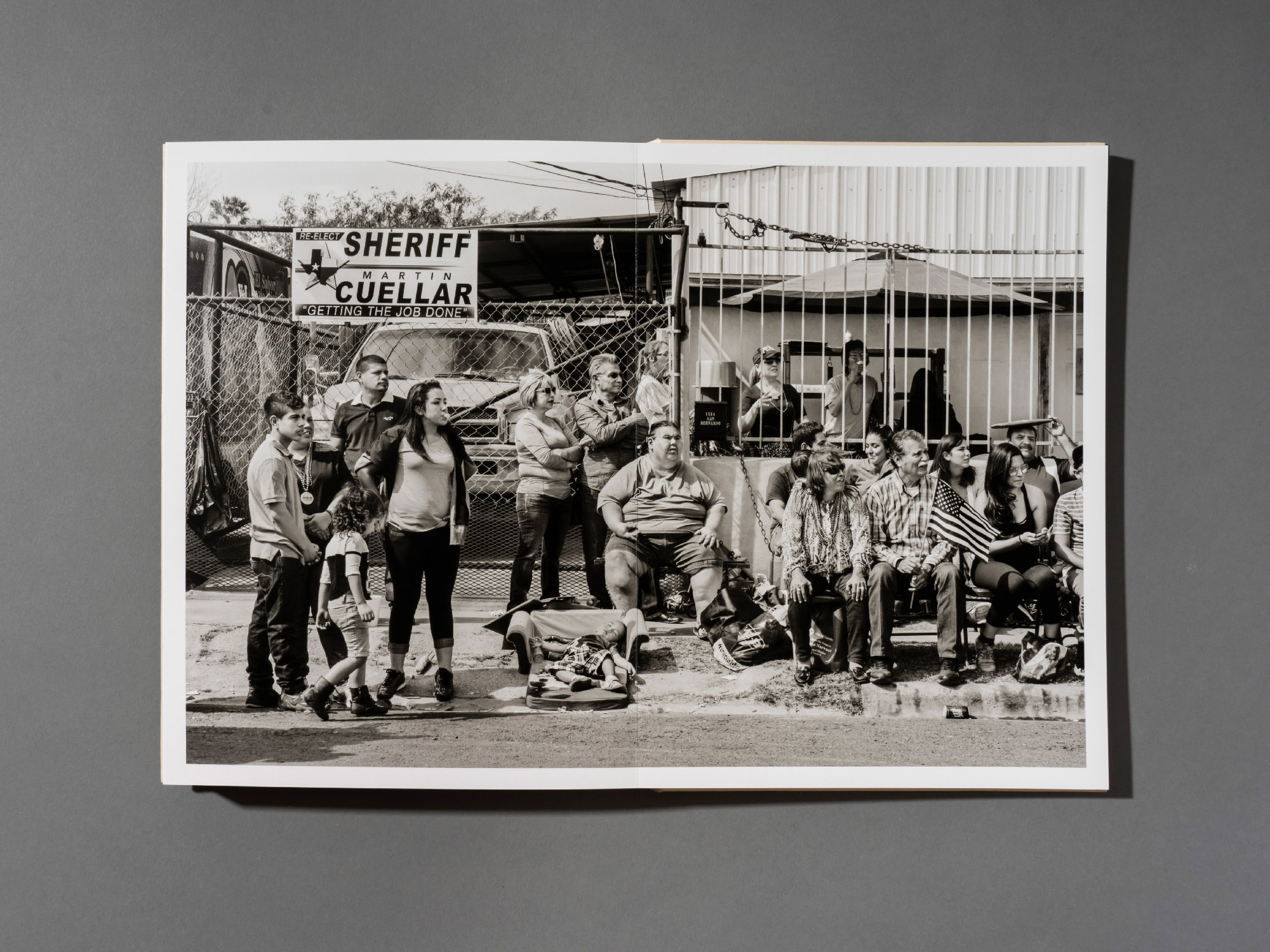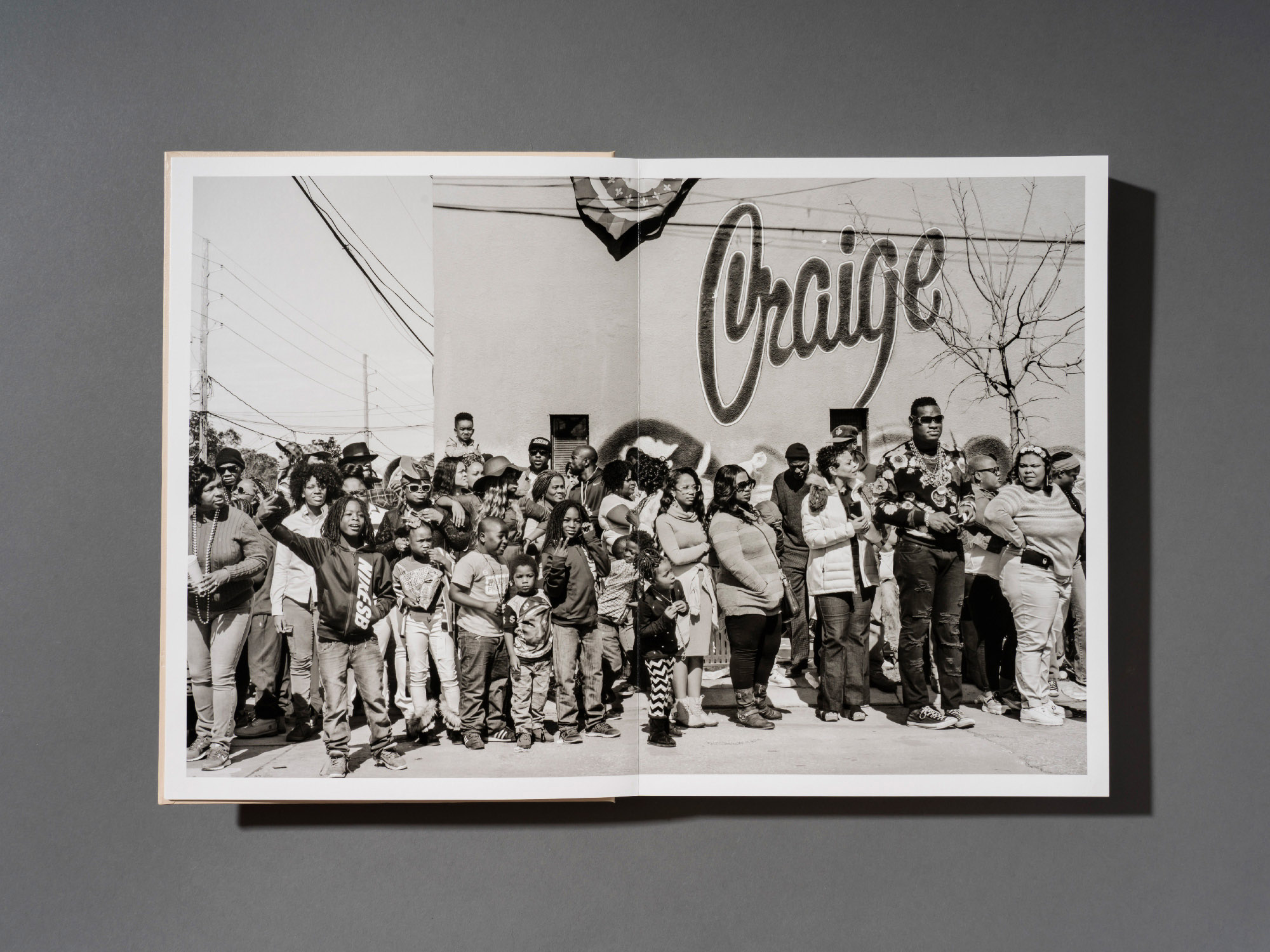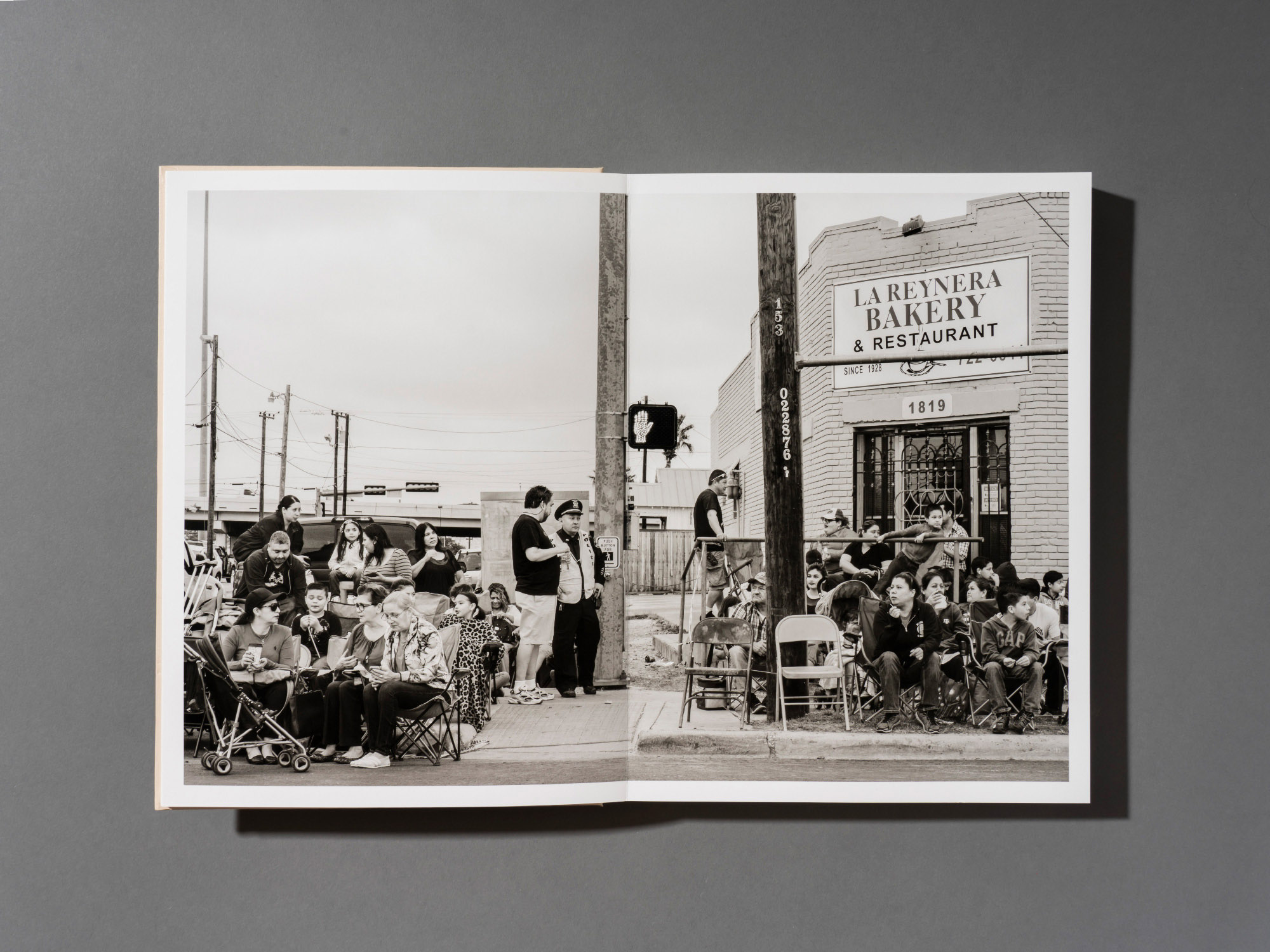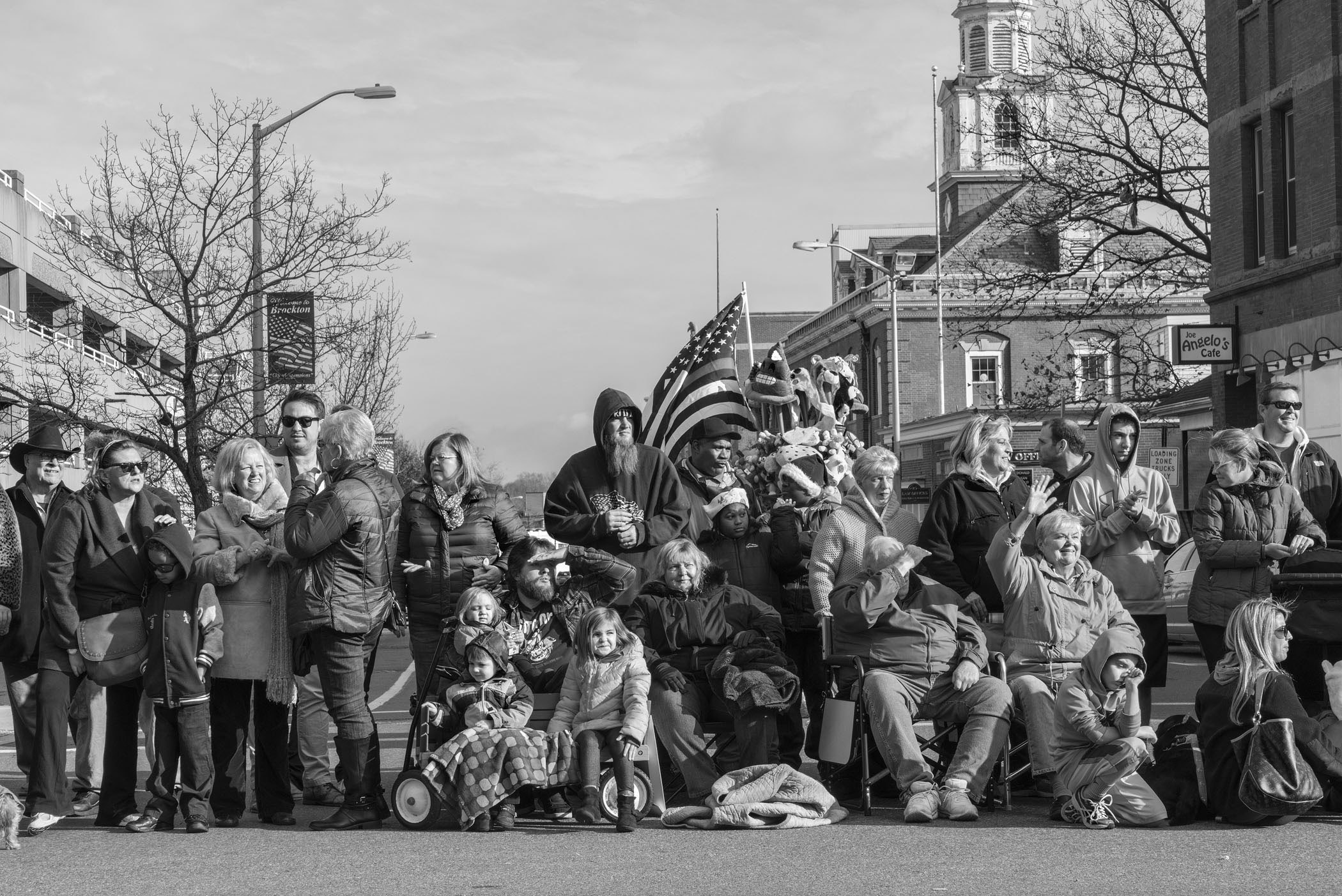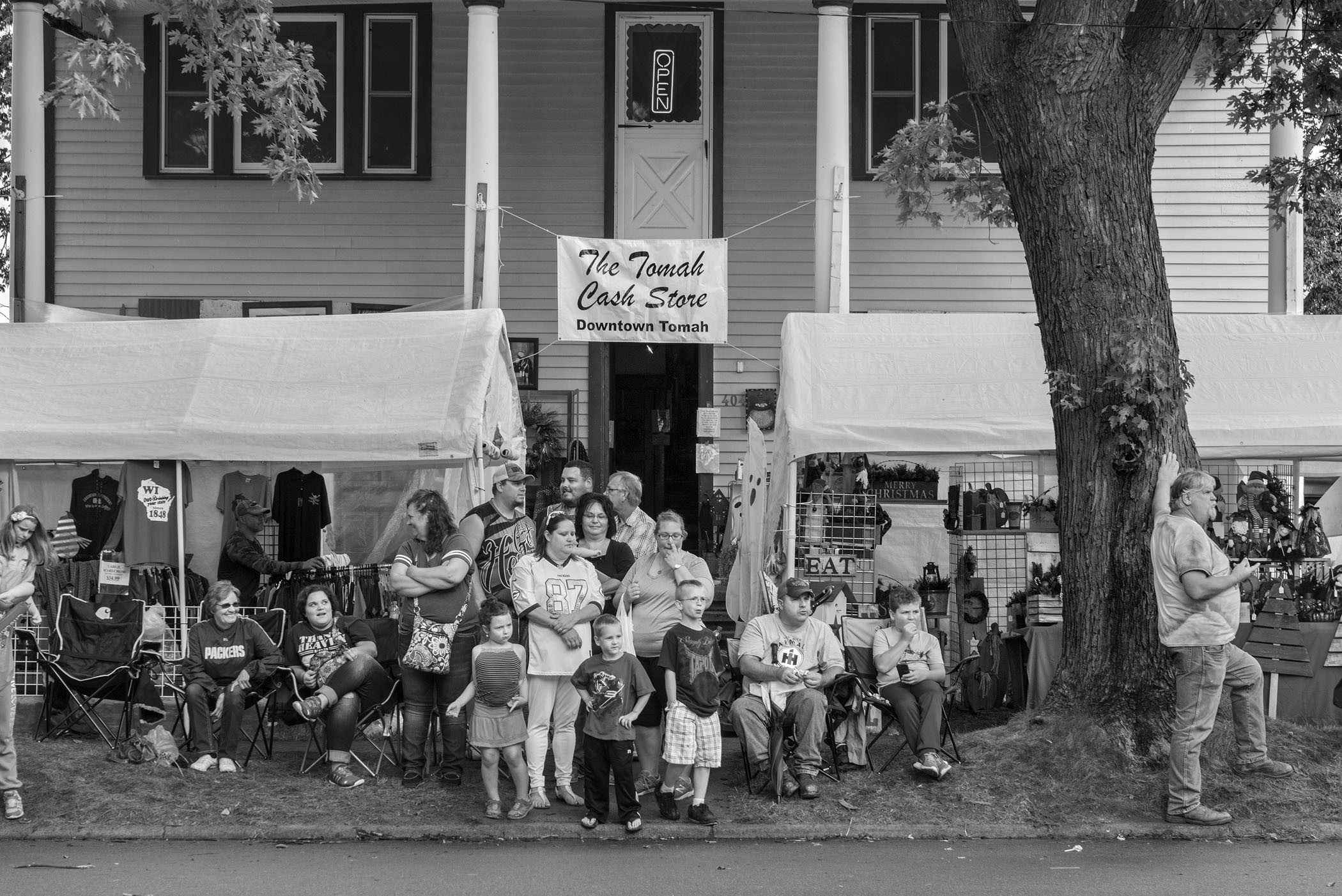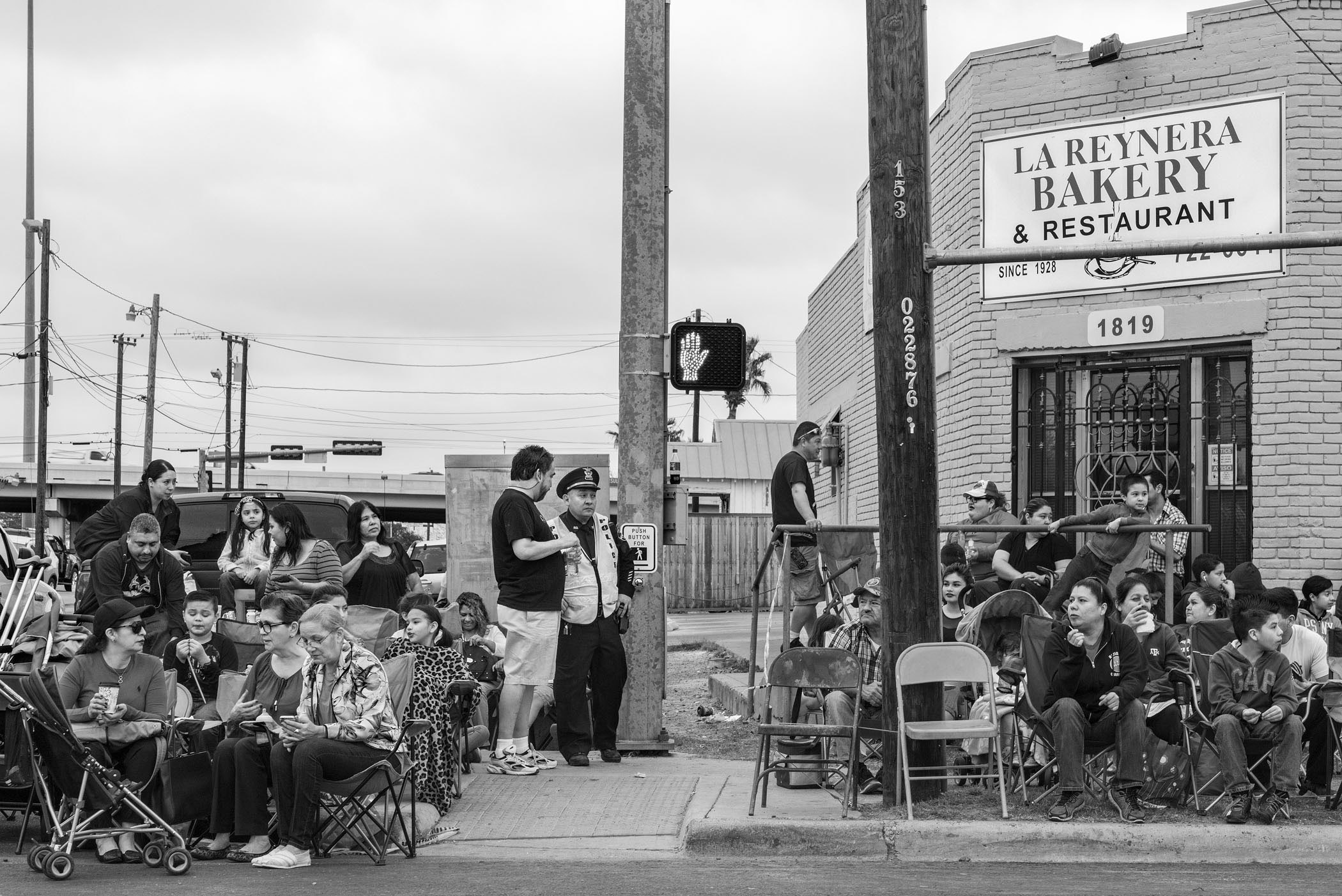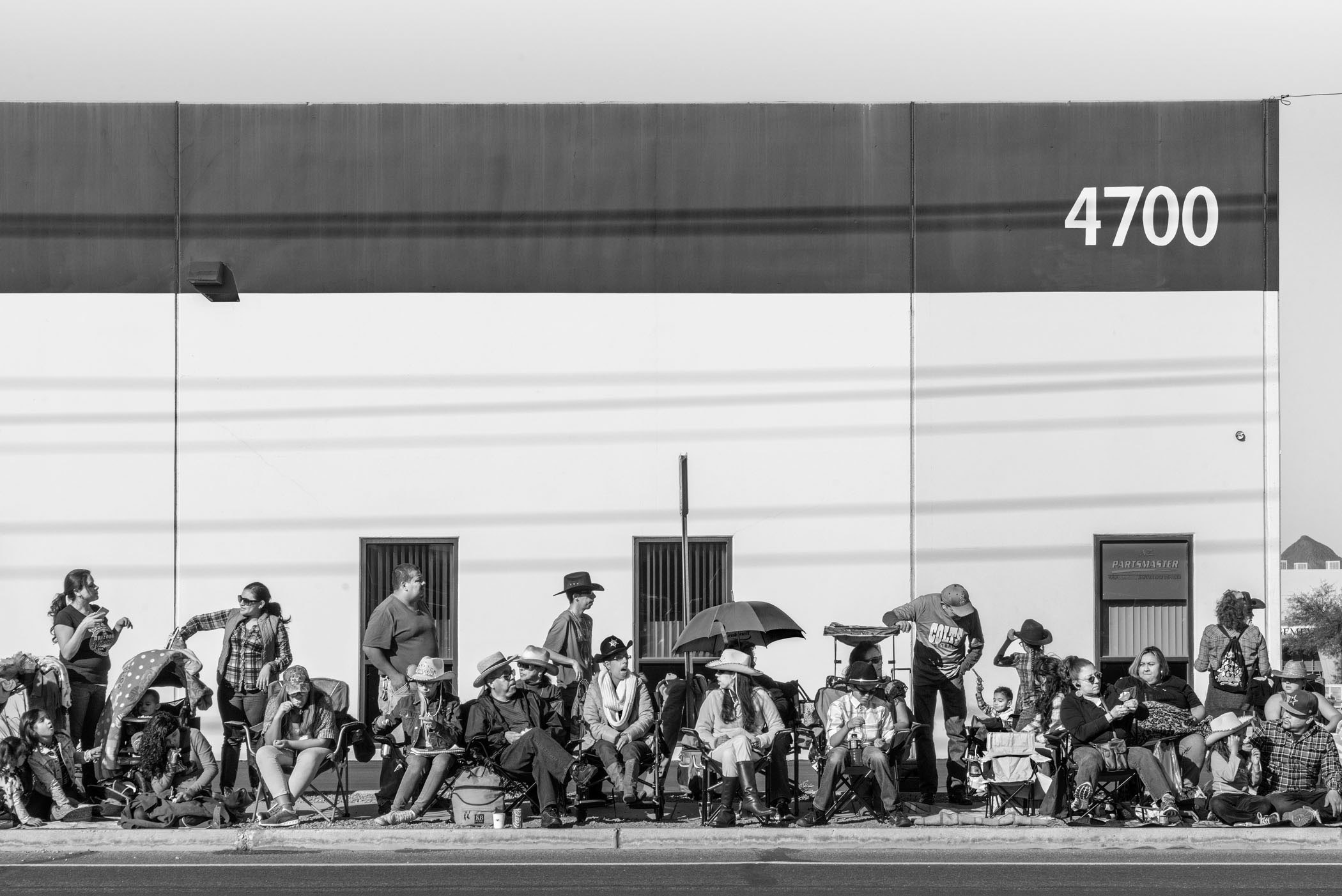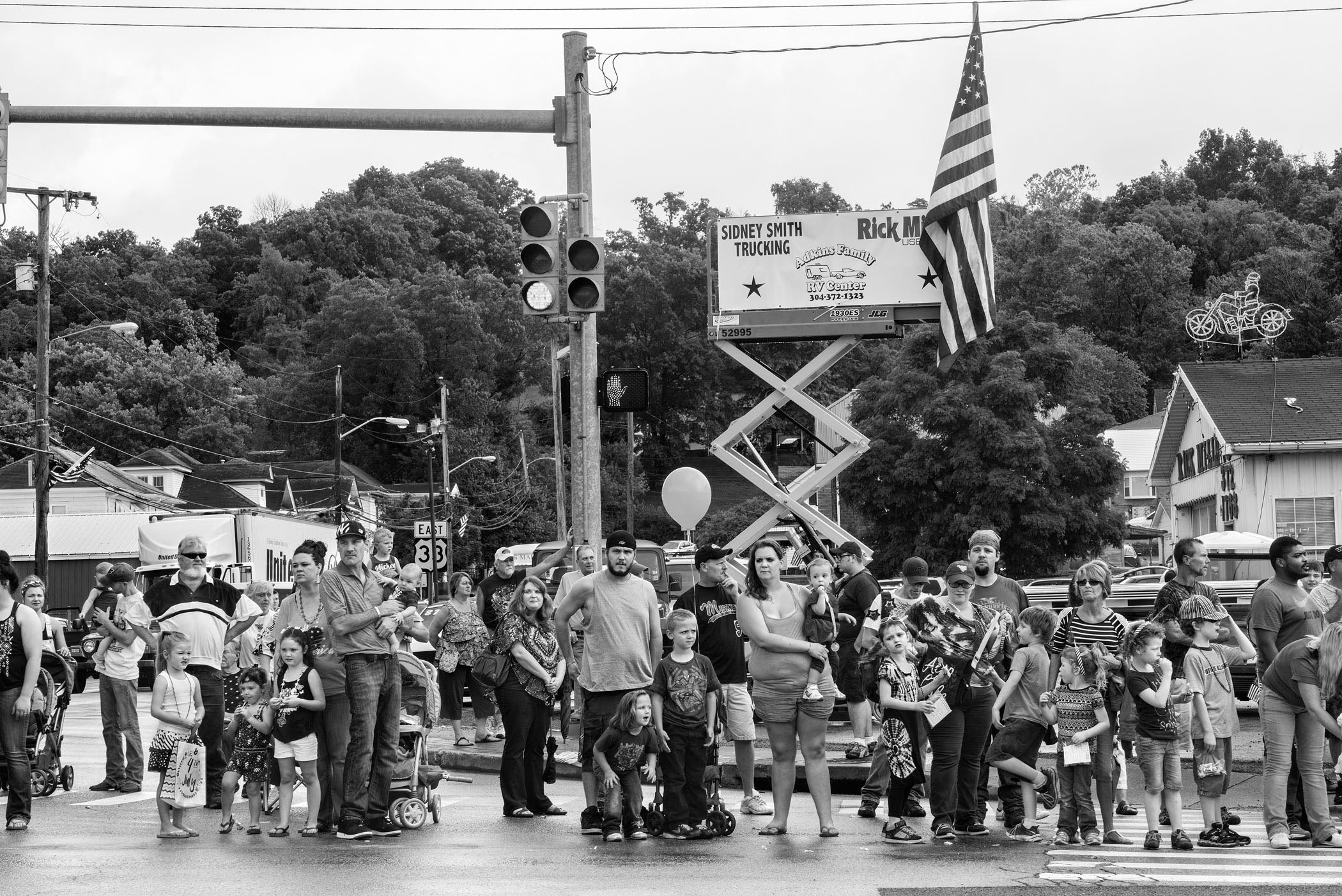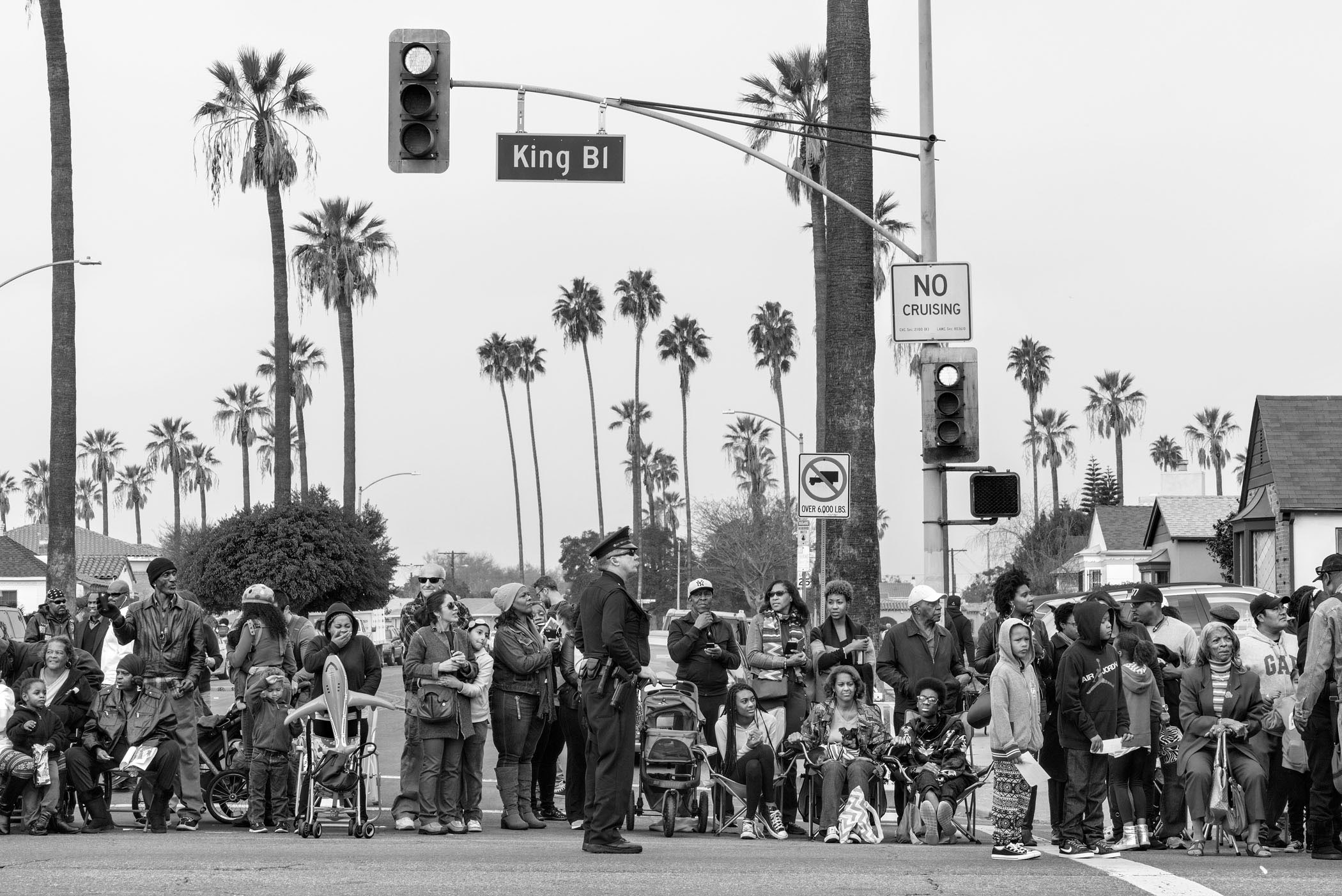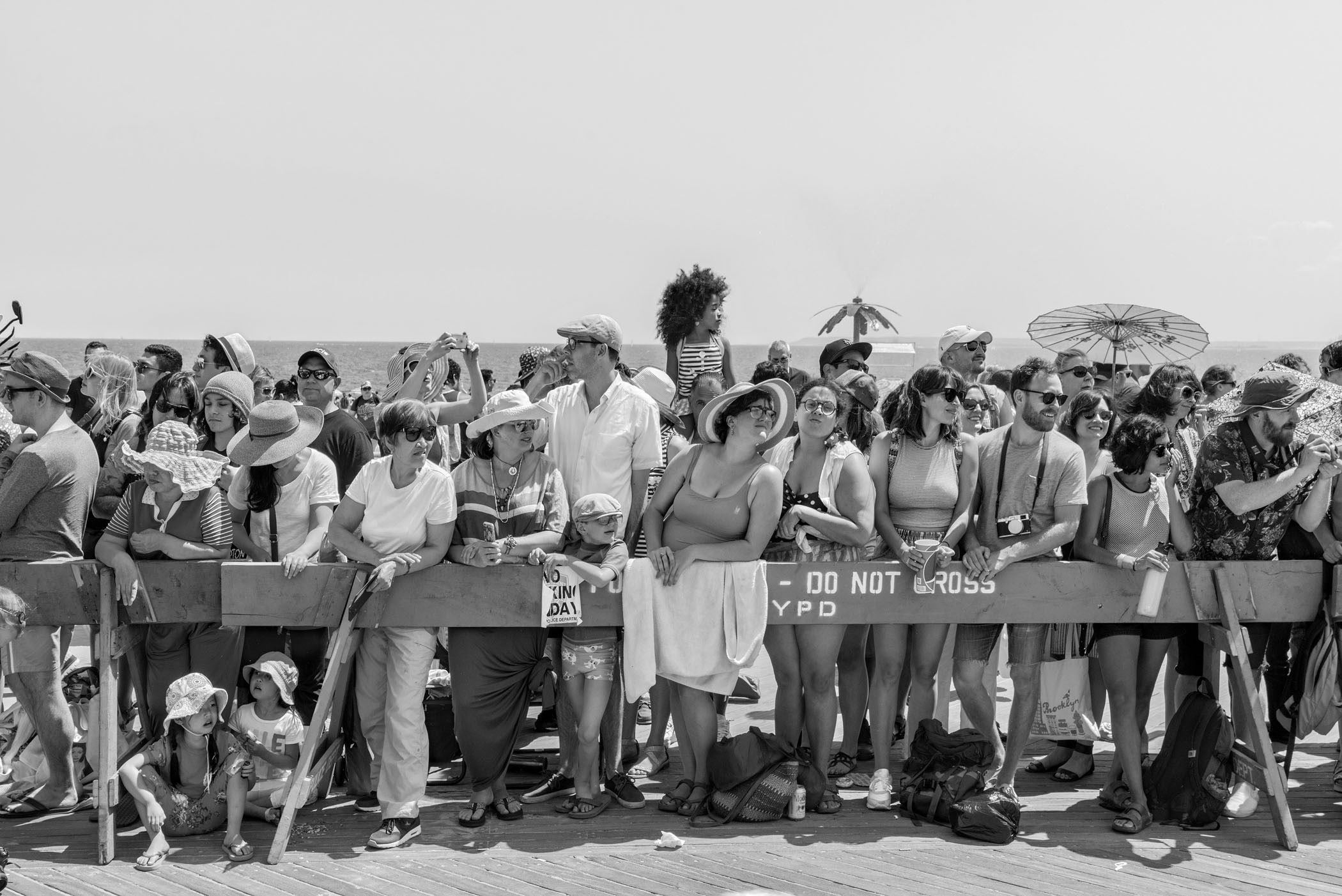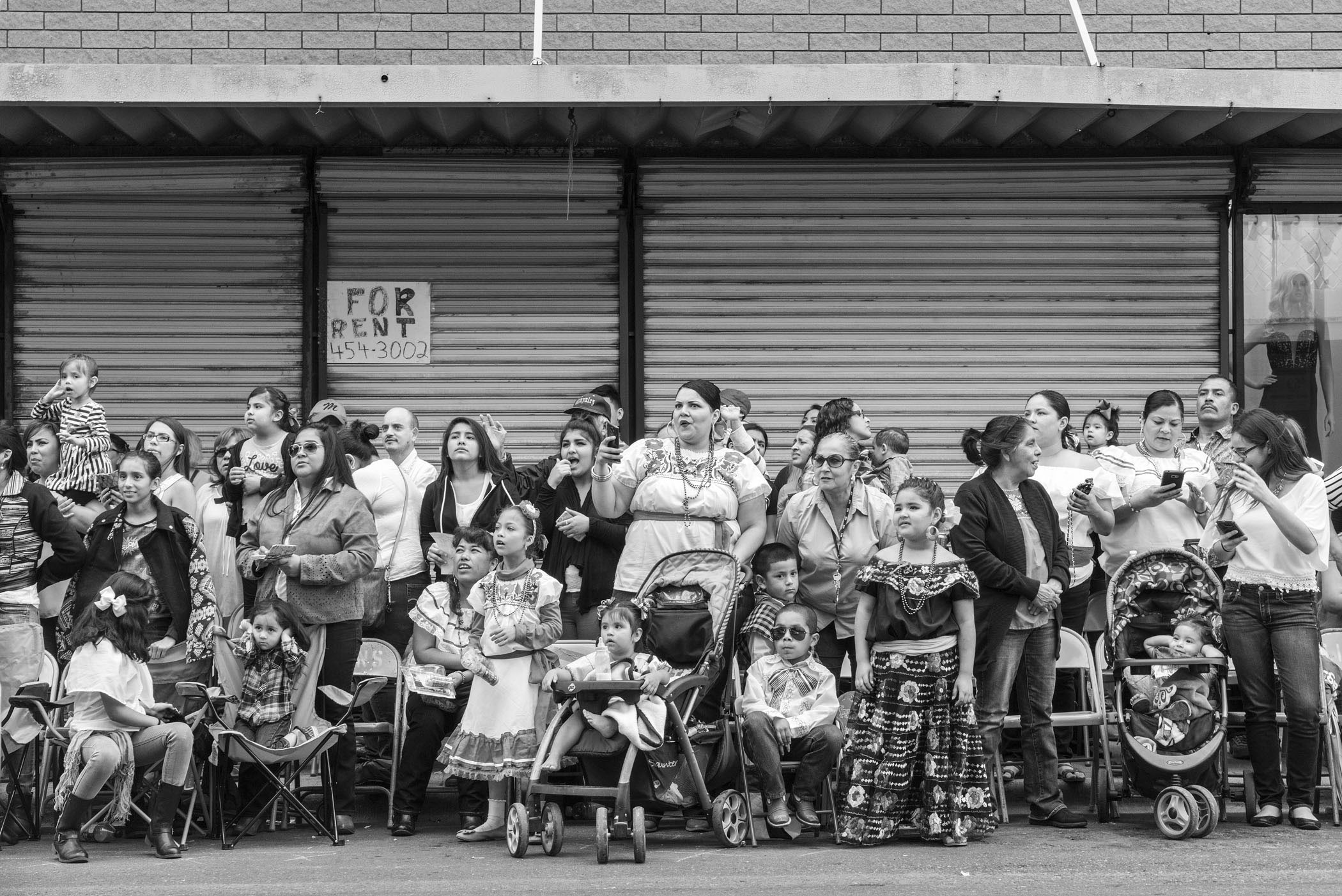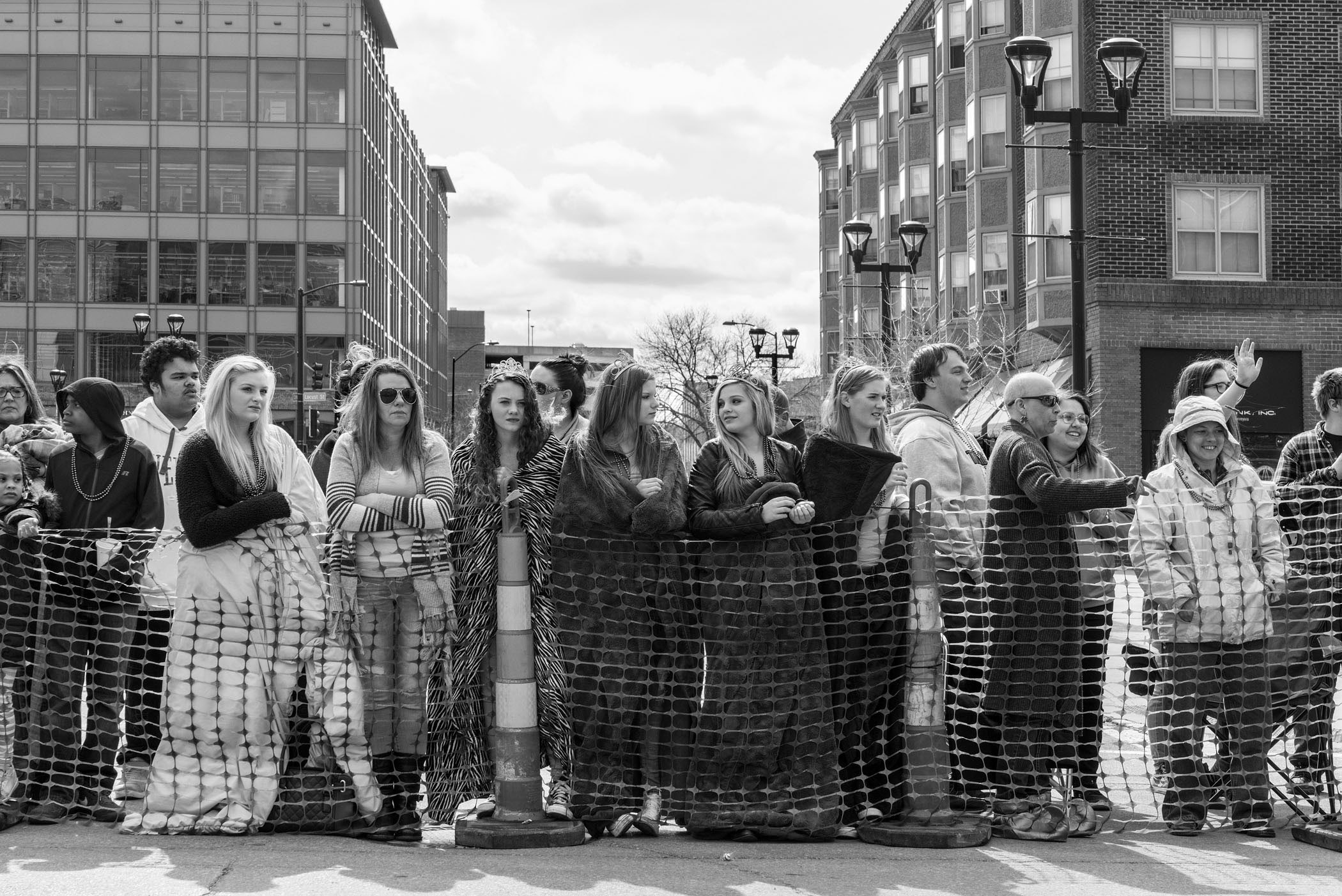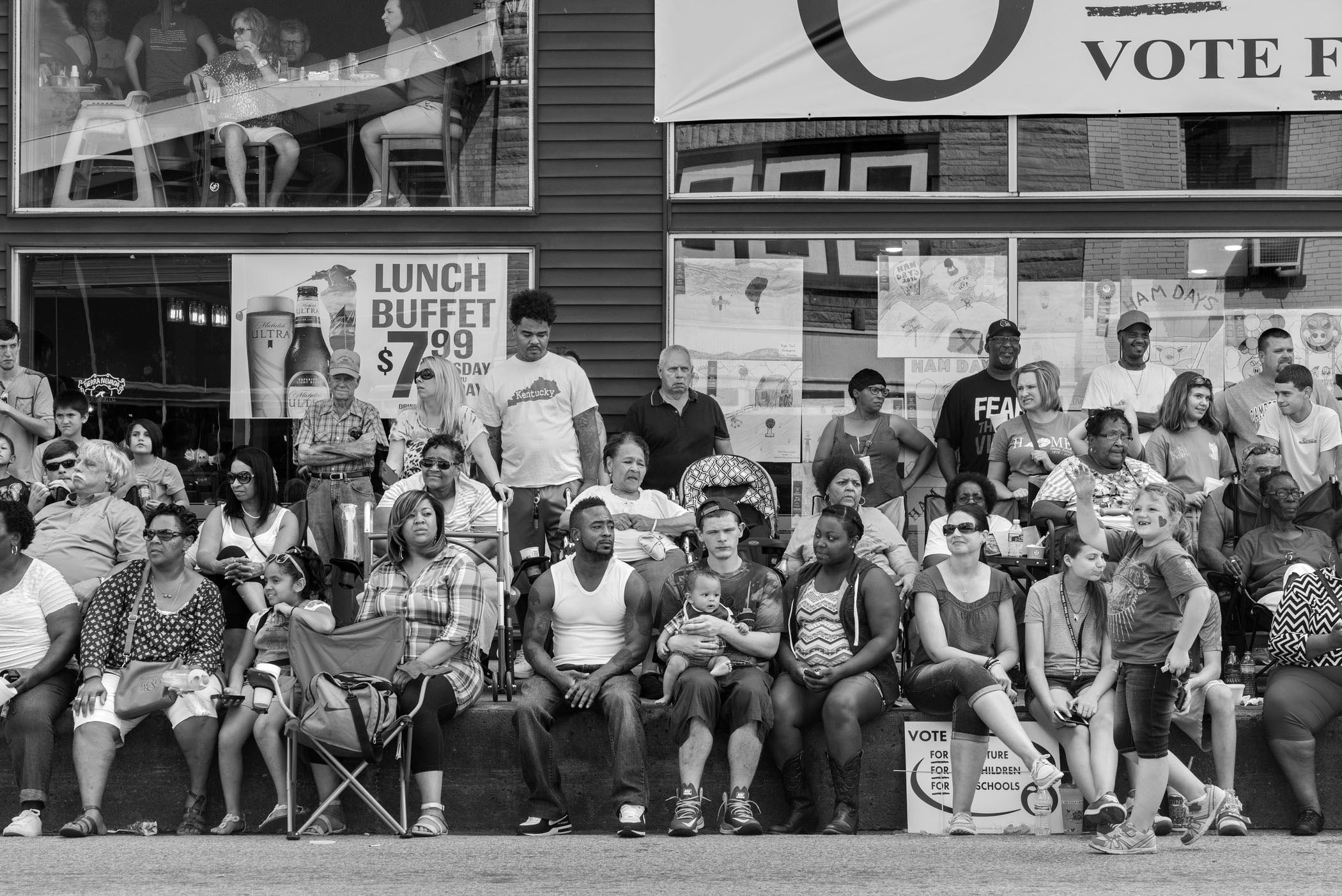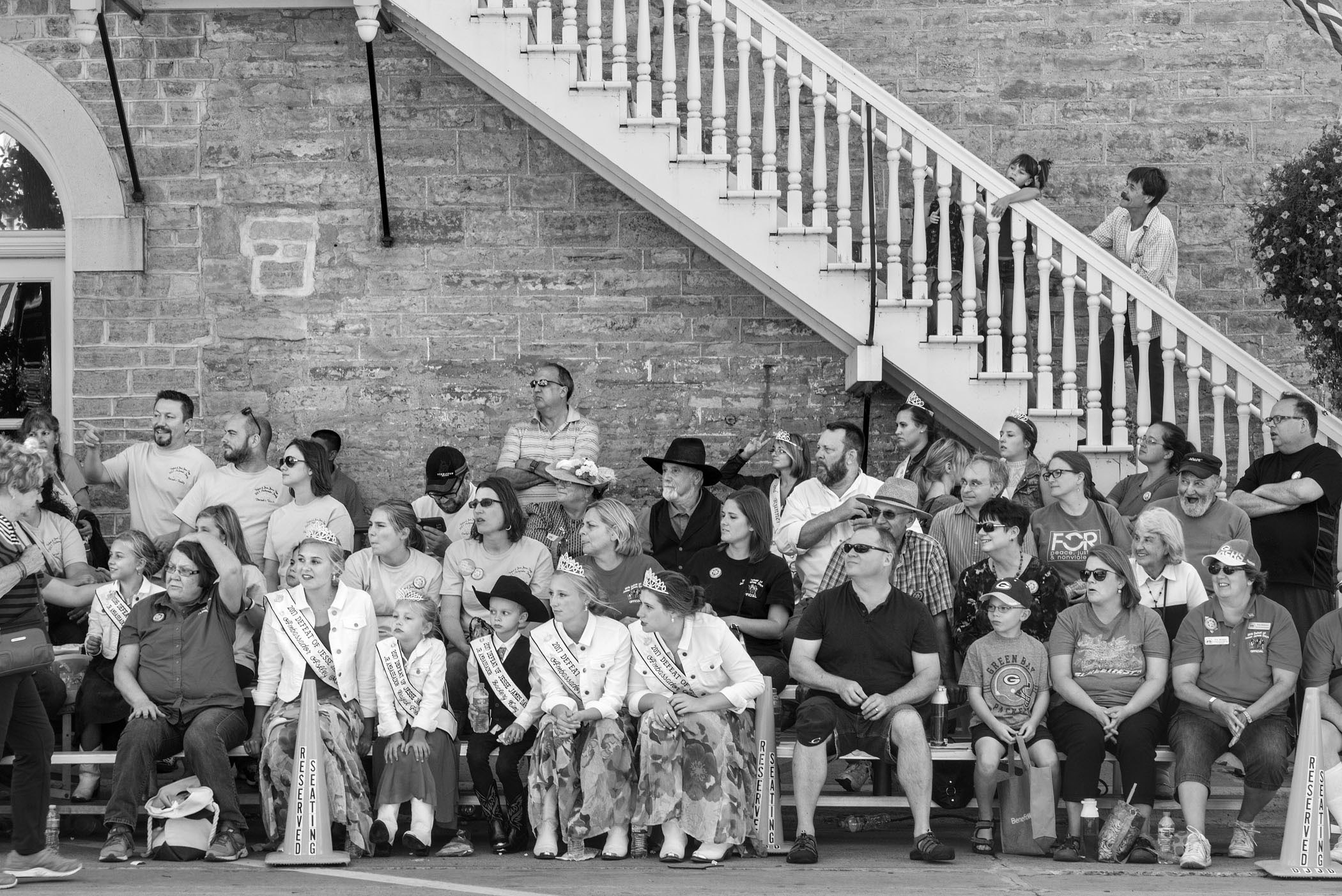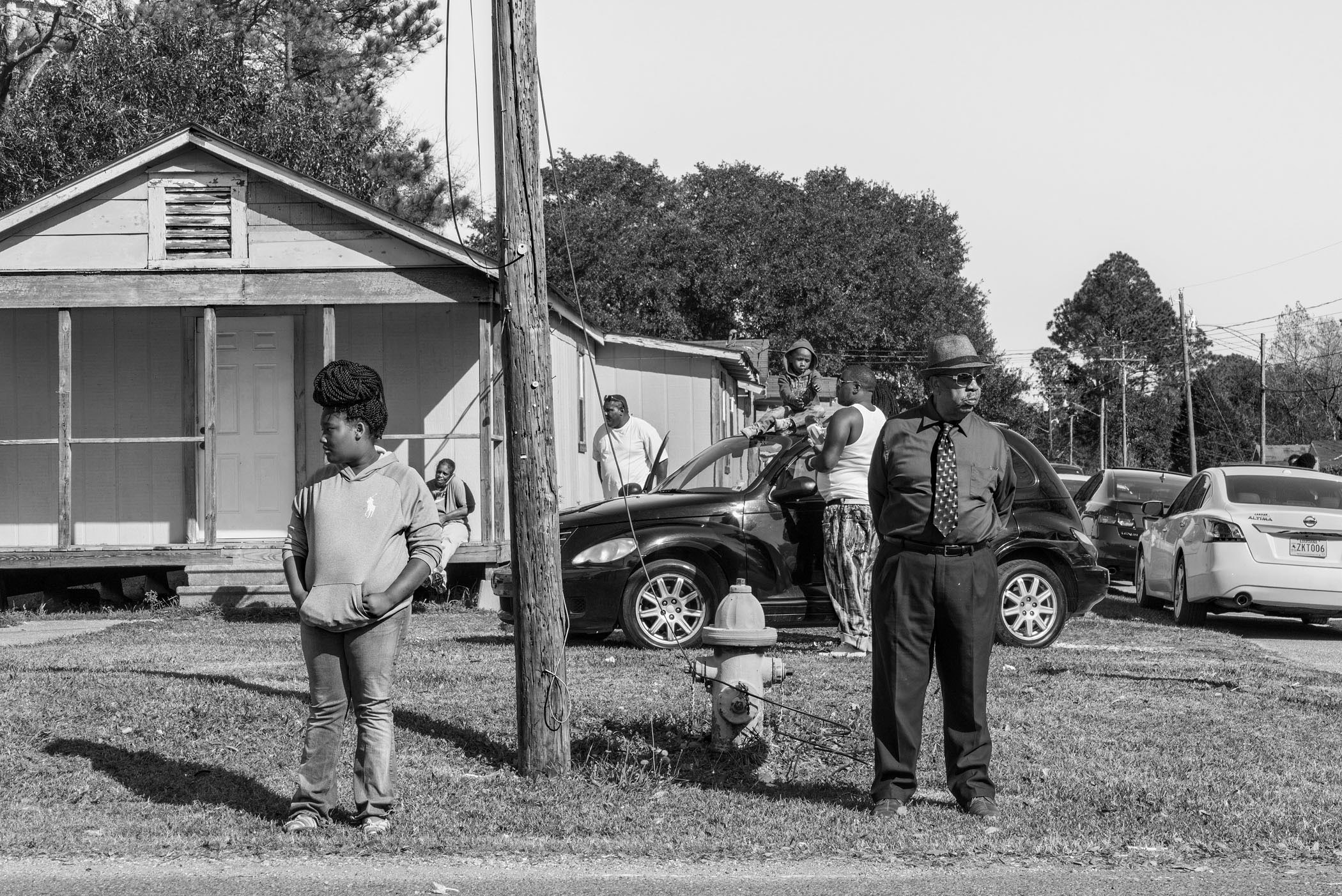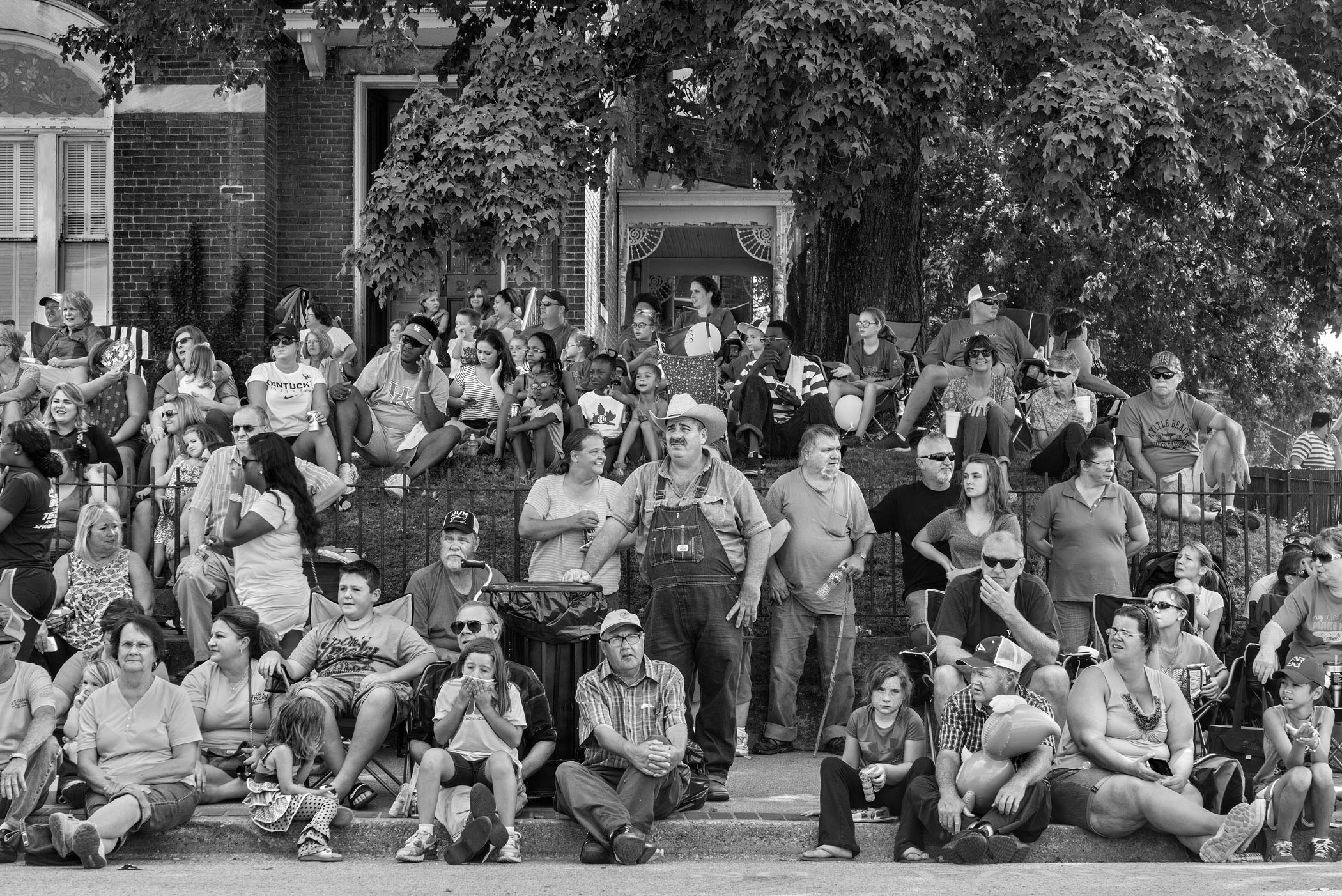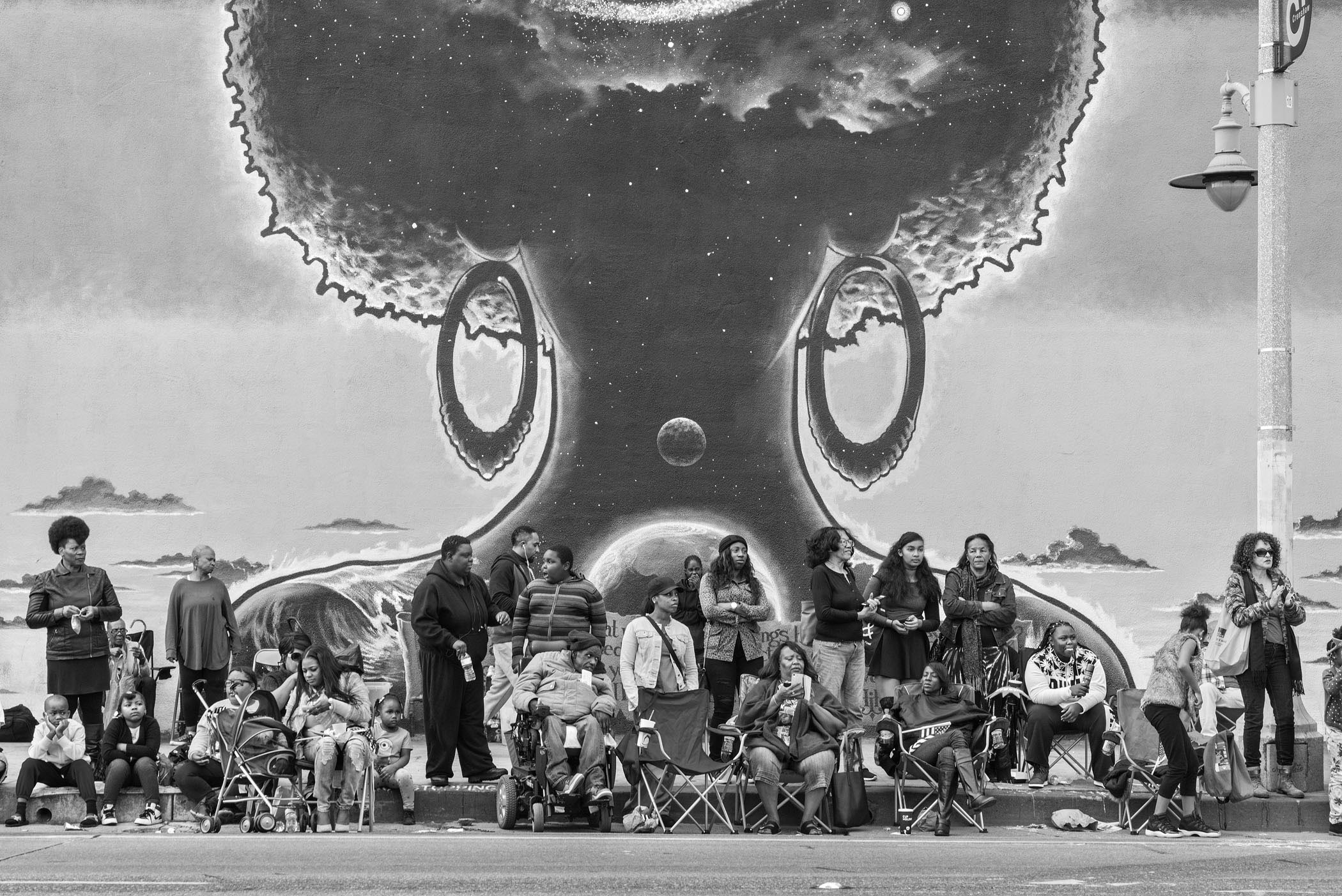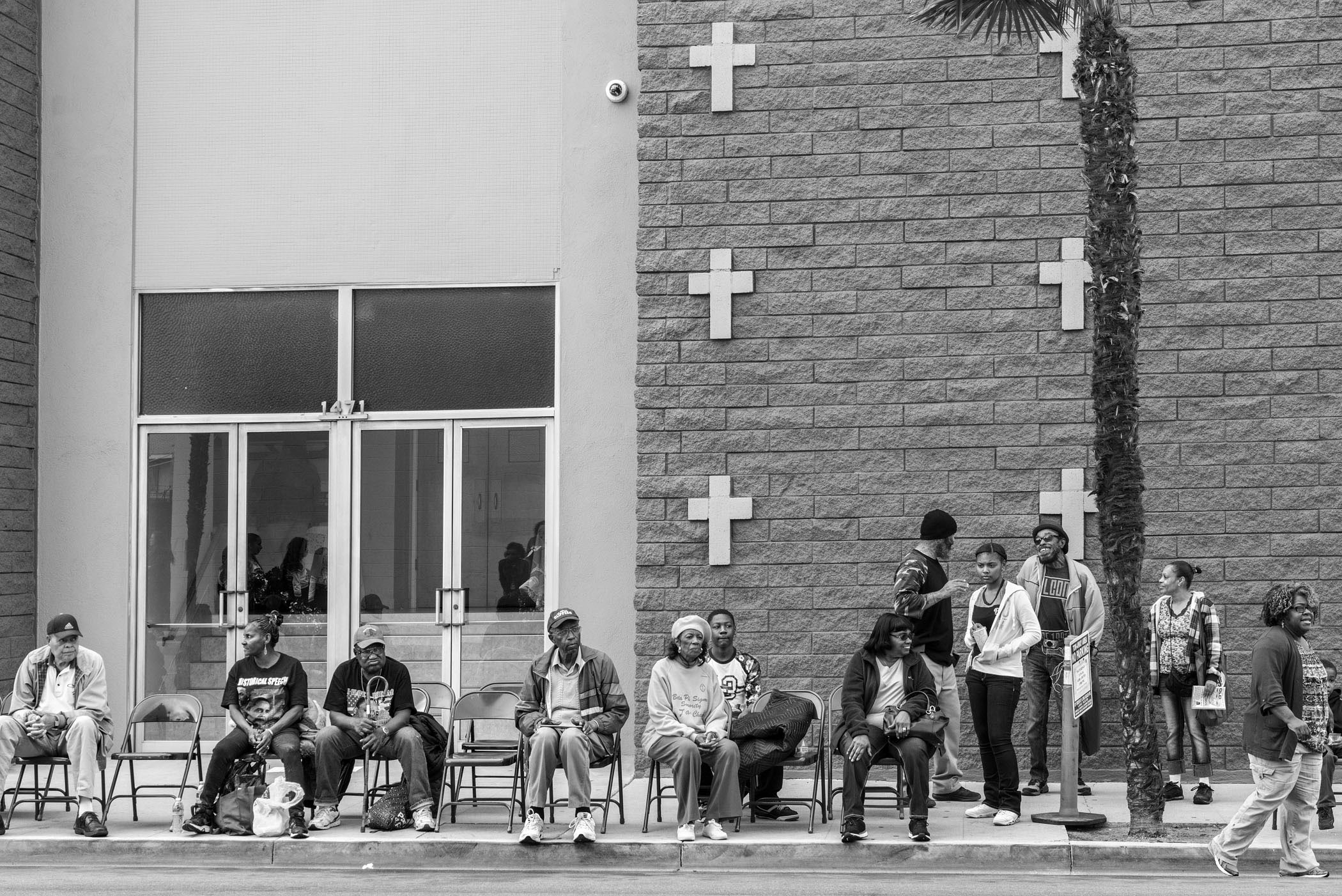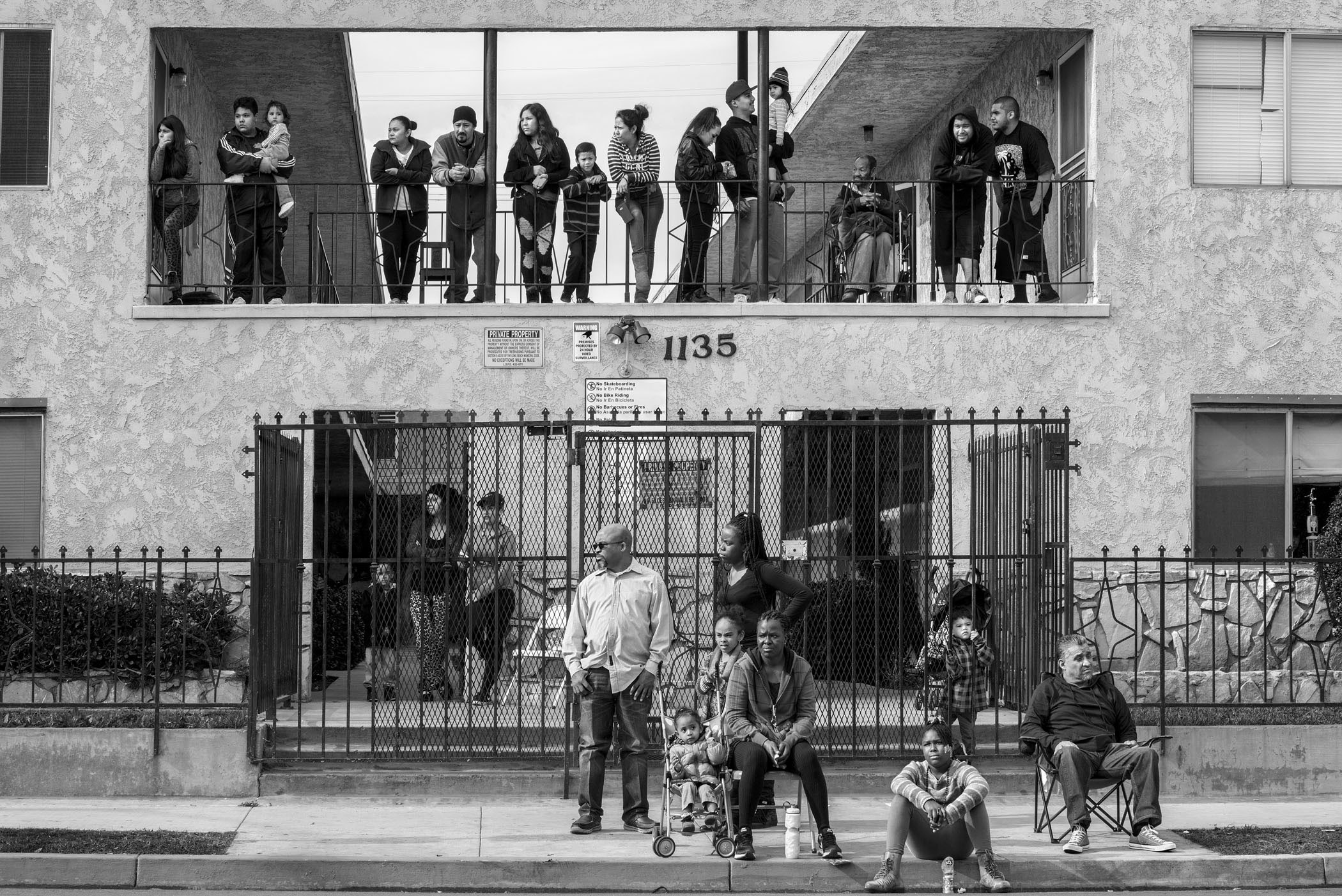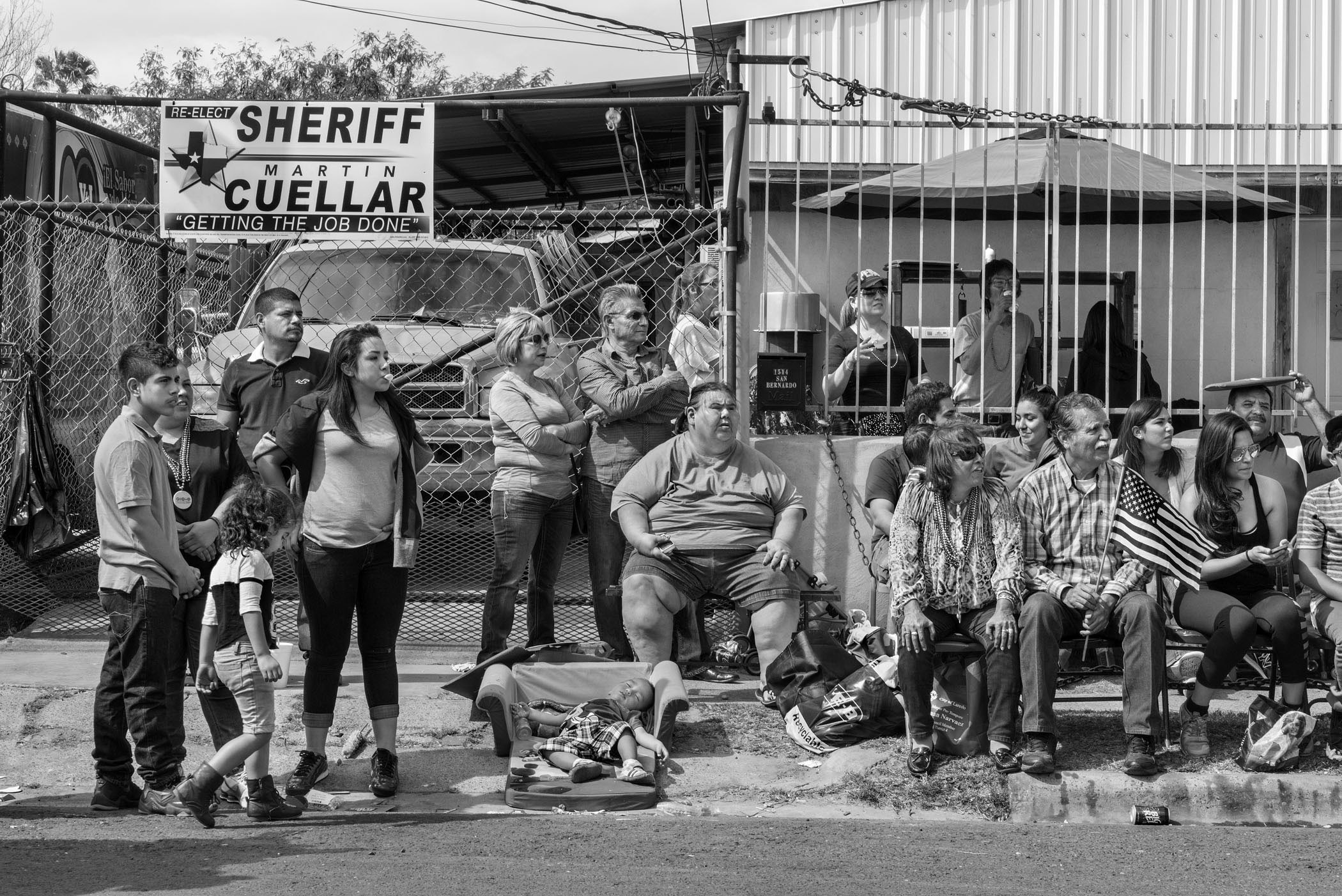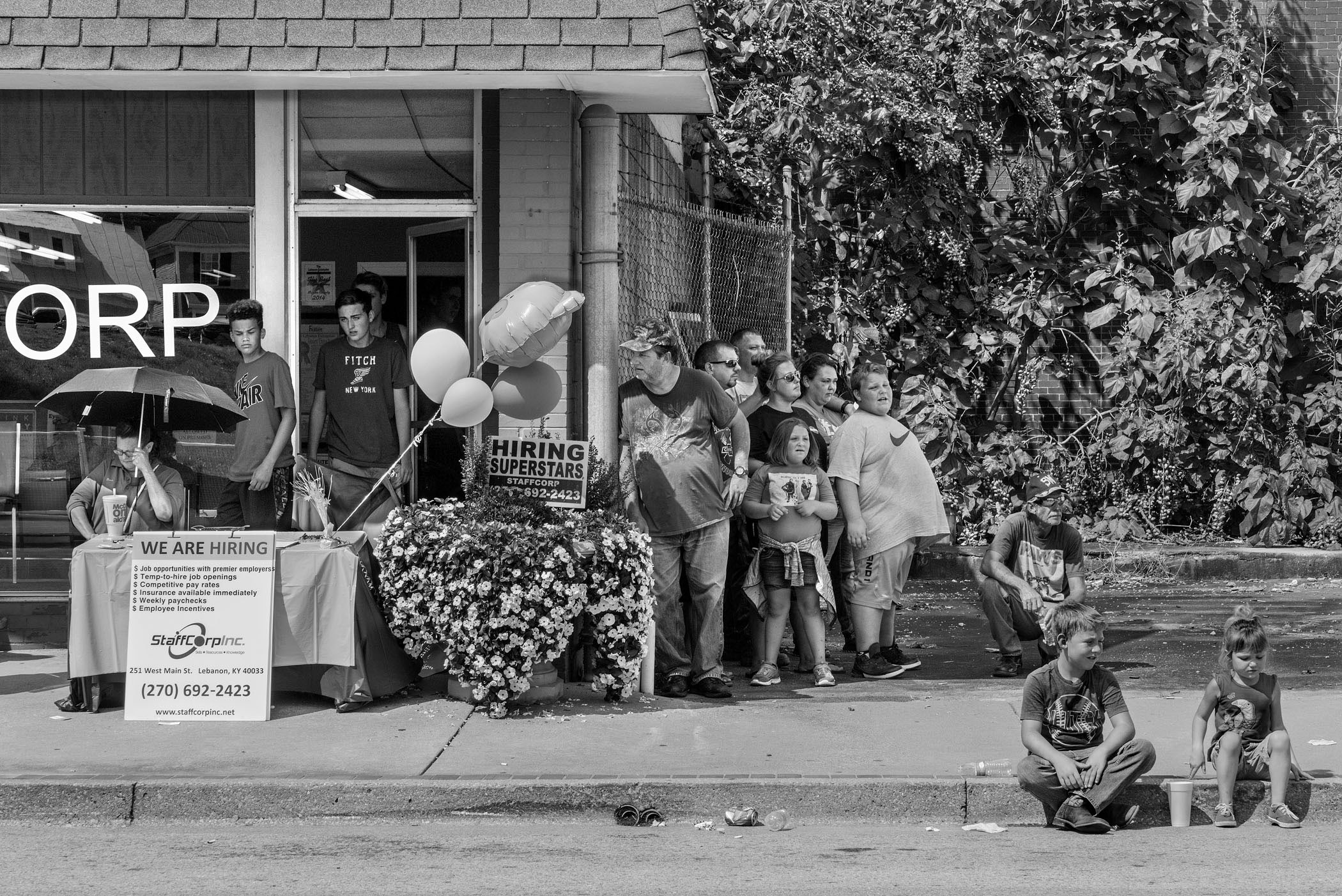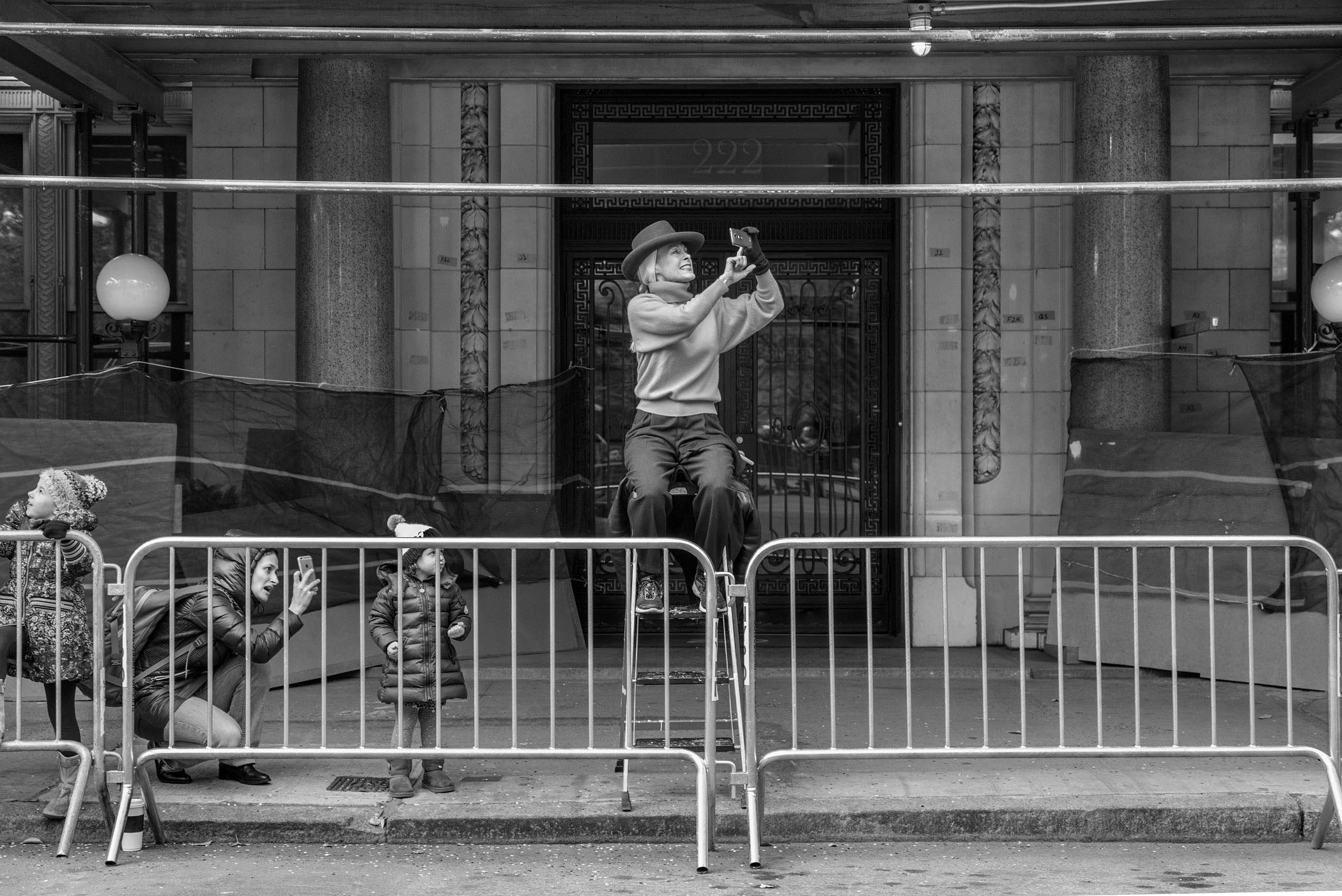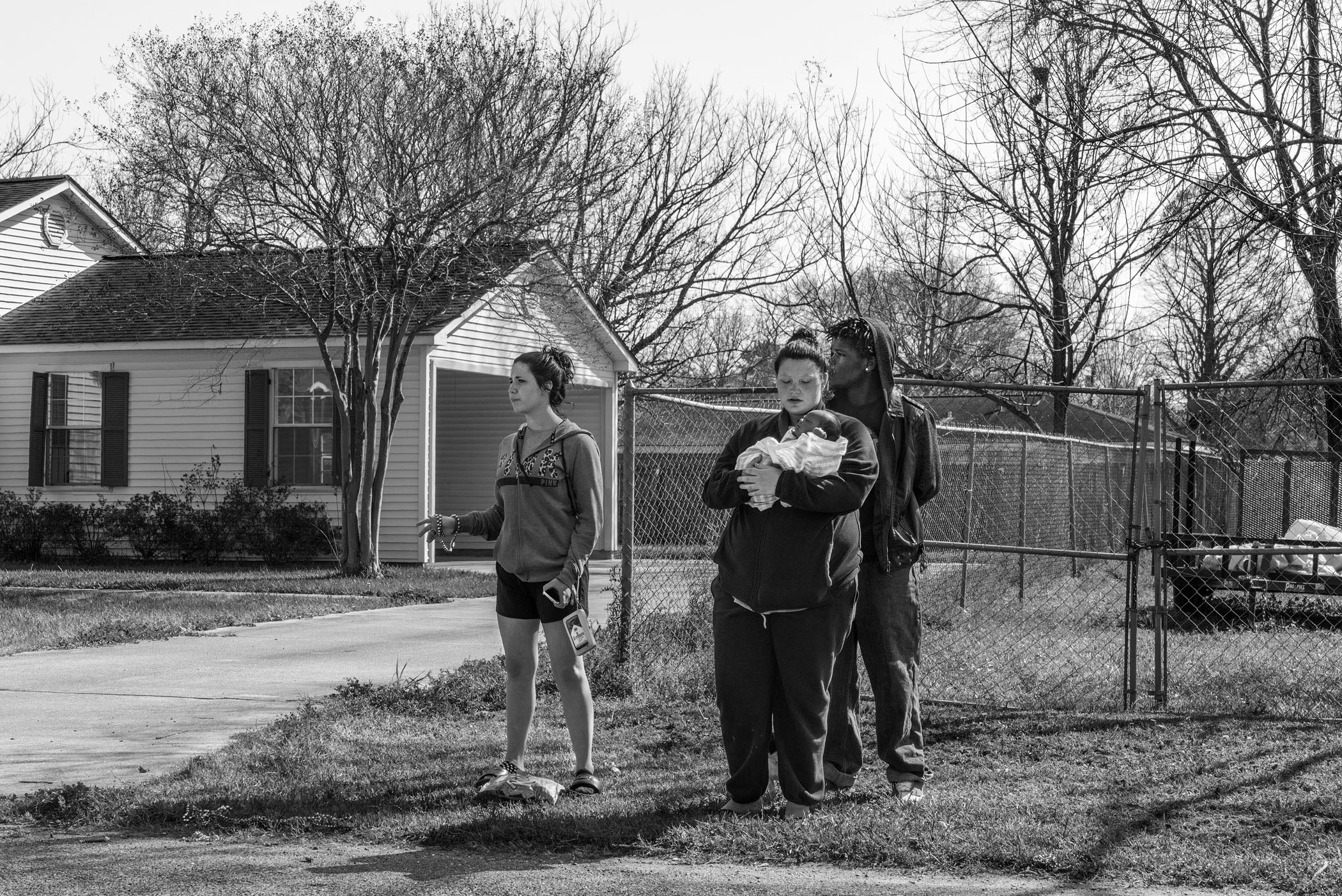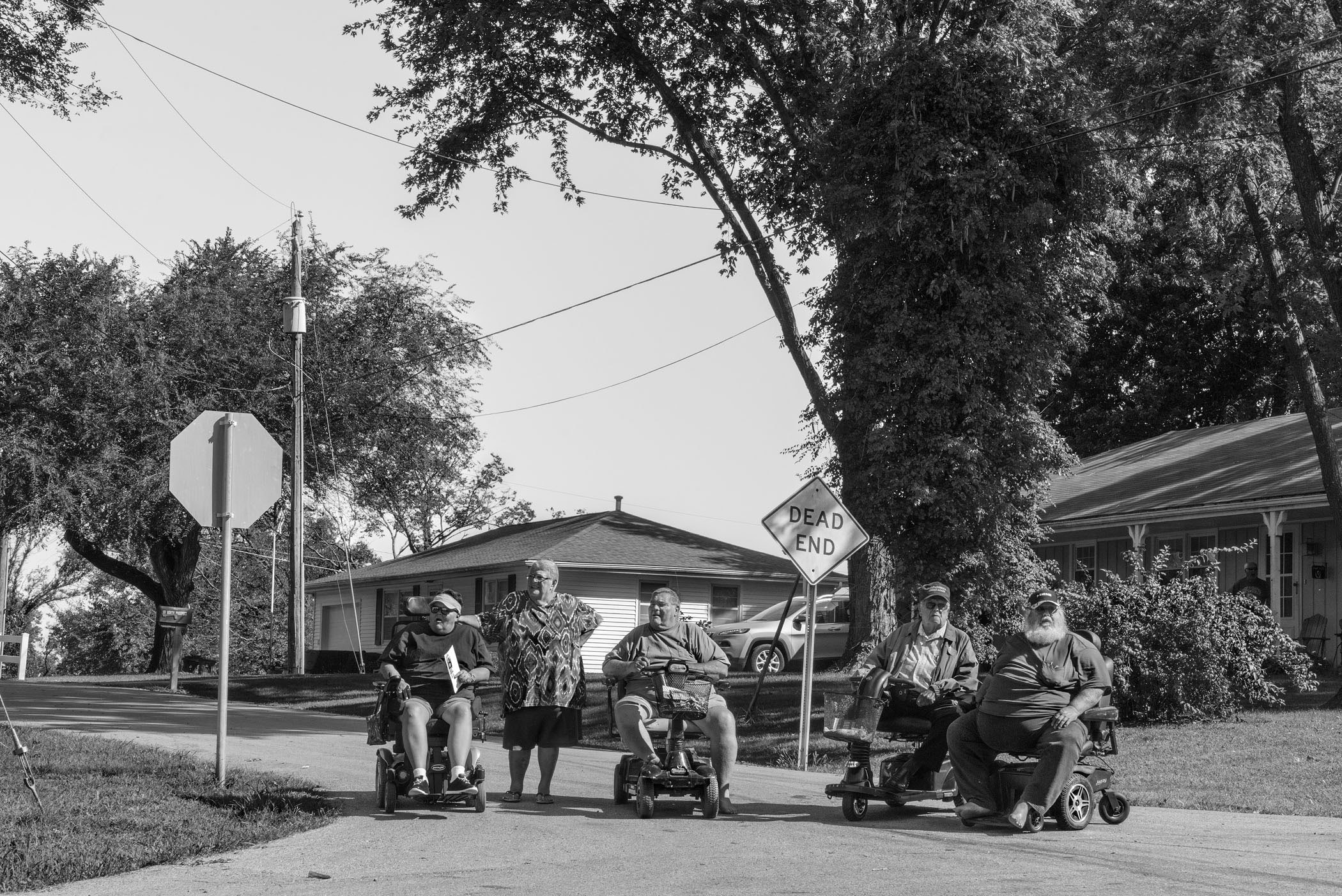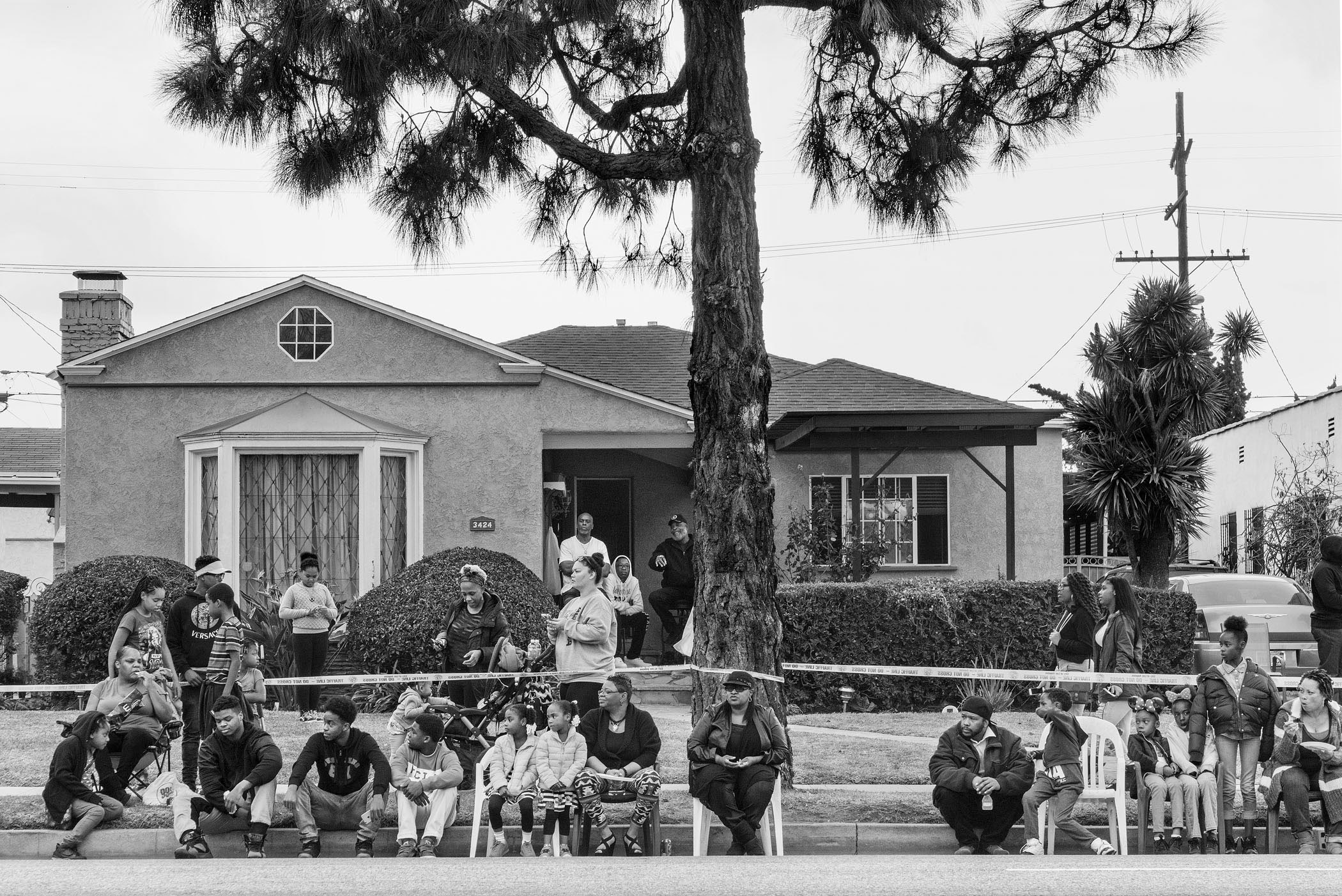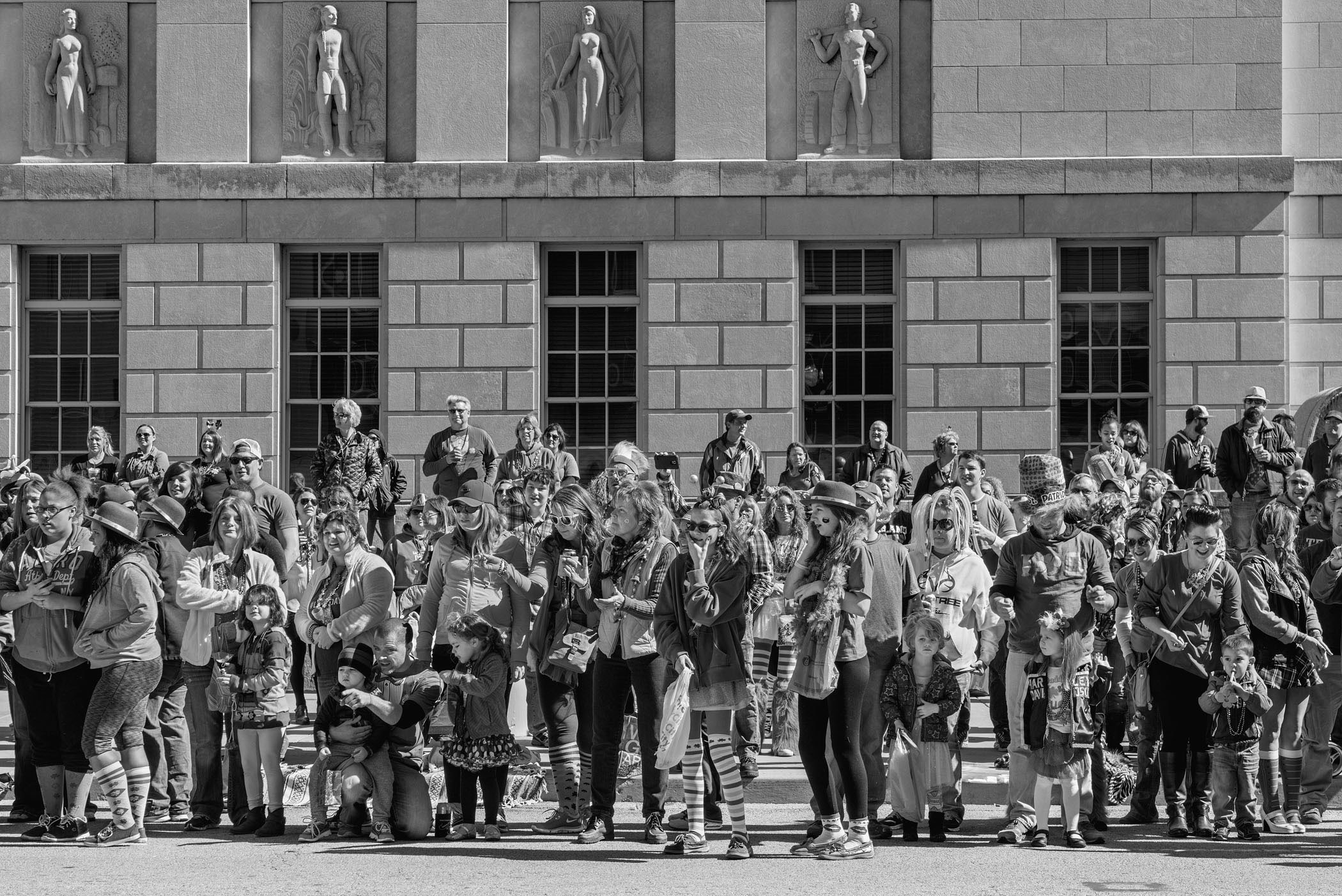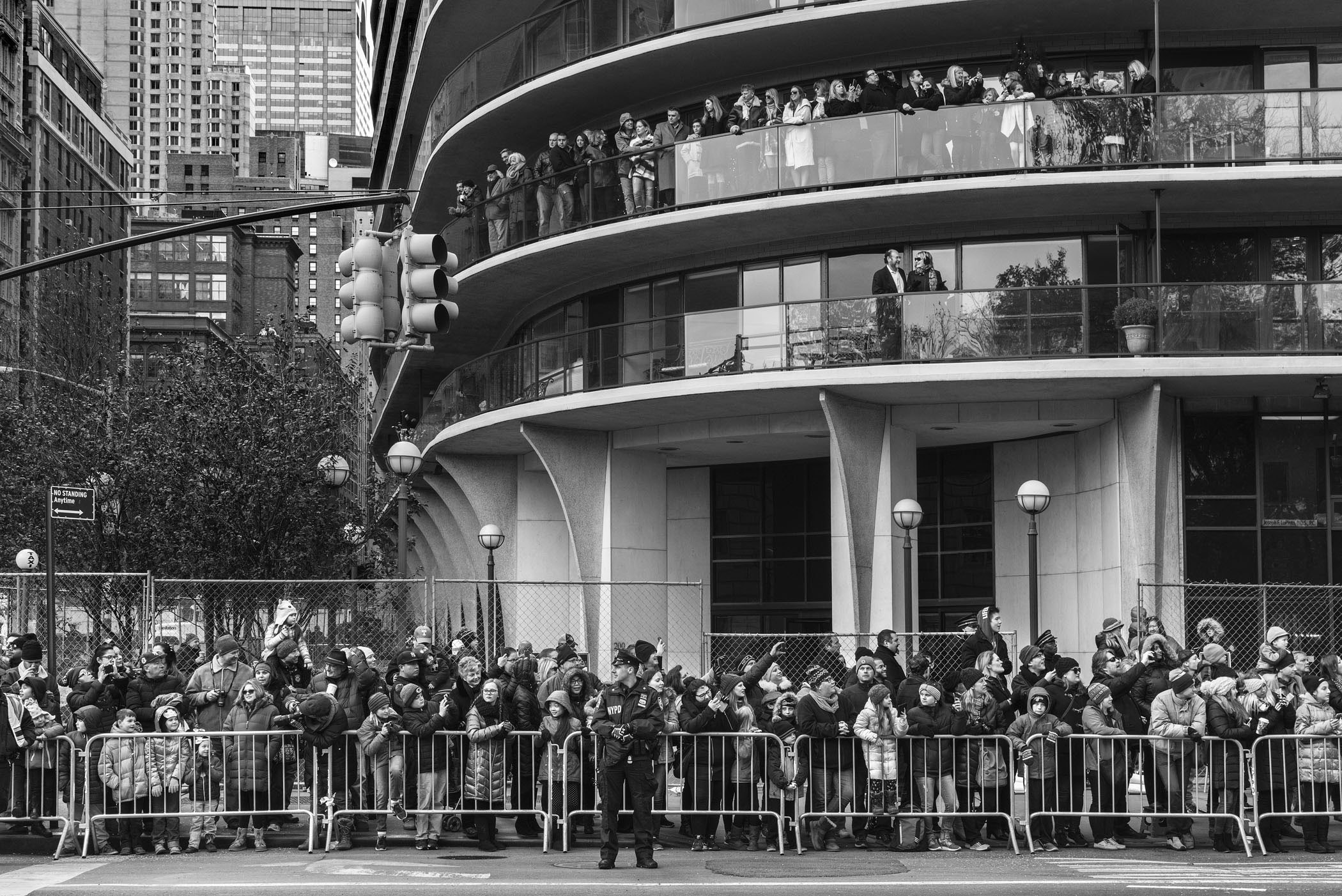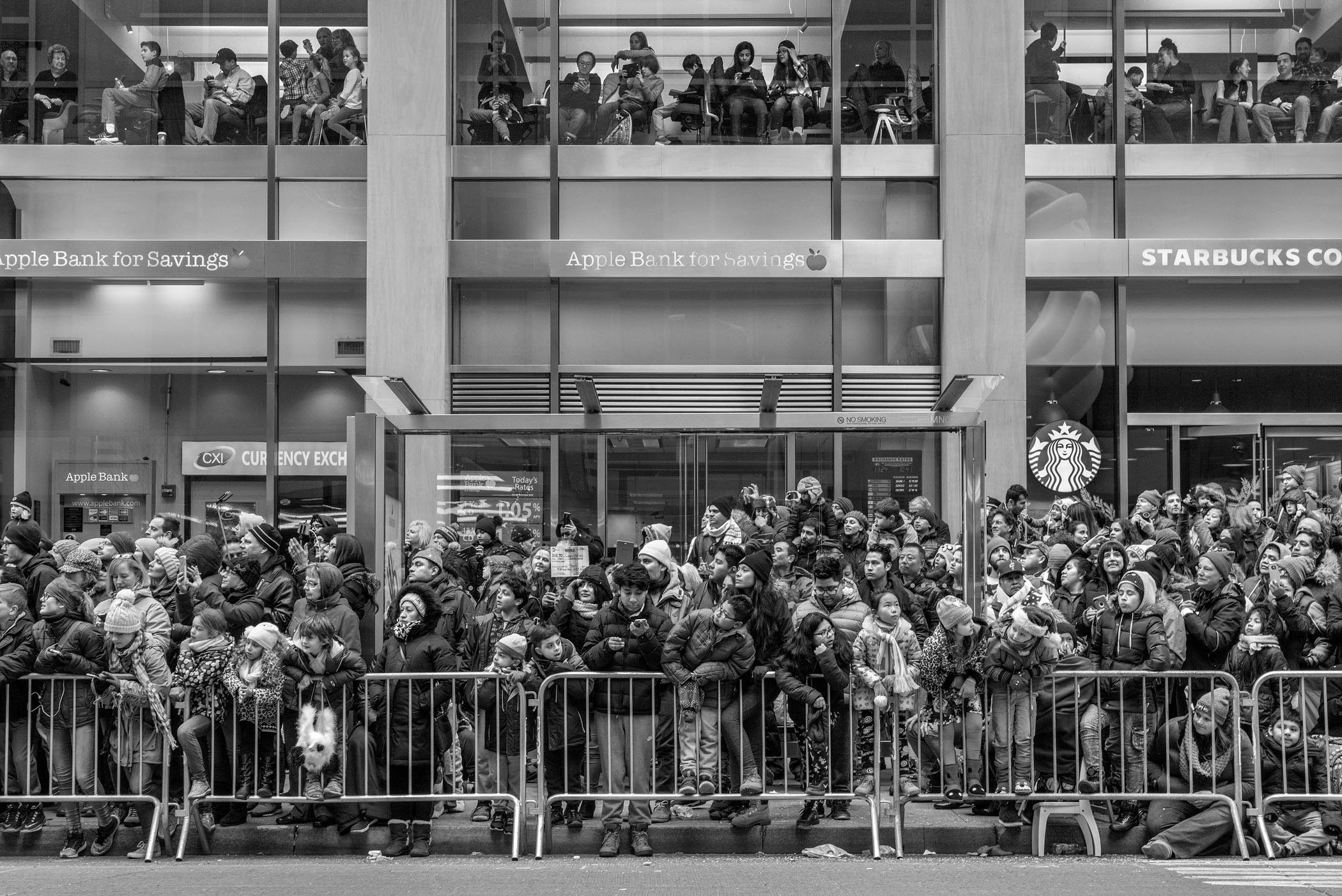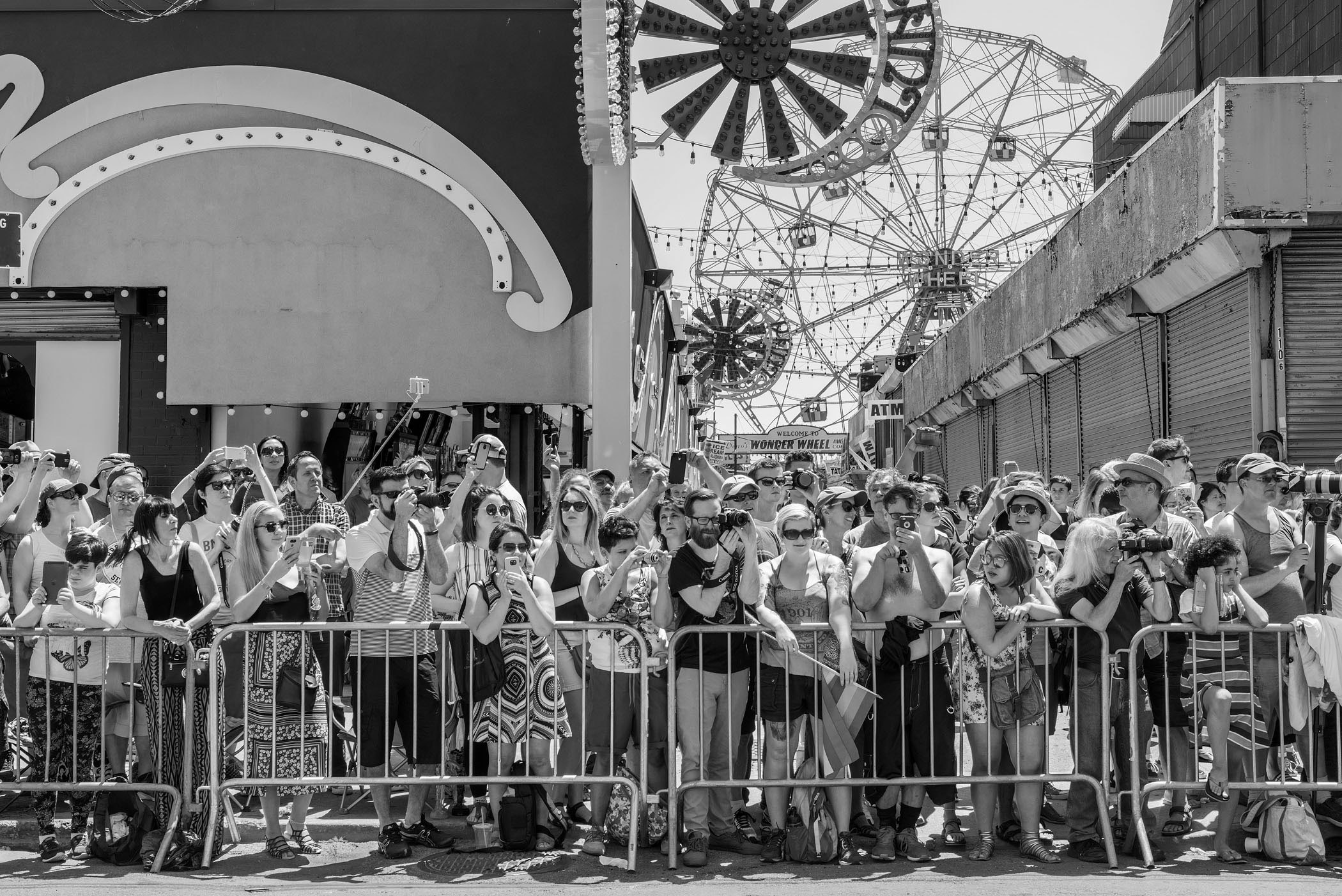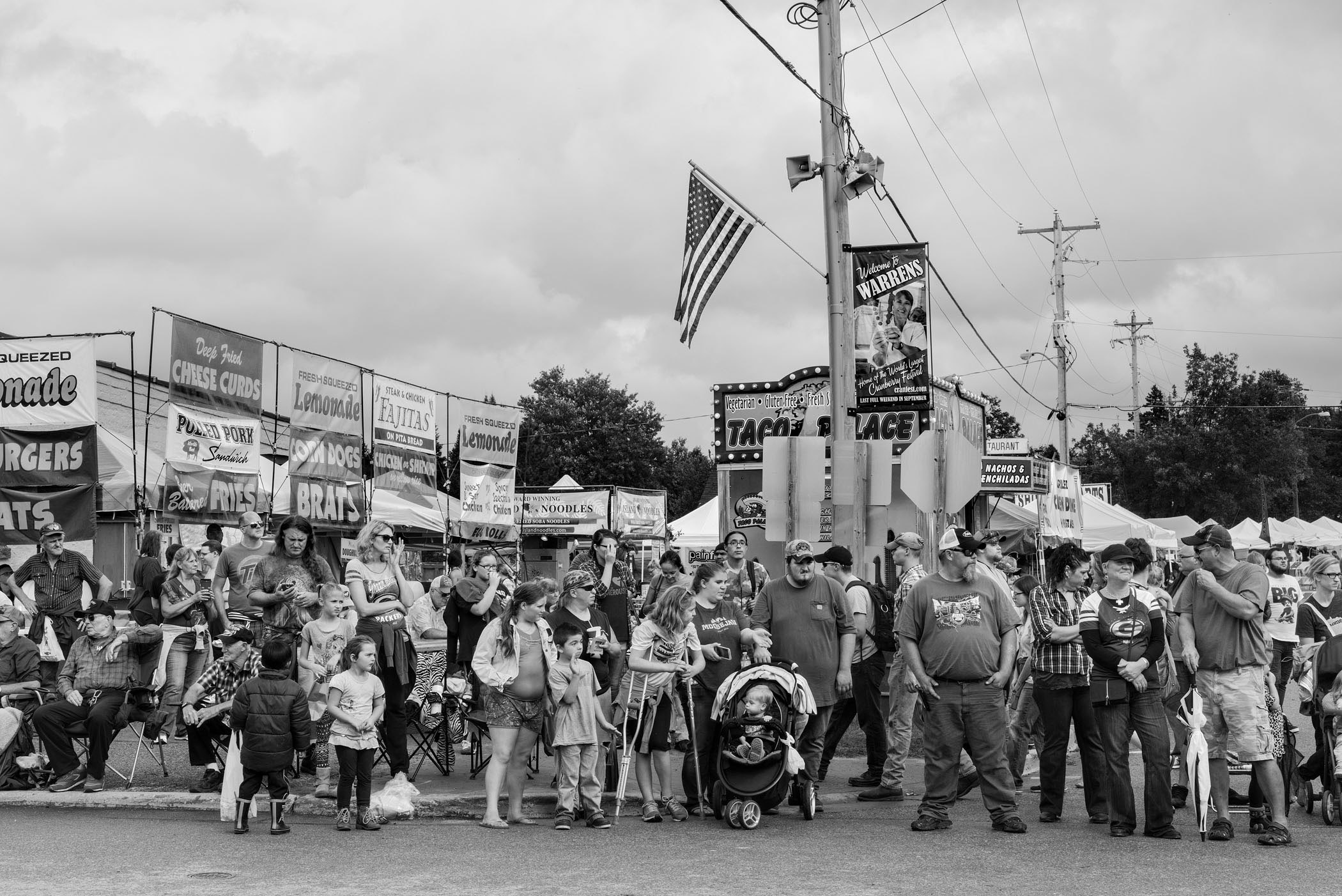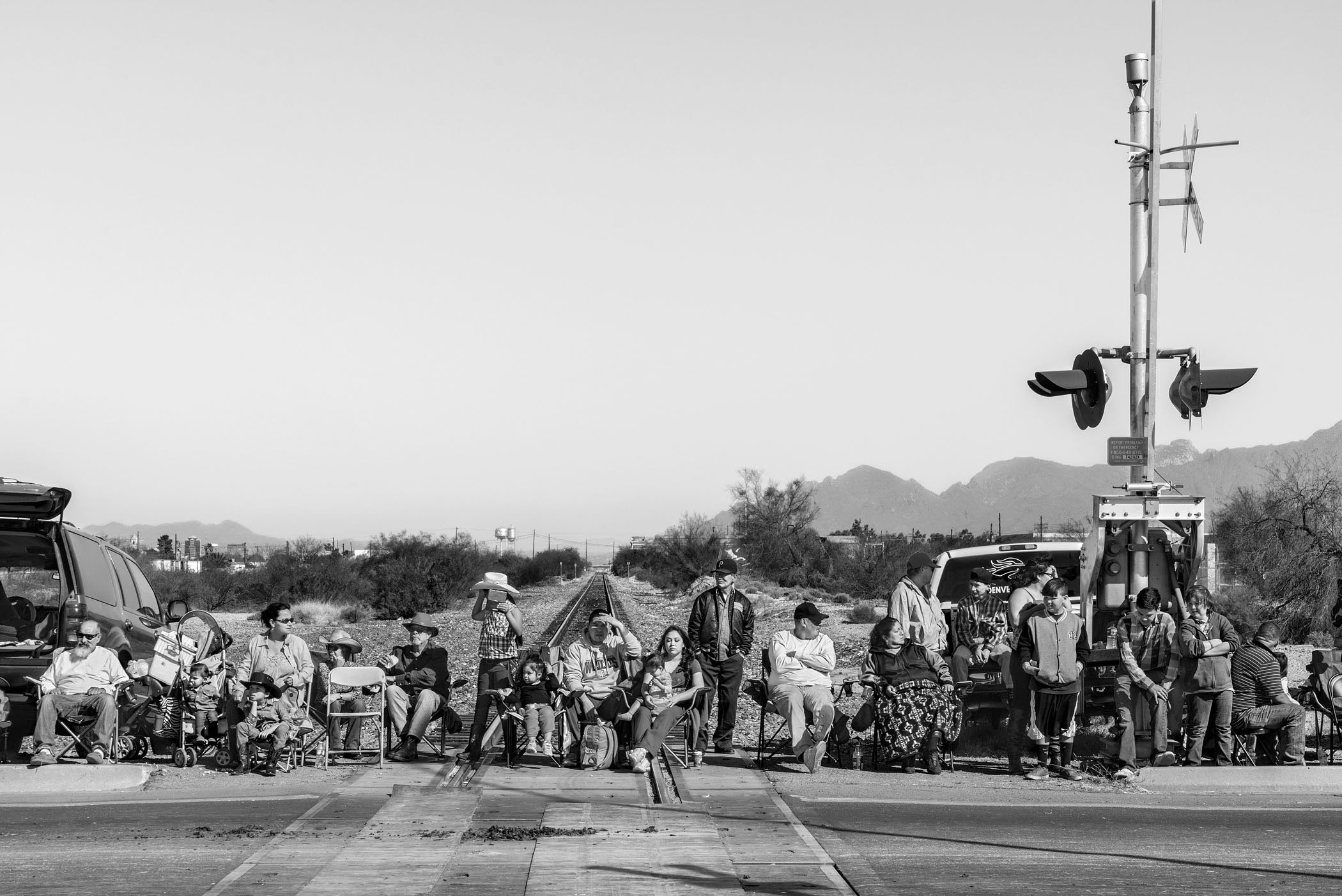What is a parade?
Here is one definition: A large number of people walking or in vehicles, all going in the same direction, usually as part of a public celebration of something. By this measure, it would seem the parade is precisely what is absent from George Georgiou’s photographs, although it is implied.
If we take another definition – A series of people or things that appear one after the other – then these images, sequenced across pages or along the walls of an exhibition, certainly do form a parade of sorts. A parade of parade watchers, although what is being celebrated is not always clear.
Brockton Holiday parade. Brockton, Massachusetts
Between January and November 2016, Georgiou photographed spectators lining the streets of big cities and small towns across North America, as they watched or waited for parades.
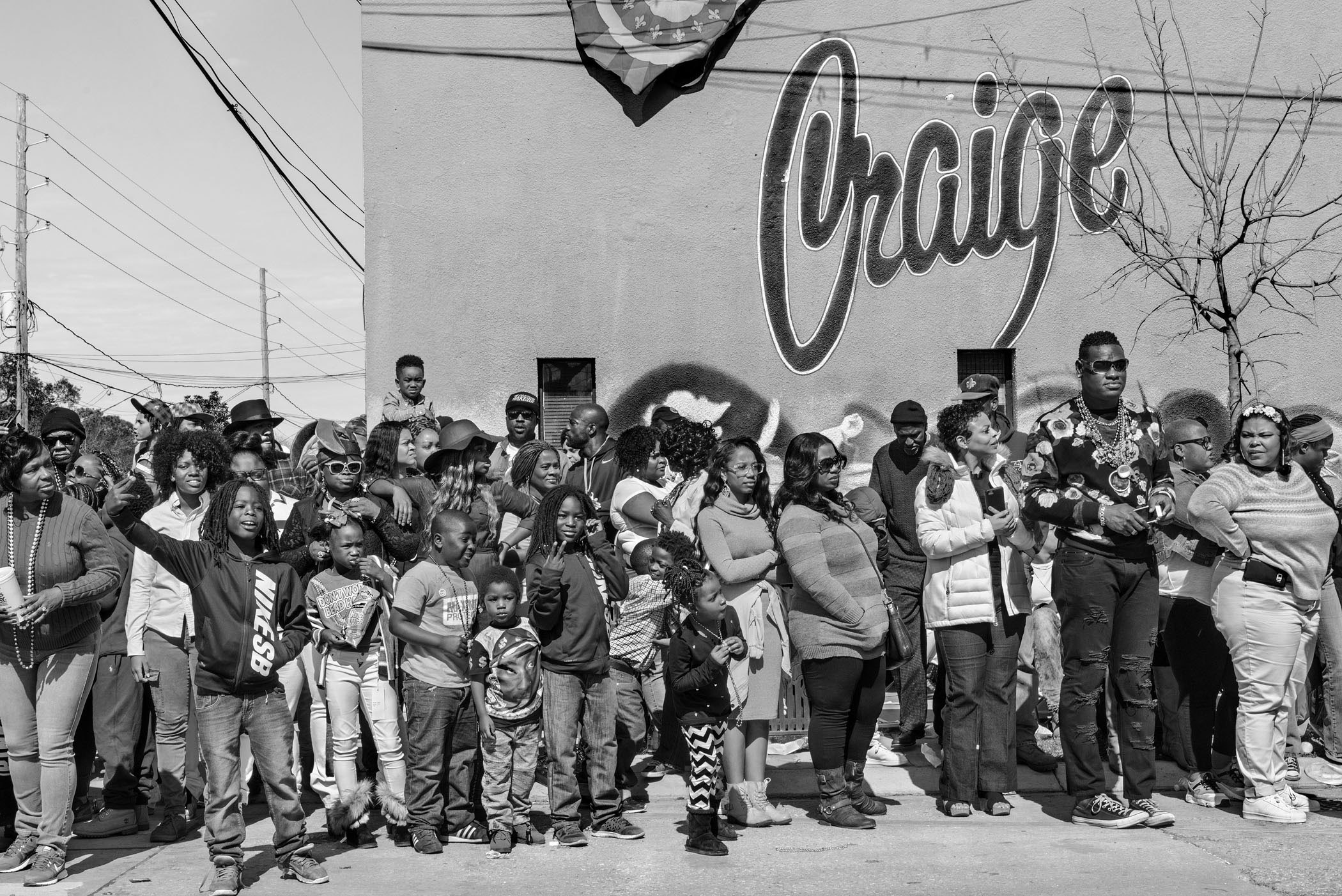
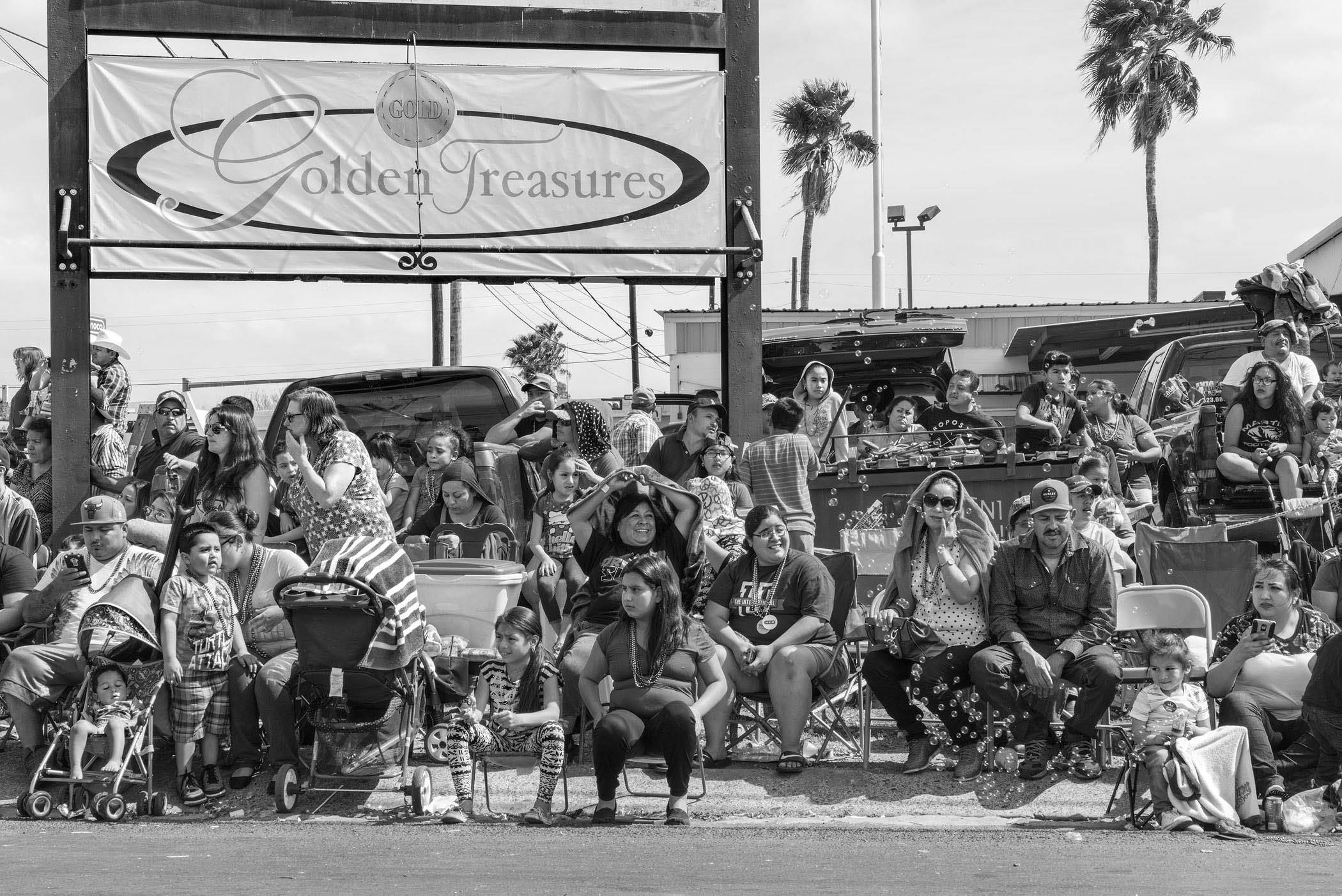
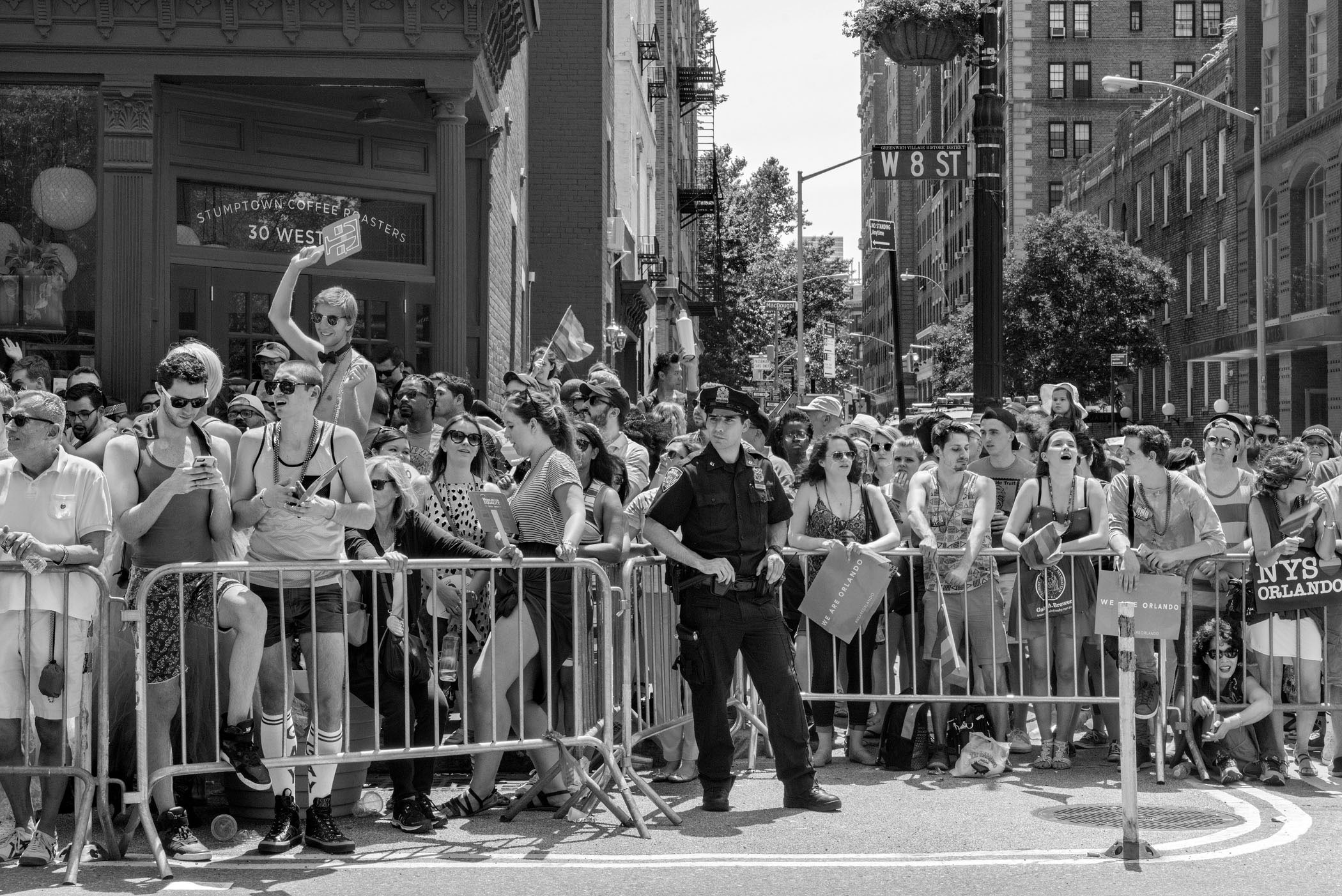
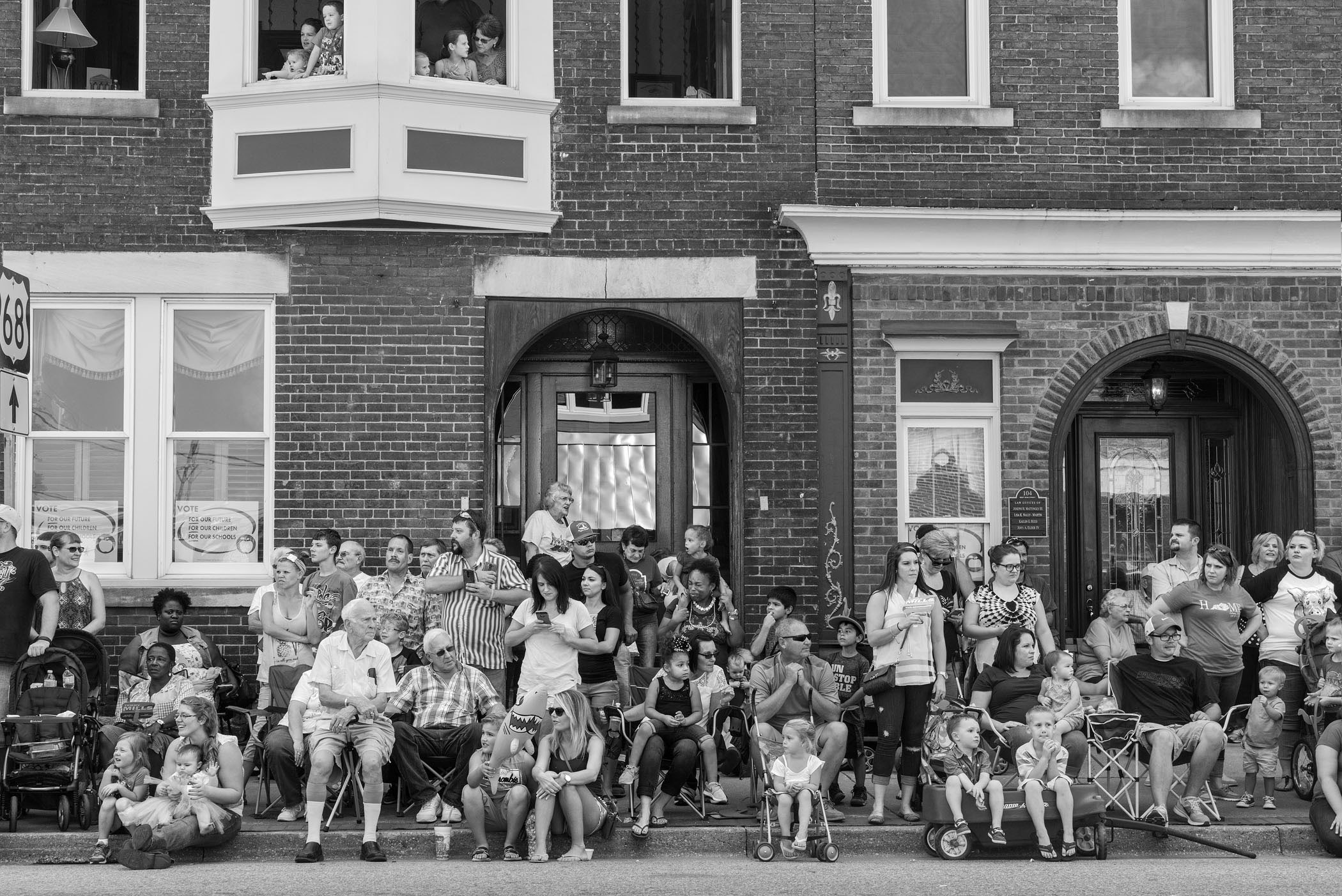
Mardi Gras, New Orleans, Louisiana * George Washington Day Parade, Ladero, Texas
Gay Pride, New York, New York * Marion County Country Ham Days. Lebanon, Kentucky.
Sometimes they formed crowds; sometimes they were just a scattering of people. Fourteen different states, twenty-four cities, and twenty-six parades.
From the very first that he photographed, a Martin Luther King parade in Long Beach, California, the visual approach was simple and eloquent.
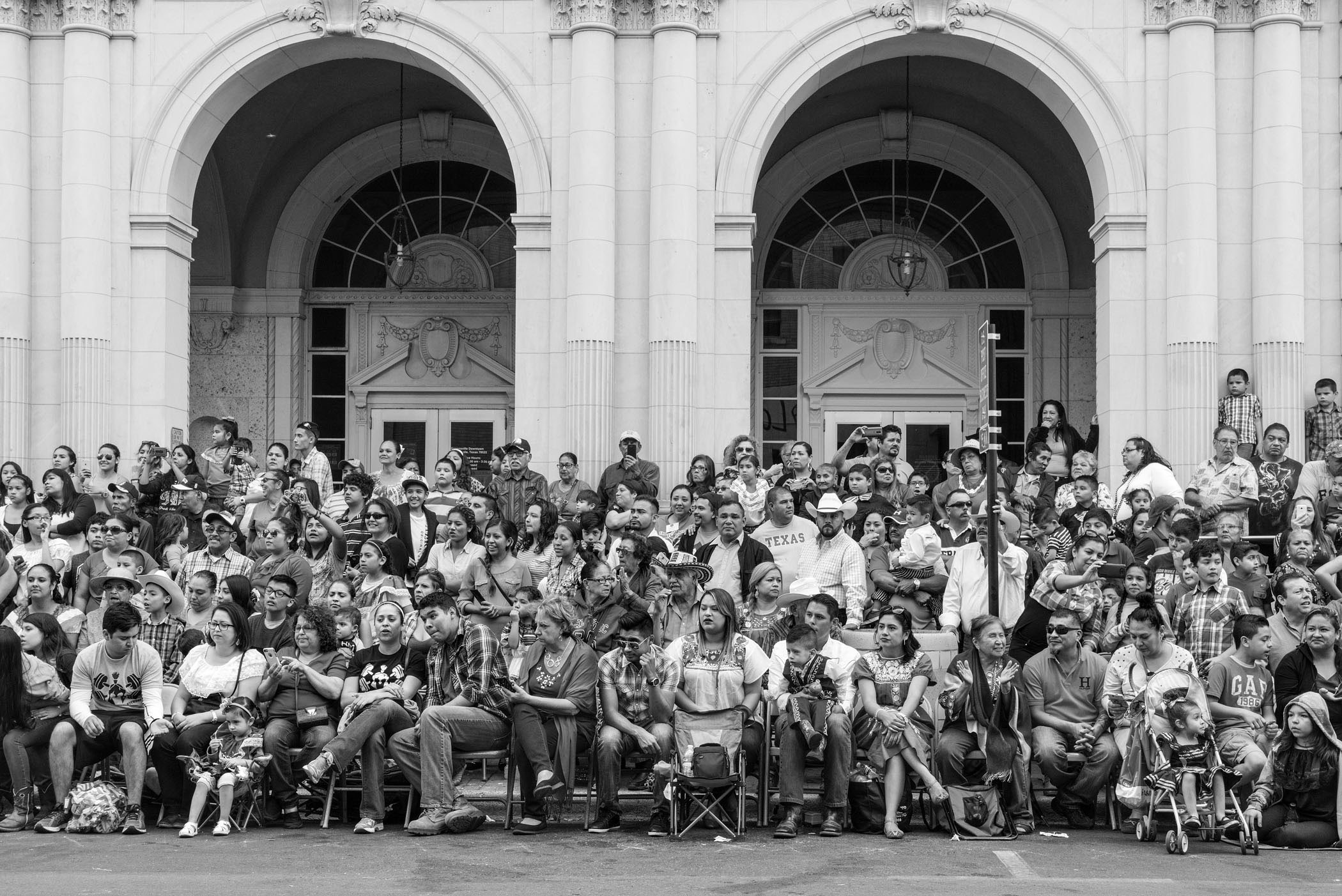
Charro Days Parade. Brownsville, Texas.
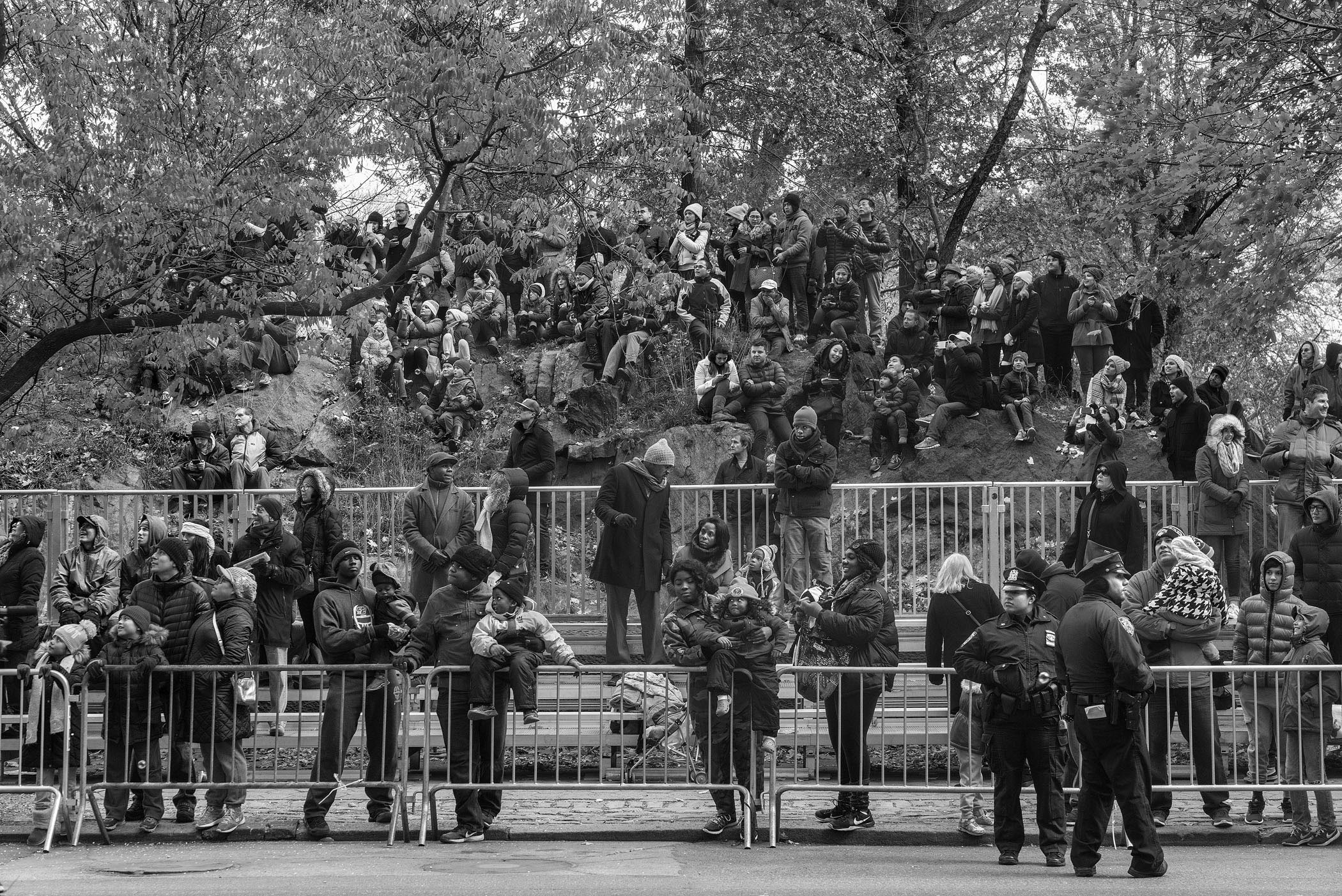
Macy's Thanksgiving Day Parade, New York.
Standing on one side of the route, Georgiou would wait for a clear view to photograph a section of the group on the other. The New York Times saw some early examples, understood their compelling power, and immediately supported the project. This allowed Georgiou to make several extended trips from his home in England.
Cranberry Festival Parade, Warrens, Wisconsin.
Human vision cannot take in all of a complex scene in the moment, but a camera can.
George Washington Day Parade, Ladero, Texas.
Georgiou would look at the overall compositions in front of him, at little arrangements of people within the frame, and at fleeting gestures that caught his eye. But as with all his work, he is wise enough to accept the generosity of photography, that it offers more than he can see.
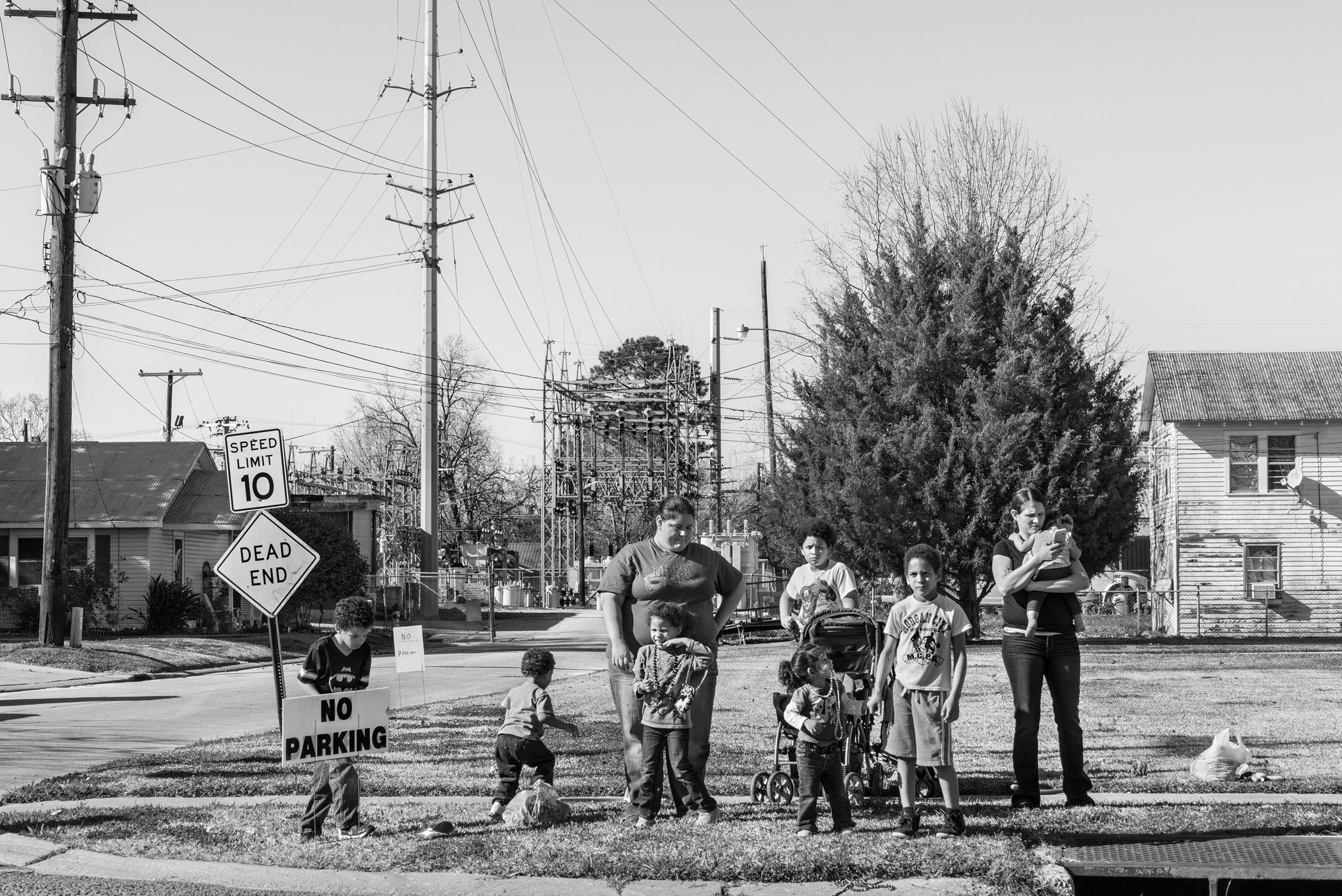
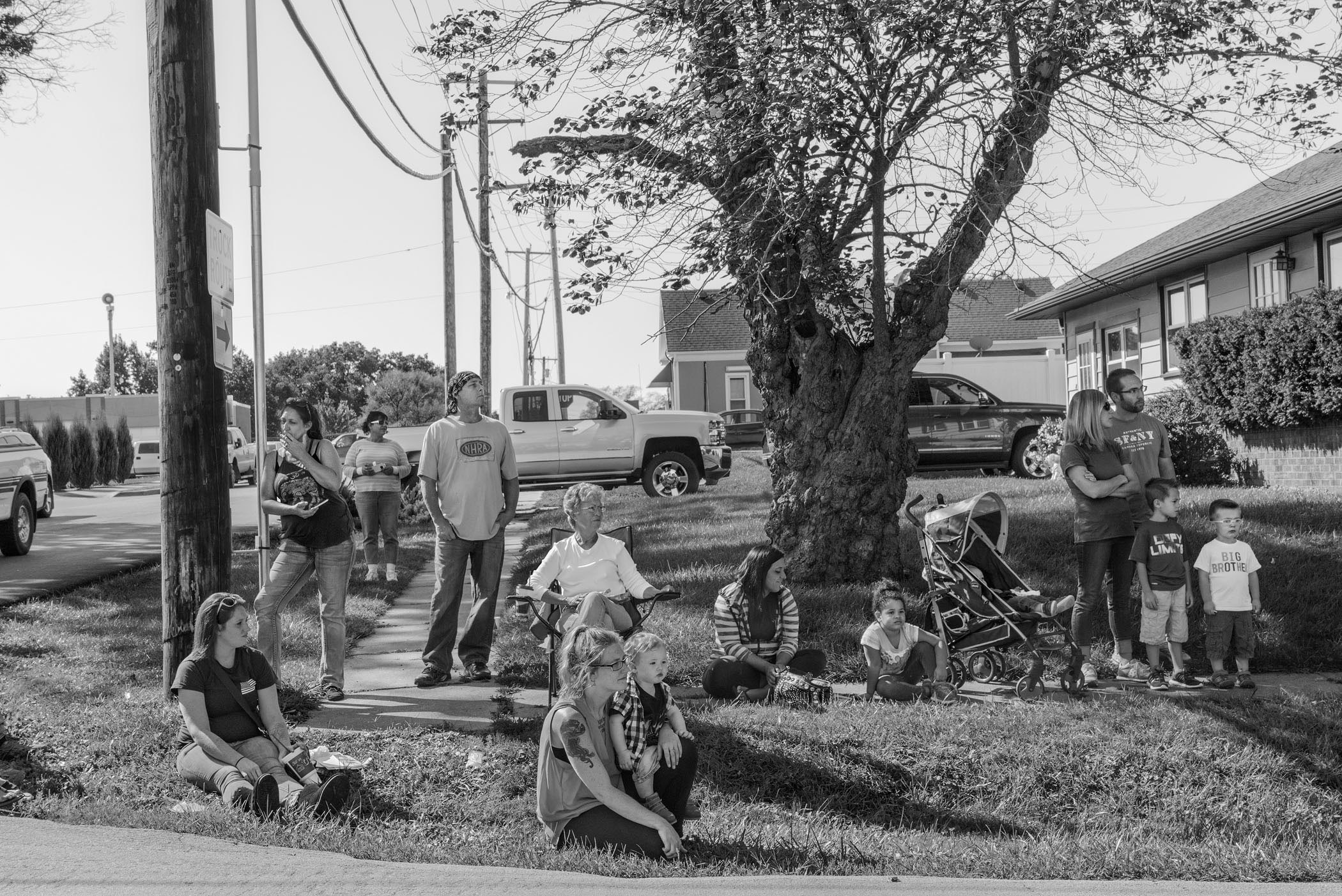
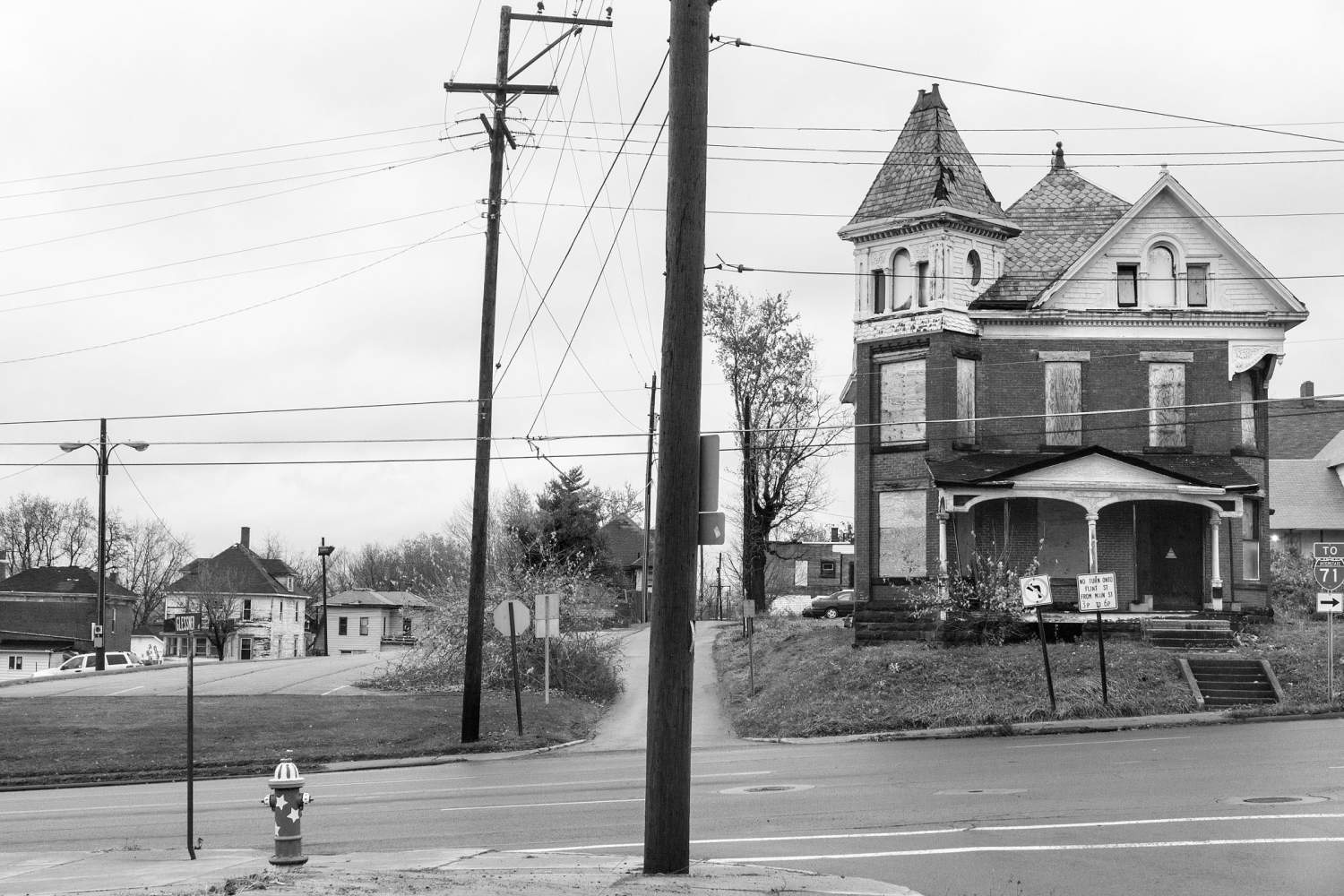
The visible world can be a great gift to the camera, and a photographer’s good judgment is often a matter of framing, timing and a lot of acceptance.
Of course, while the camera can take in all that detail, it comprehends nothing. Then, after shooting, a photographer must review and select from the exposures made.
That first judgment comes there and then, watching through the camera’s viewfinder. The second is made looking closely at the resulting images, with all their small but important variables.
Georgiou has not combined elements from different shots. What you see in each image was all happening at once.
If the photographs sometimes have the feeling of montage, or rhythm and counterpoint, it was there in the observable world.
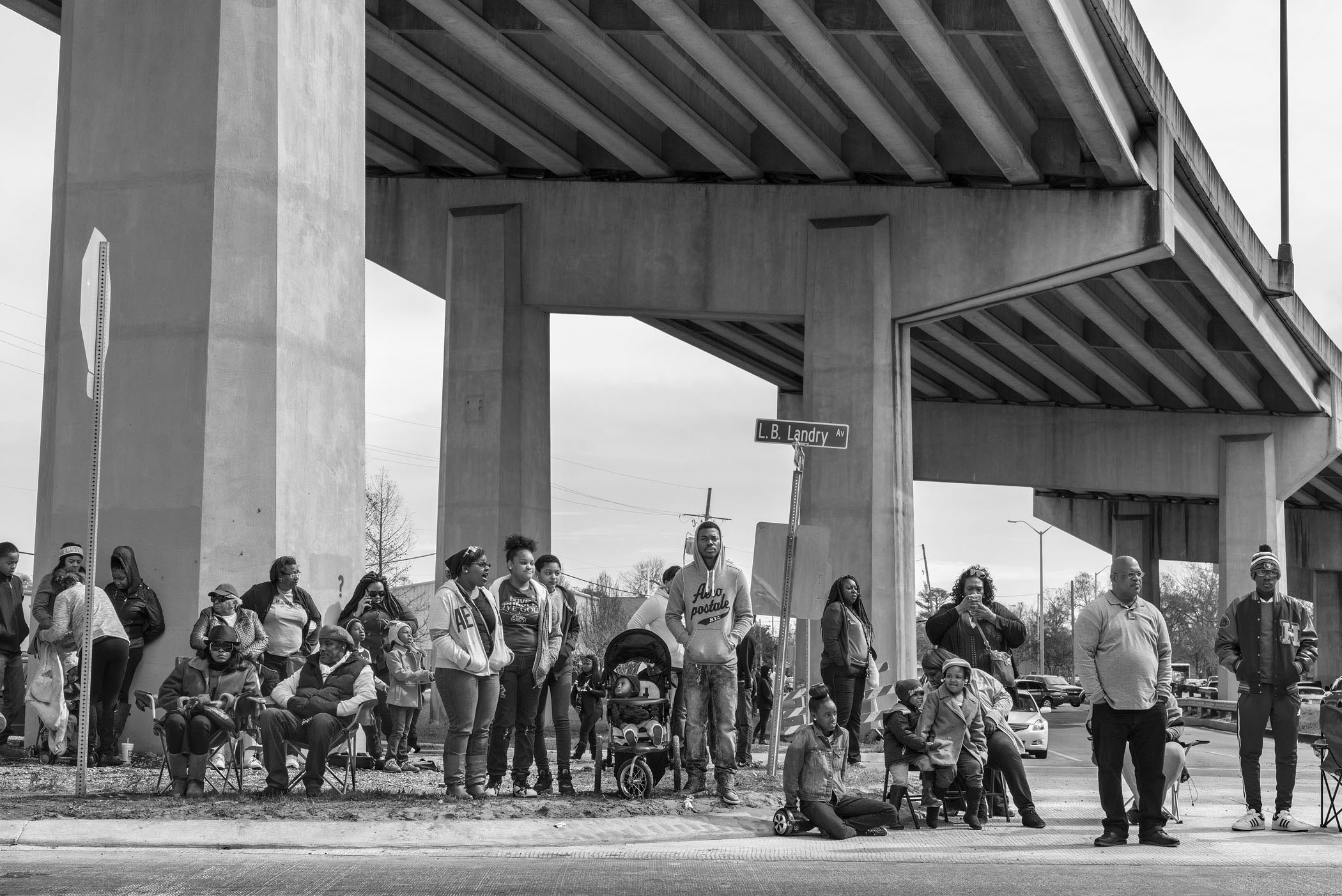
Mardi Gras parade, New Orleans, Louisiana.
Rodeo Parade in Tucson, Arizona.
July 4th parade, Ripley, West Virginia.
Parades are in themselves little instances of community, but we should be wary of that word. These days, ‘community’, not unlike the word ‘parade’, tends to imply like-mindedness, the coming together around a cause or shared fate.
Martin Luther King Day parade, Los Angeles, California.
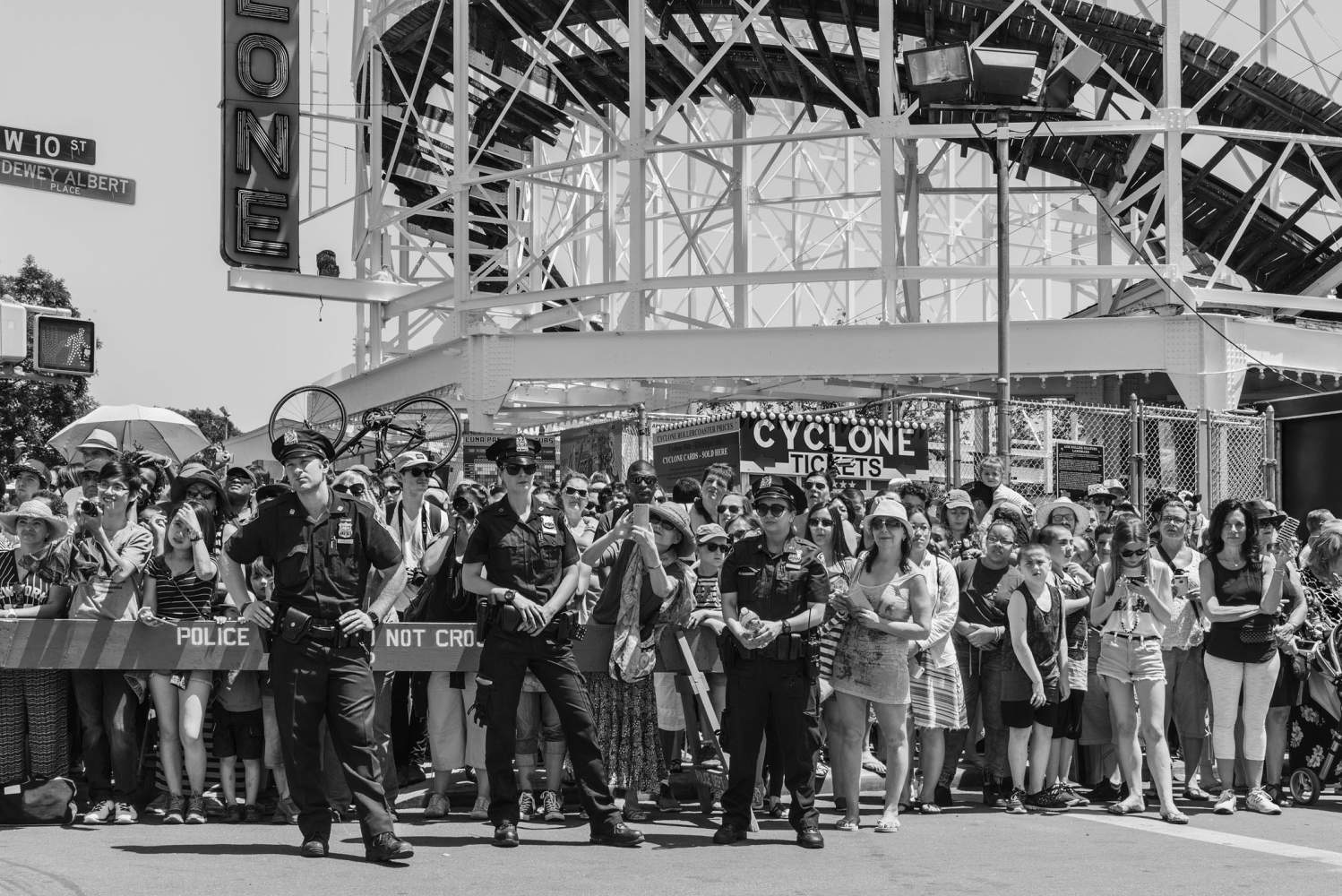
Mermaid Parade in Coney Island, New York.
St Patrick's Day parade, Des Moines, Iowa.
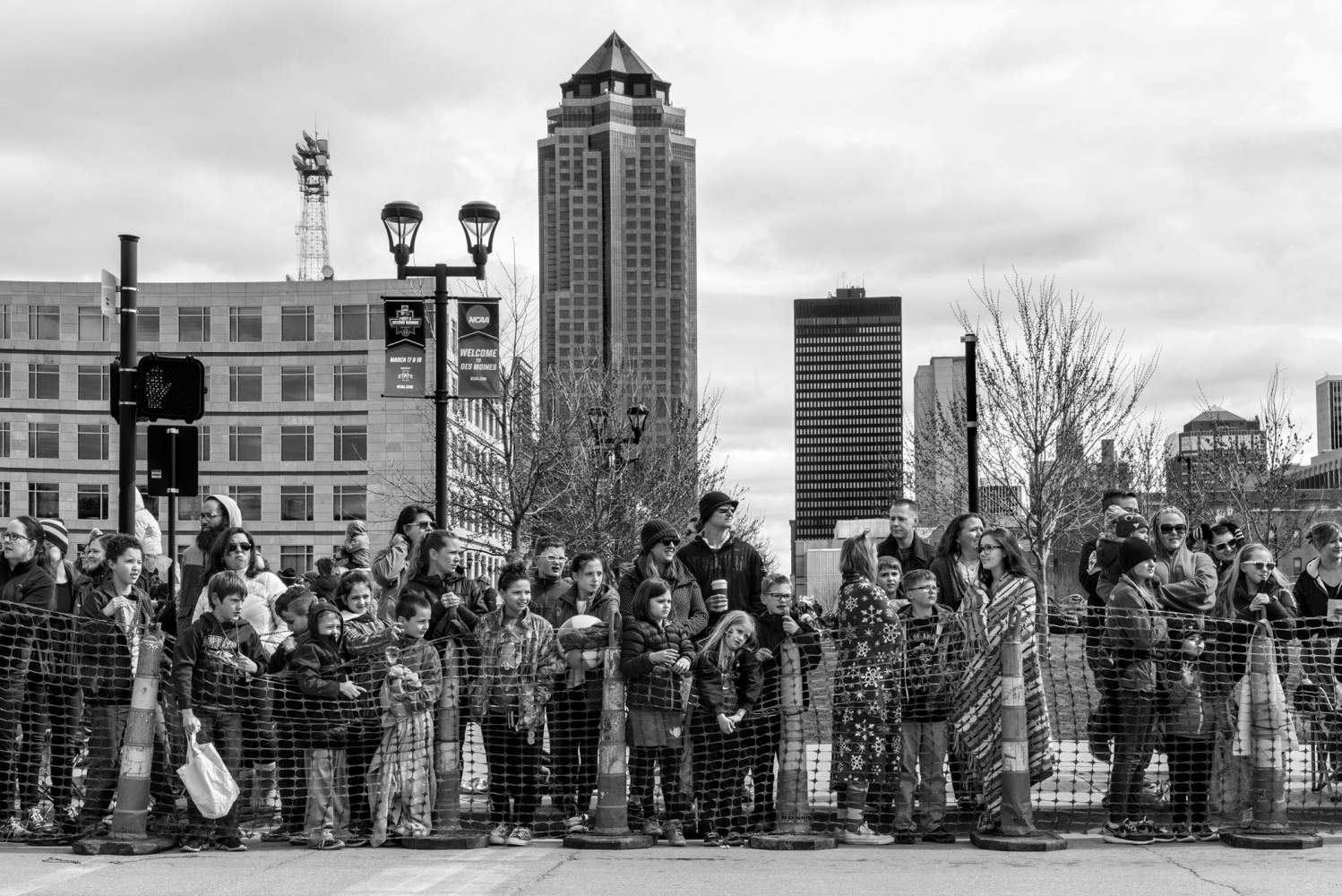
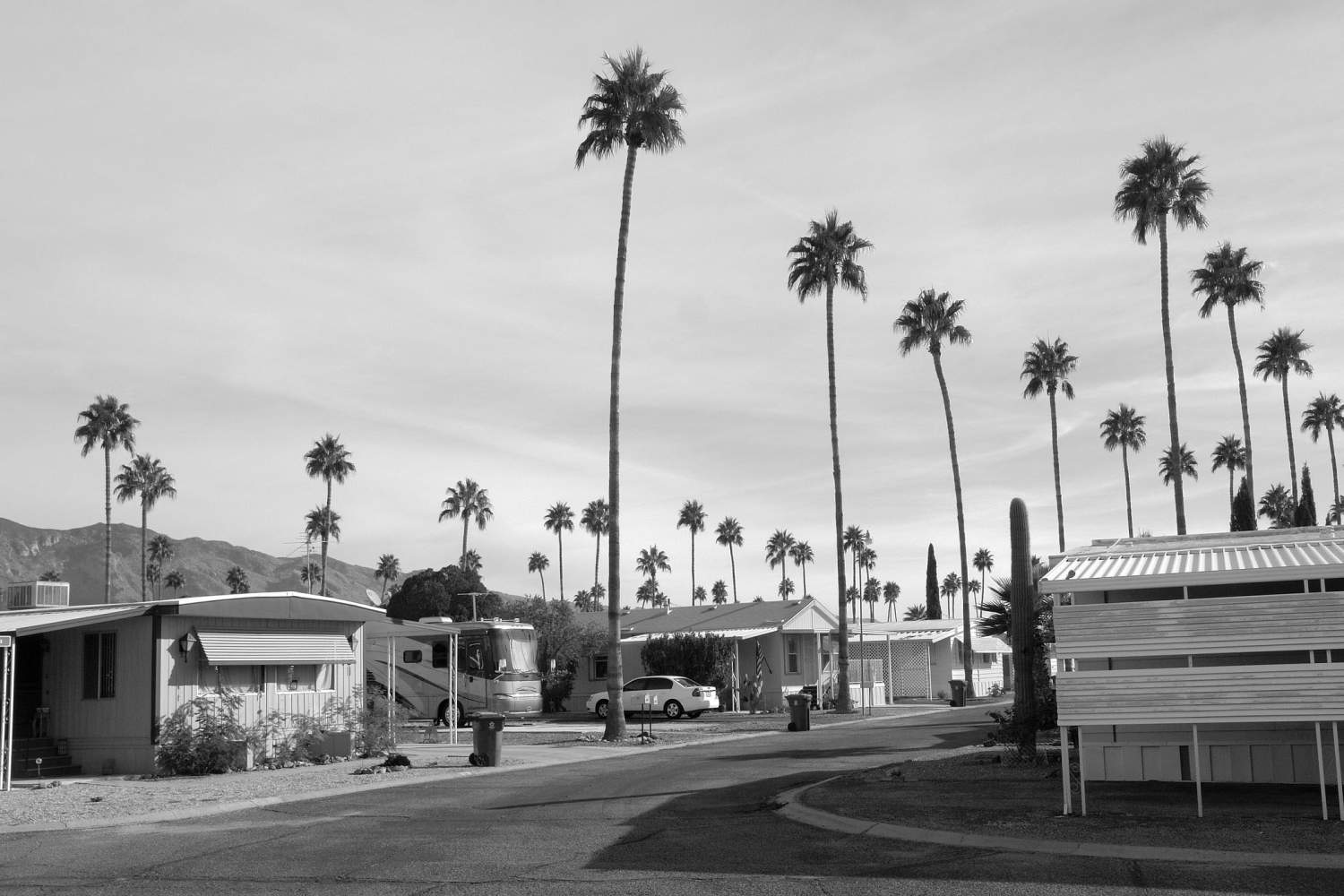
Certainly there are moments of this in Georgiou’s photographs. Group behaviour, collective identity, communal consciousness.
But there are at least as many moments when we are offered scenes of suspended tension or difference.
Yes, everyone is there in the frame but perhaps for different reasons. Some may be present in impassioned commitment. Some might just be curious, with a little spare time in their day. Some might disagree with each other.
None of these images is in itself a microcosm of the United States, and Georgiou’s body of work as a whole cannot presume to be one either.
Mermaid Parade in Coney Island, New York.
Nevertheless, the silent framing of a group portrait tends to produce an illusion of unity, as if the people in each frame, and the frames within this book, share the singular coherence of a picture that is taken in an instant and lasts forever.
Charro Days parade in Brownsville, Texas.
But maybe that accidental effect counts for something too. After all, these people were there.
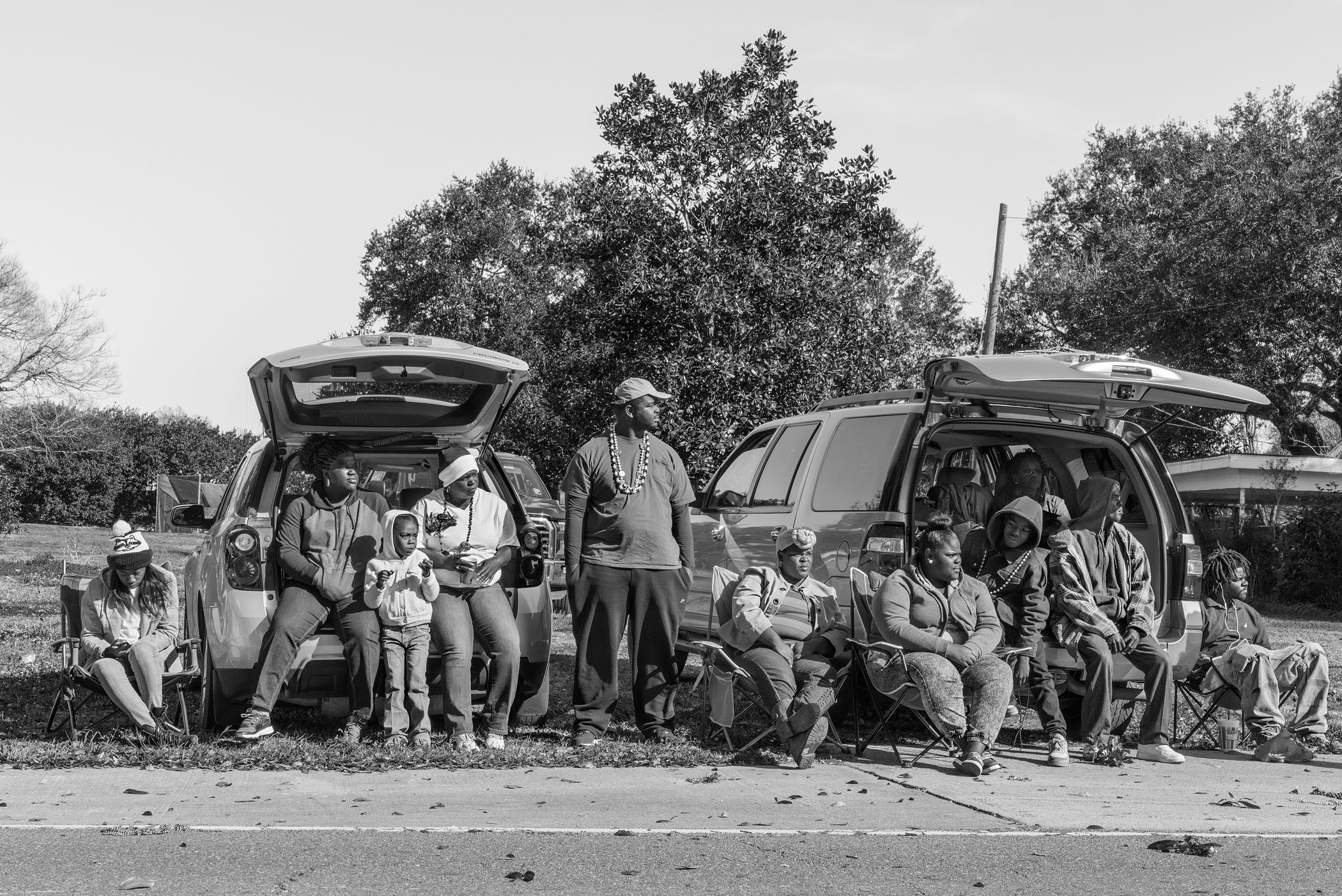
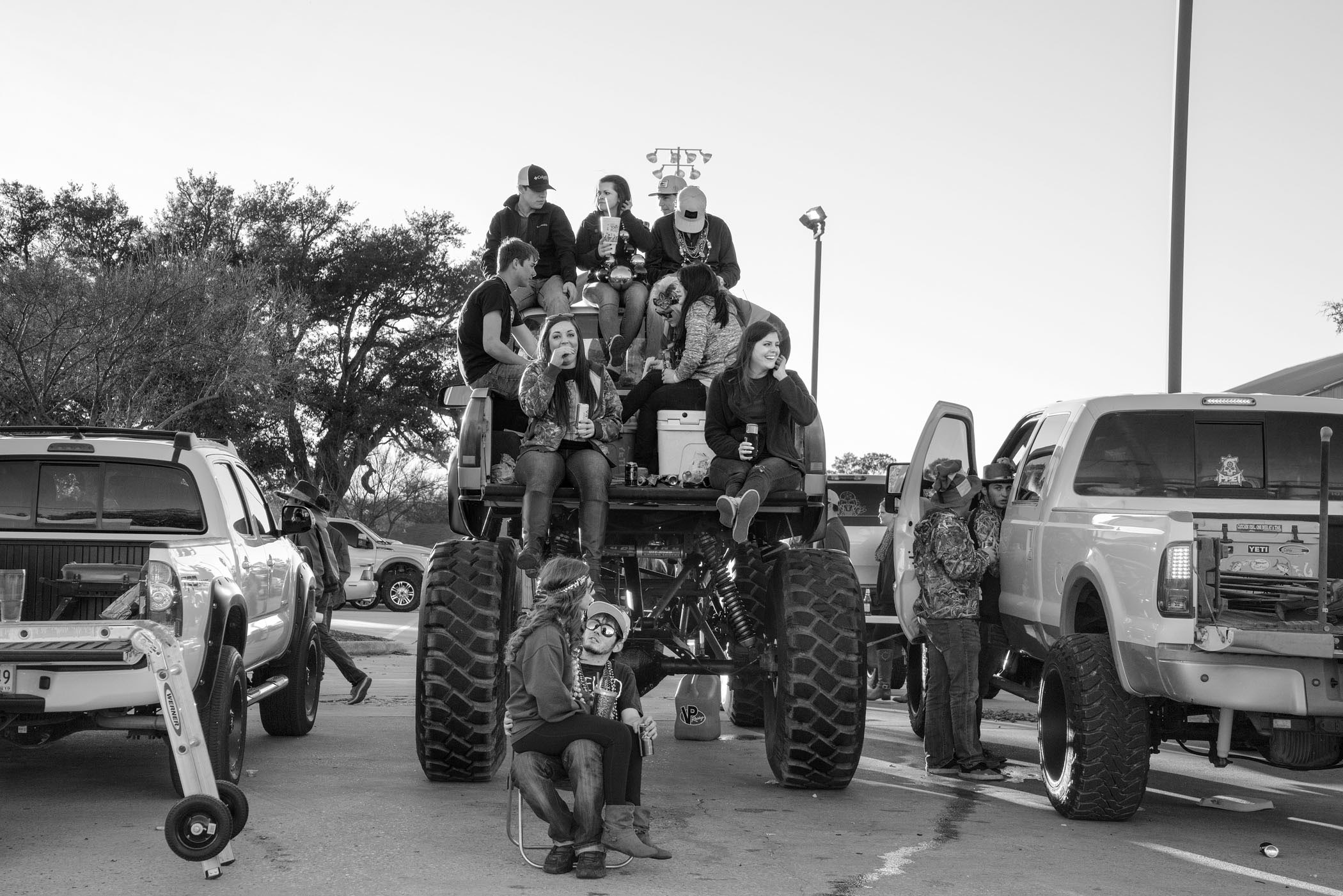
Mardi Gras parade, Patterson, Louisiana. * Mardi Gras parade in Lake Charles, Louisiana.
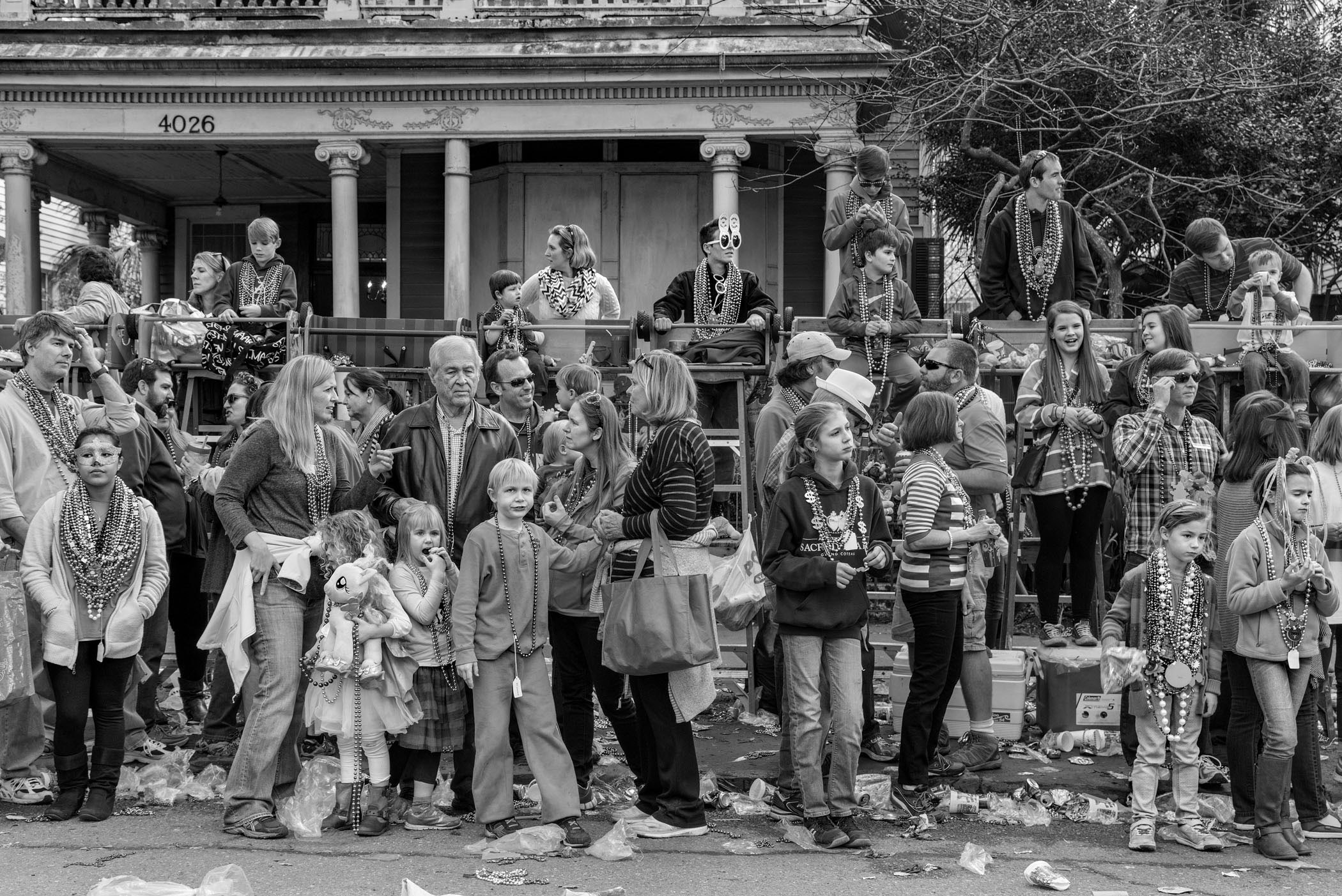
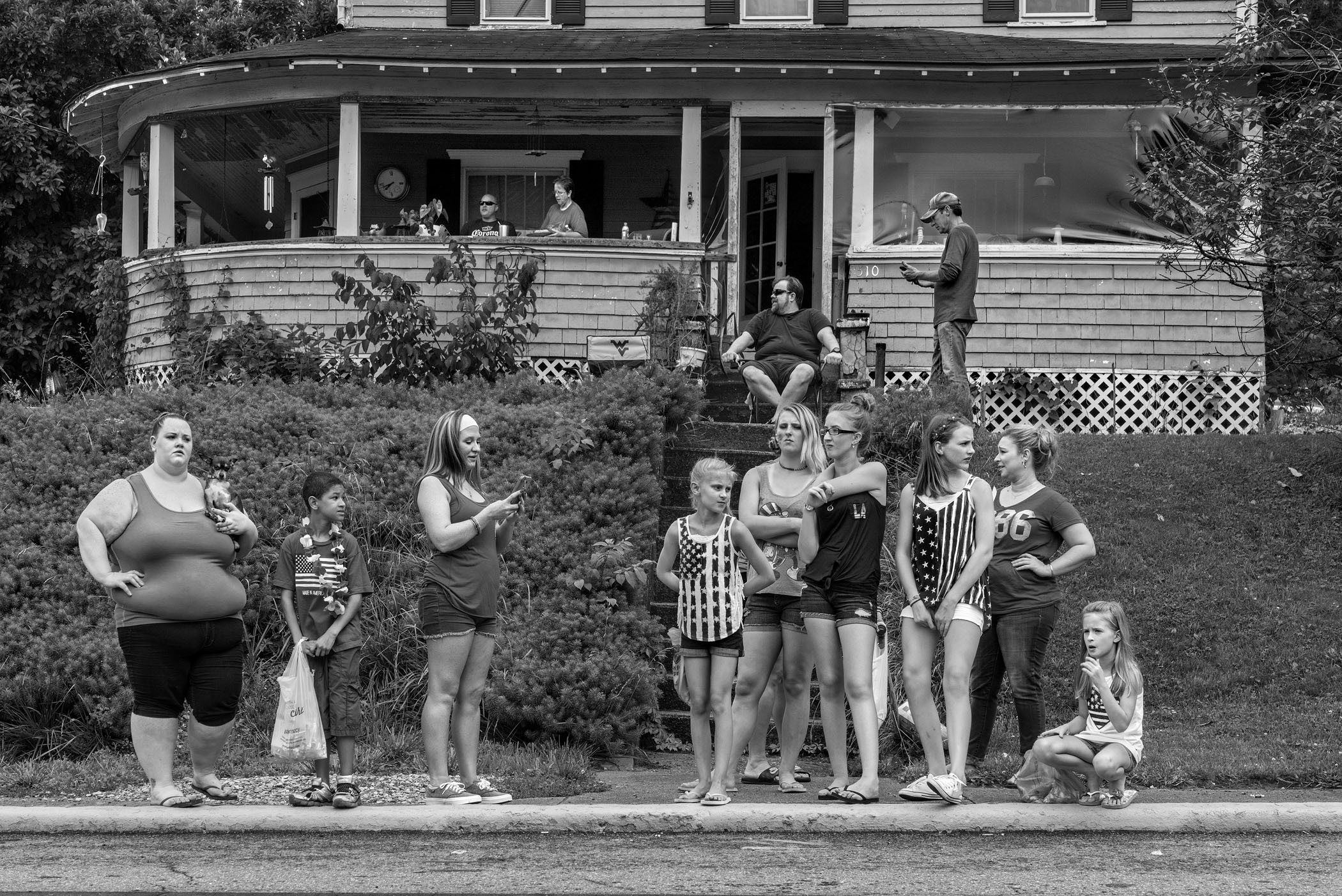
Mardi Gras parade, New Orleans, Louisiana. * July 4th parade, Ripley, West Virginia.
Georgiou was making these photographs throughout the 2016 presidential campaigns. On November 8, Donald Trump was elected president, in the name of the Republican Party. Georgiou made his last parade photograph, in Brockton, Massachusetts on November 26.
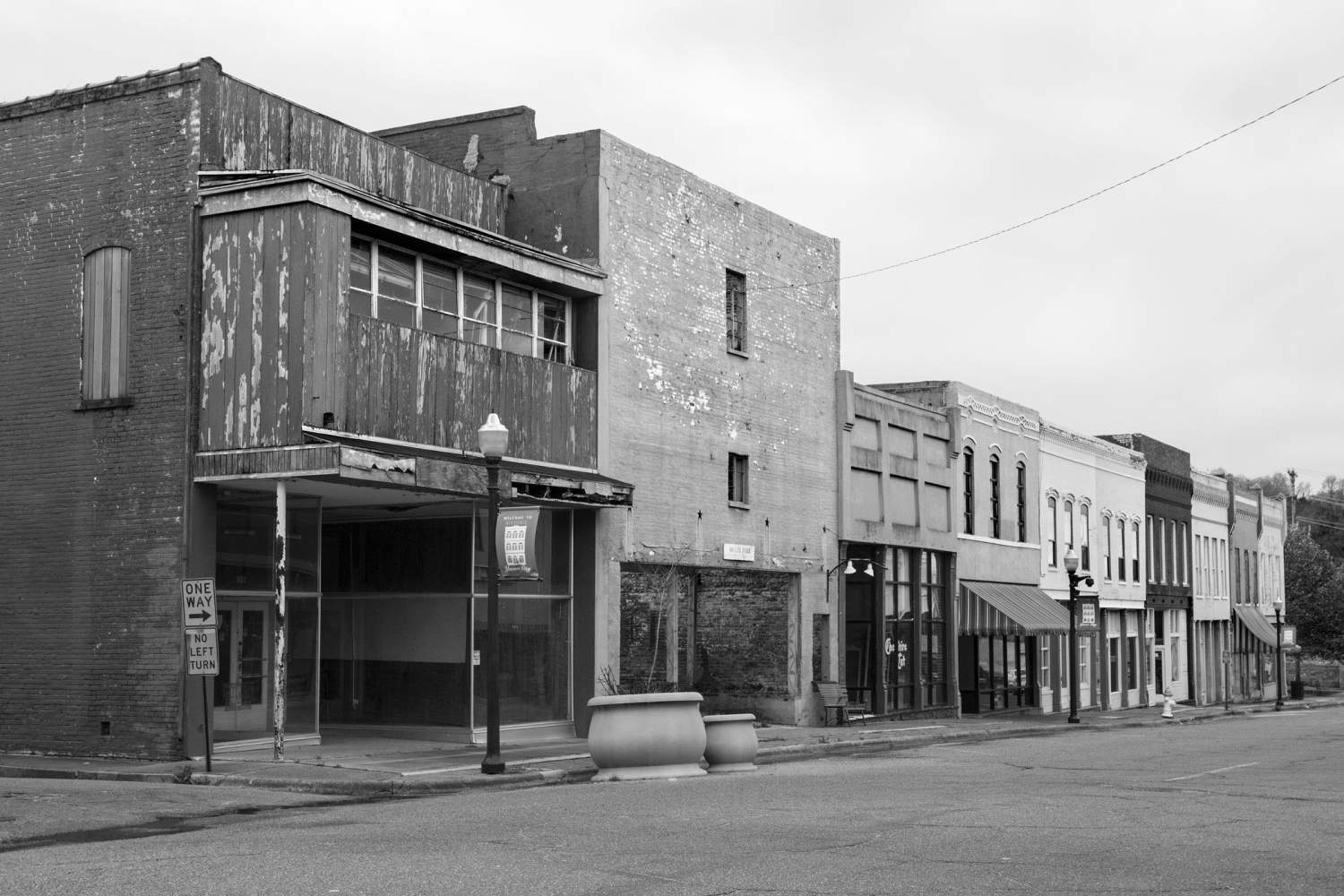
Along the way there had been many different kinds of parade.
Gay Pride
St Patrick’s Day
Jesse James parades
George Washington Day
Black History Month
Thanksgiving Day
Mardi Gras.
They were not all related to the presidency directly, but in our present moment the connections feel inevitable. Each parade attracted a complex crowd, and each resulting image presents its own pleasures and problems for the viewer.
St Patrick's Day parade, Des Moines, Iowa.
Photographs are naturally still and mute but it is clear now that Georgiou made these images during a period of recent history that was anything but still and mute.
The political and ideological upheavals, the poisoning of public debate, and the turning of the United States against itself in its capitulation to crude populism, were loud and tumultuous.
Pigasus Parade during the Marion County Country Ham Days in Lebanon, Kentucky.
Georgiou kept his feelings and opinions to himself.
He also kept his nerve, knowing that if his images were going to be able to stand, in their own moment and beyond, he needed to withhold judgment.
While he is the author of these photographs, their meaning is up to viewers. Up to us, and up to audiences to come.
Defeat of Jesse James Days Parade in Northfield, Minnesota.
All we get in photography is appearance, and judging by appearance is now more fraught than ever.
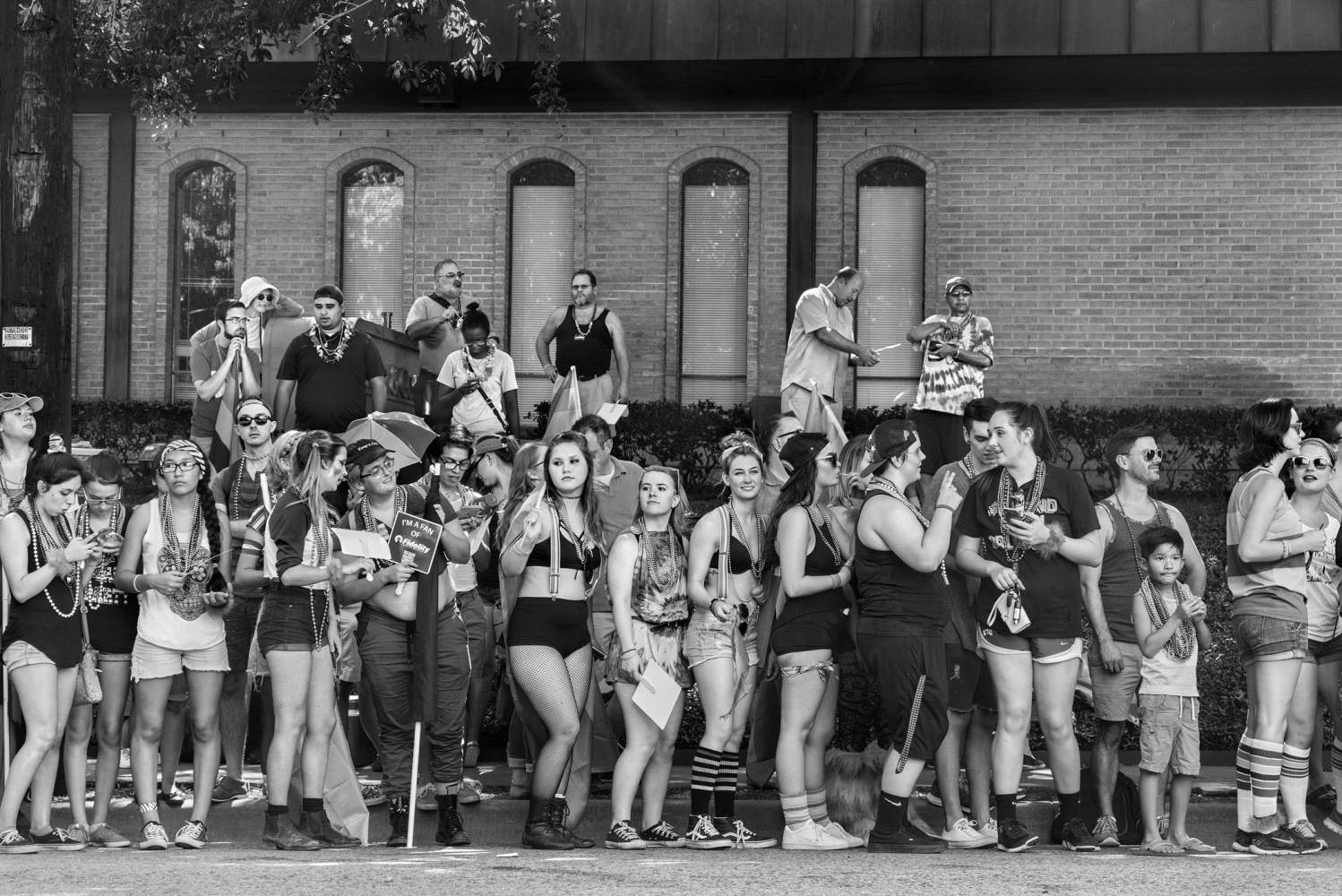
Pride Parade, Dallas, Texas.
Mardi Gras parade, New Orleans, Lousiana.
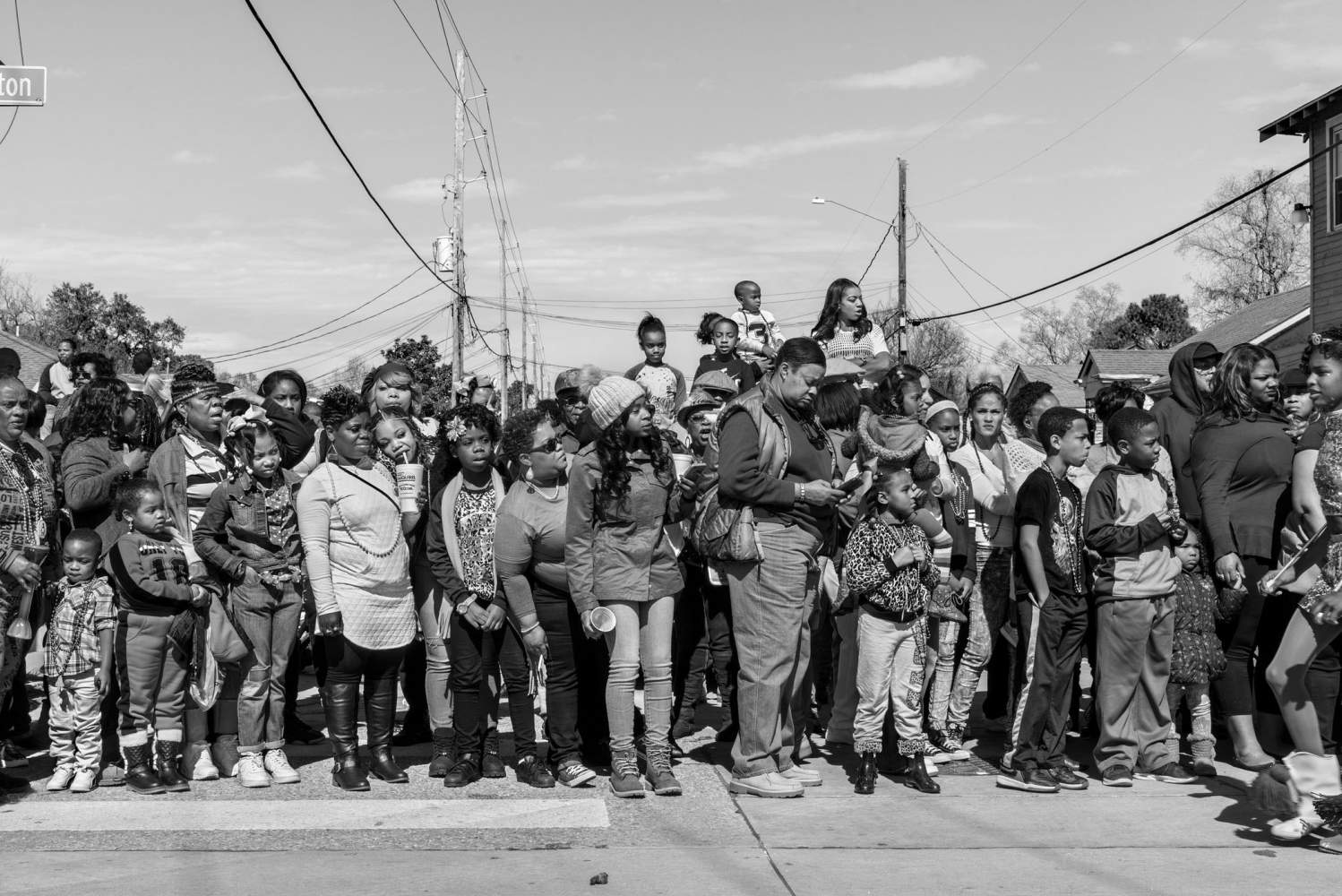
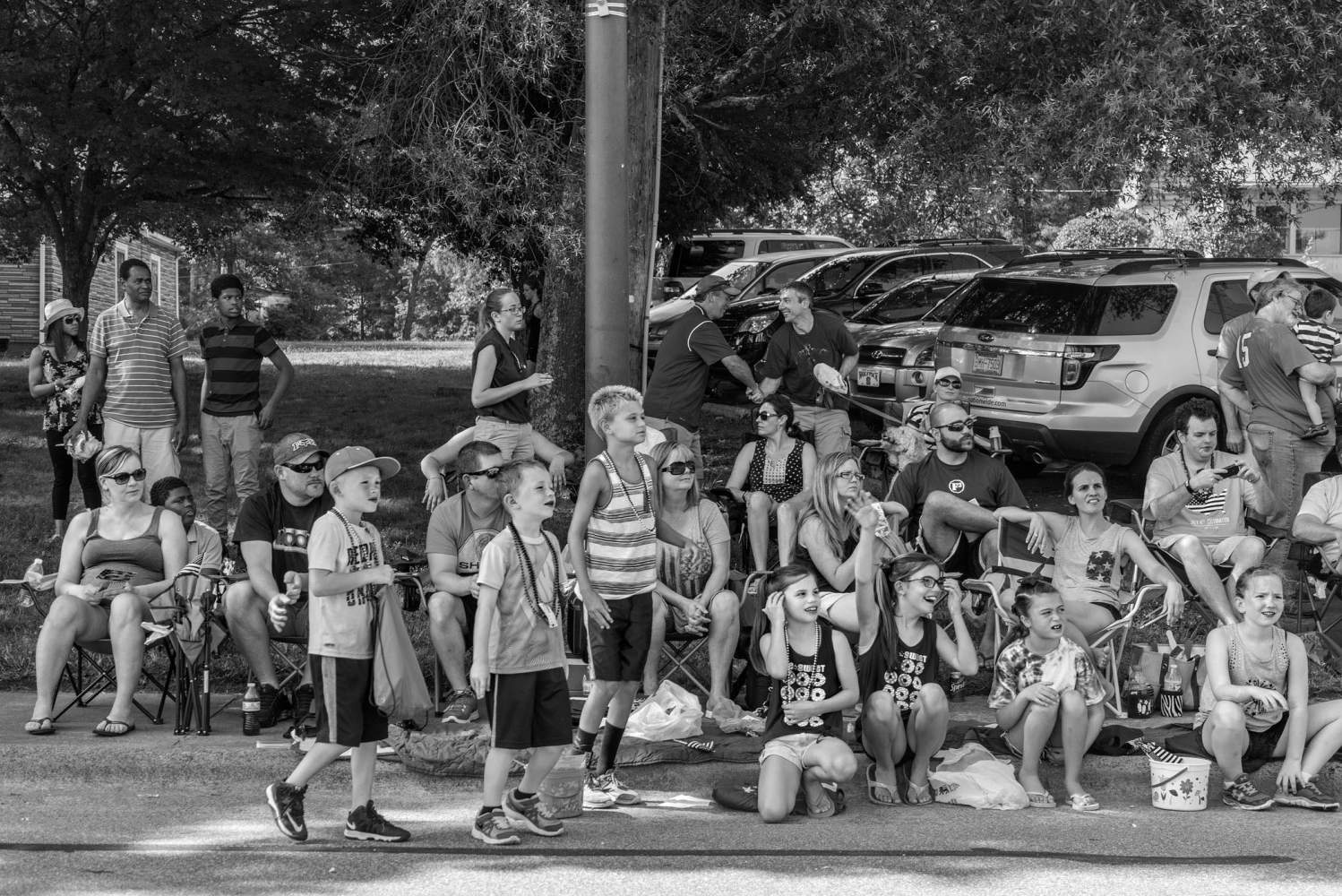
July 4th Parade, Harrisburg, North Carolina.
Jesse James Festival Parade, Kearney, Missouri.
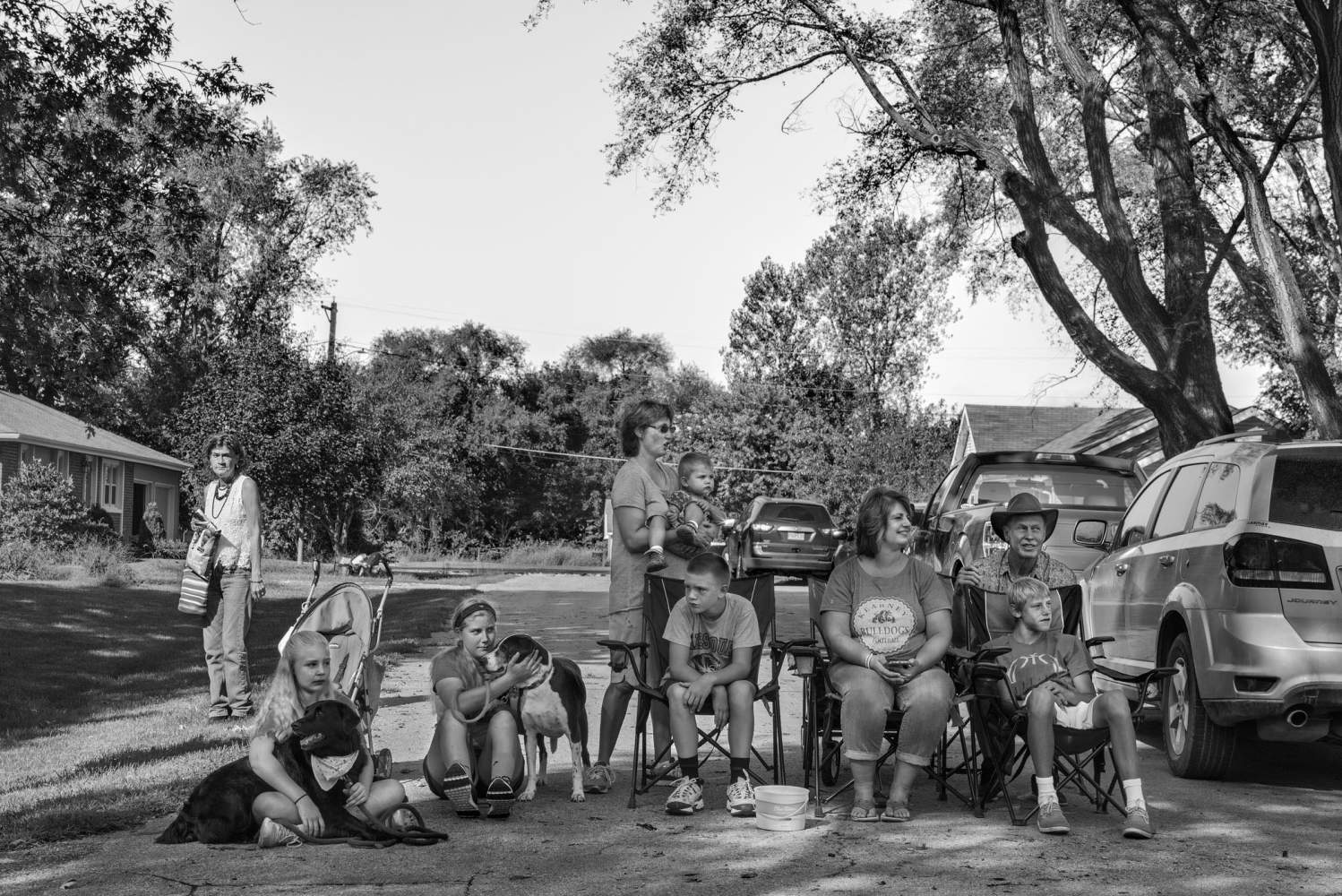
The increasing visibility of us all, for ourselves and for others, encourages us to judge while cautioning us not to.
It may be tempting to jump to conclusions, but the relation of a person’s appearance to character, job, class, ideals, desires or political viewpoint is often so layered and nuanced as to be almost indecipherable.
And for all the talk of strong opinion and decisive difference in North
America right now, we ought not to forget the levels of confusion and bewilderment.
Black History Month parade, Baton Rouge, Louisana.
Even when a person is draped in a flag or political slogans, their wish to be emphatic may prompt us to wonder exactly where their conviction came from.
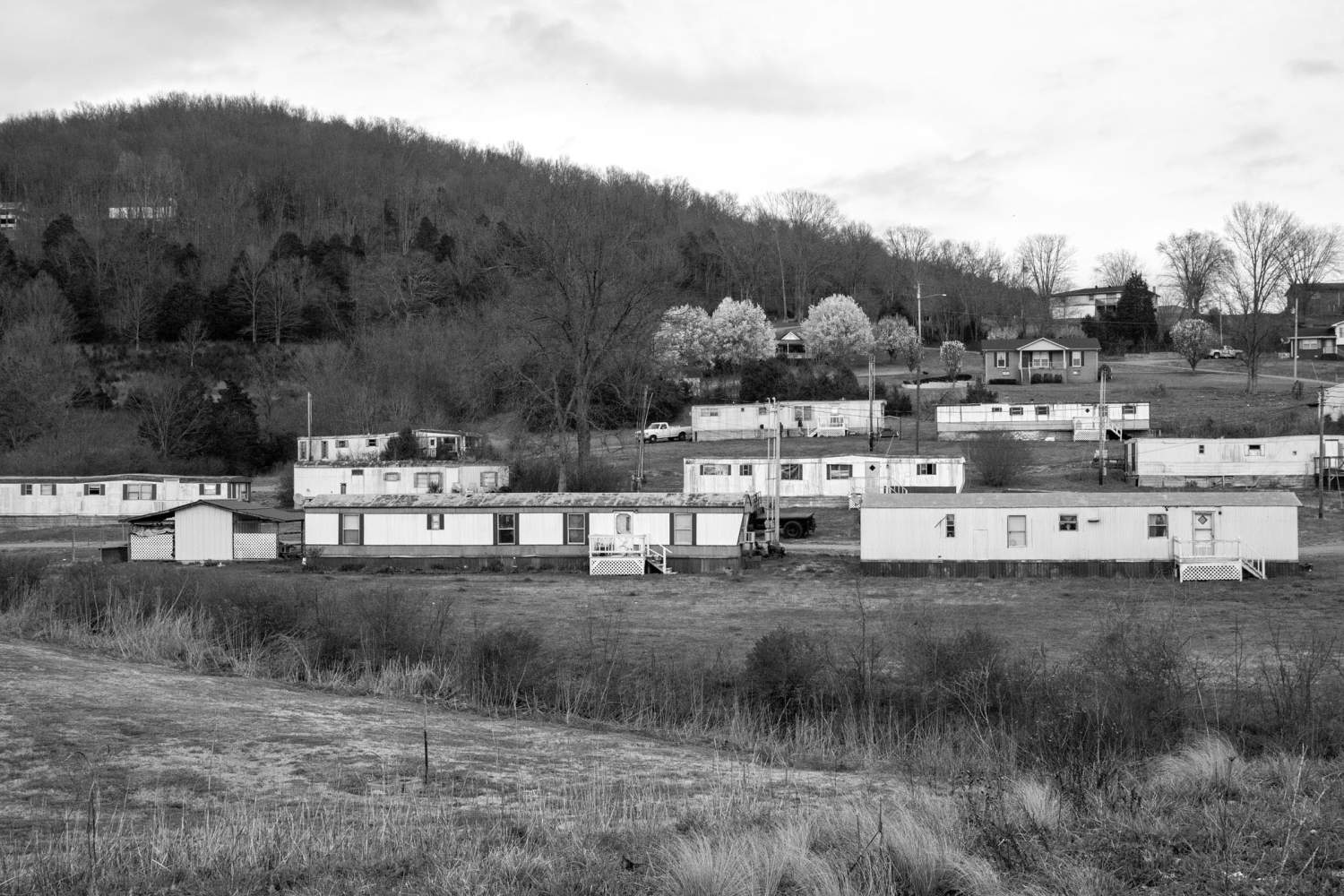
Such difficulties of reading do not undermine the profound value and fascination of Georgiou’s project. They deepen it.
A great artist, particularly a photographic artist, need have no point of view.
Although it is not possible to be as indifferent and mechanical as a camera, it is possible to place an image before a viewer as an invitation to look and think – an invitation to measure it carefully against one’s own experience and judgment, to confront one’s preconceptions, to conclude anew or to leave matters open.
Marion County Country Ham Days, Lebanon, Kentucky.
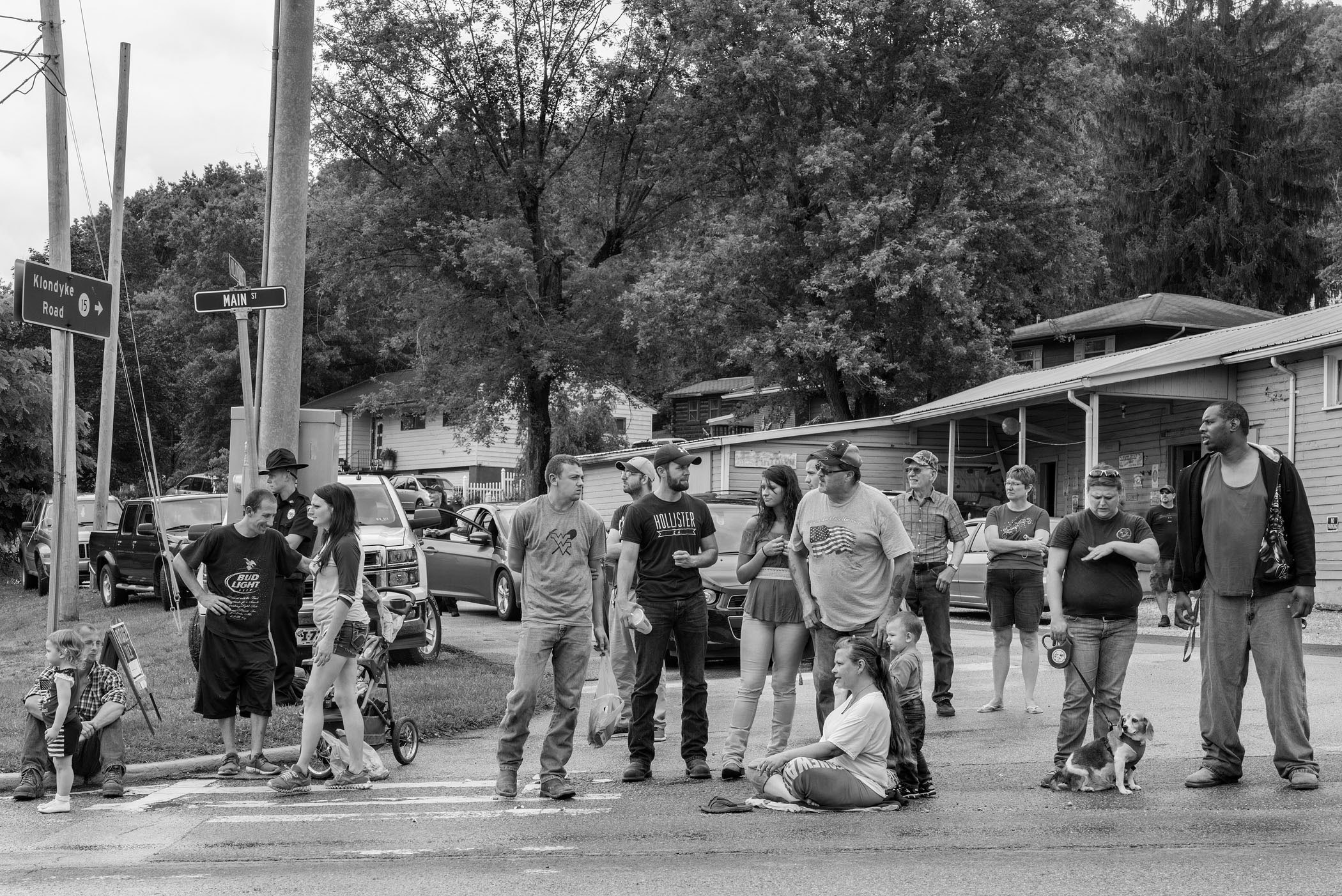
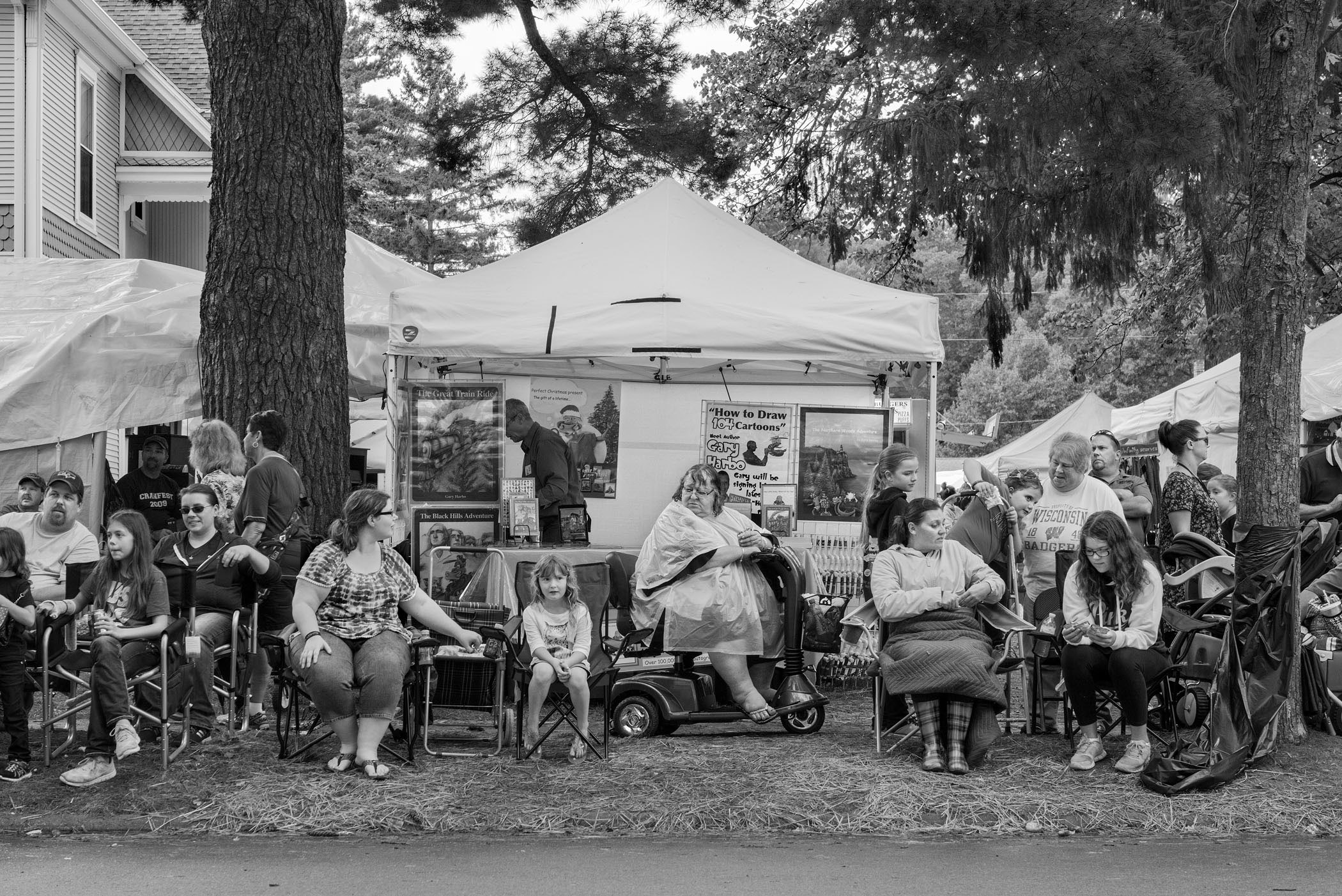
July 4th parade, Ripley, West Virginia. * Cranberry Festival Parade, Warrens, Wisconsin.
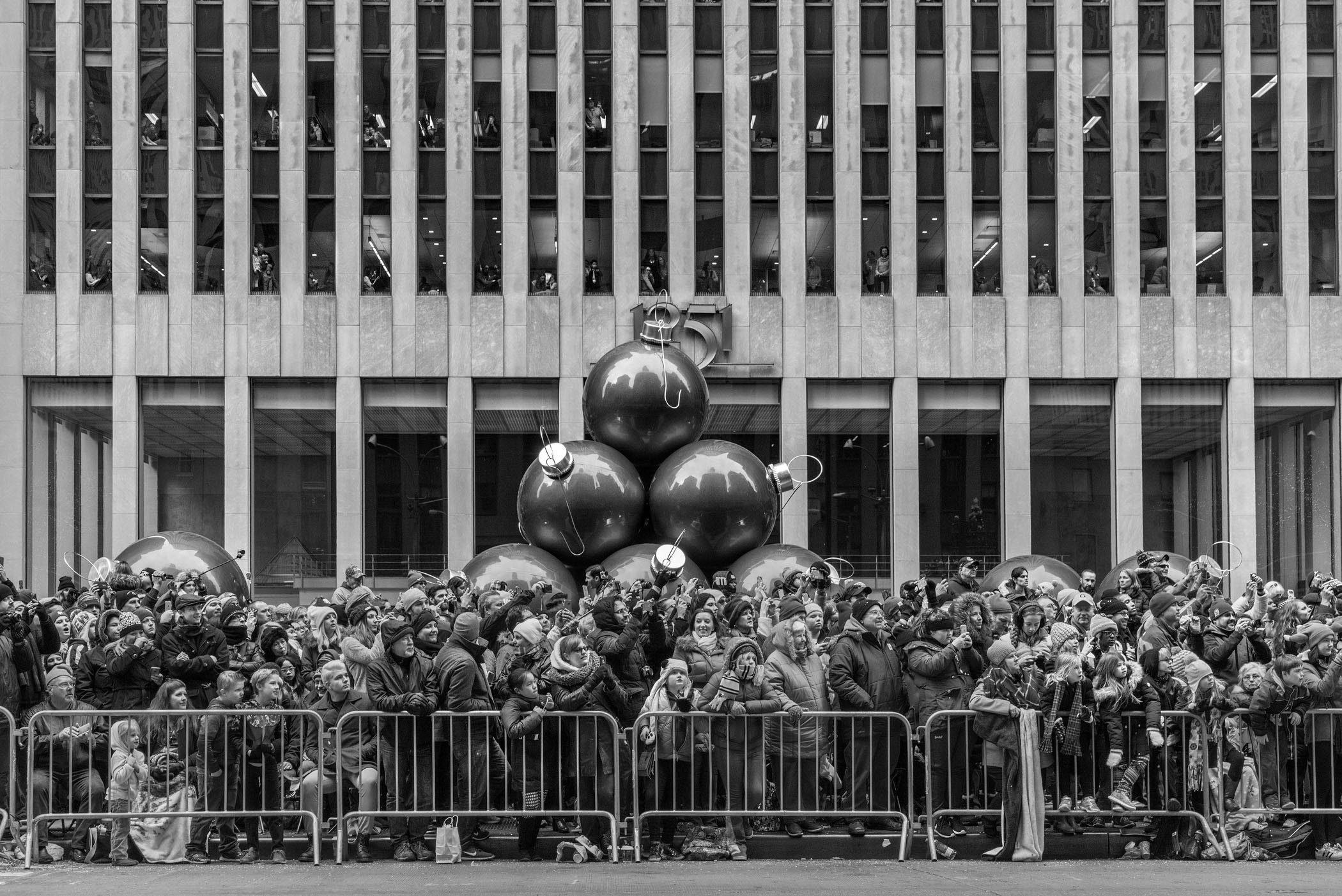
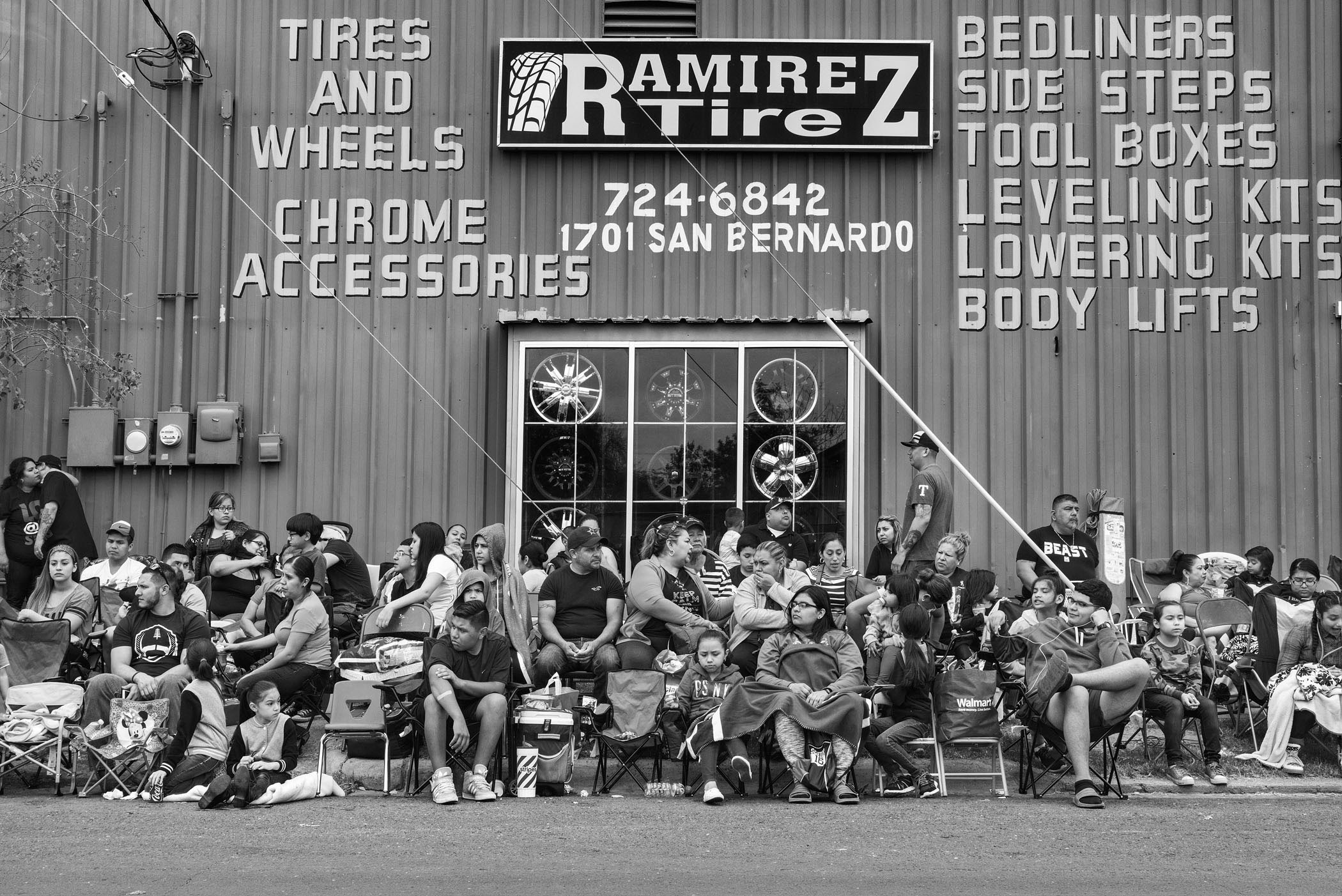
Macy’s Thanksgiving Day Parade, New York. * George Washington Day Parade, Ladero, Texas.
George Georgiou drove thirteen thousand miles in the making of this project.
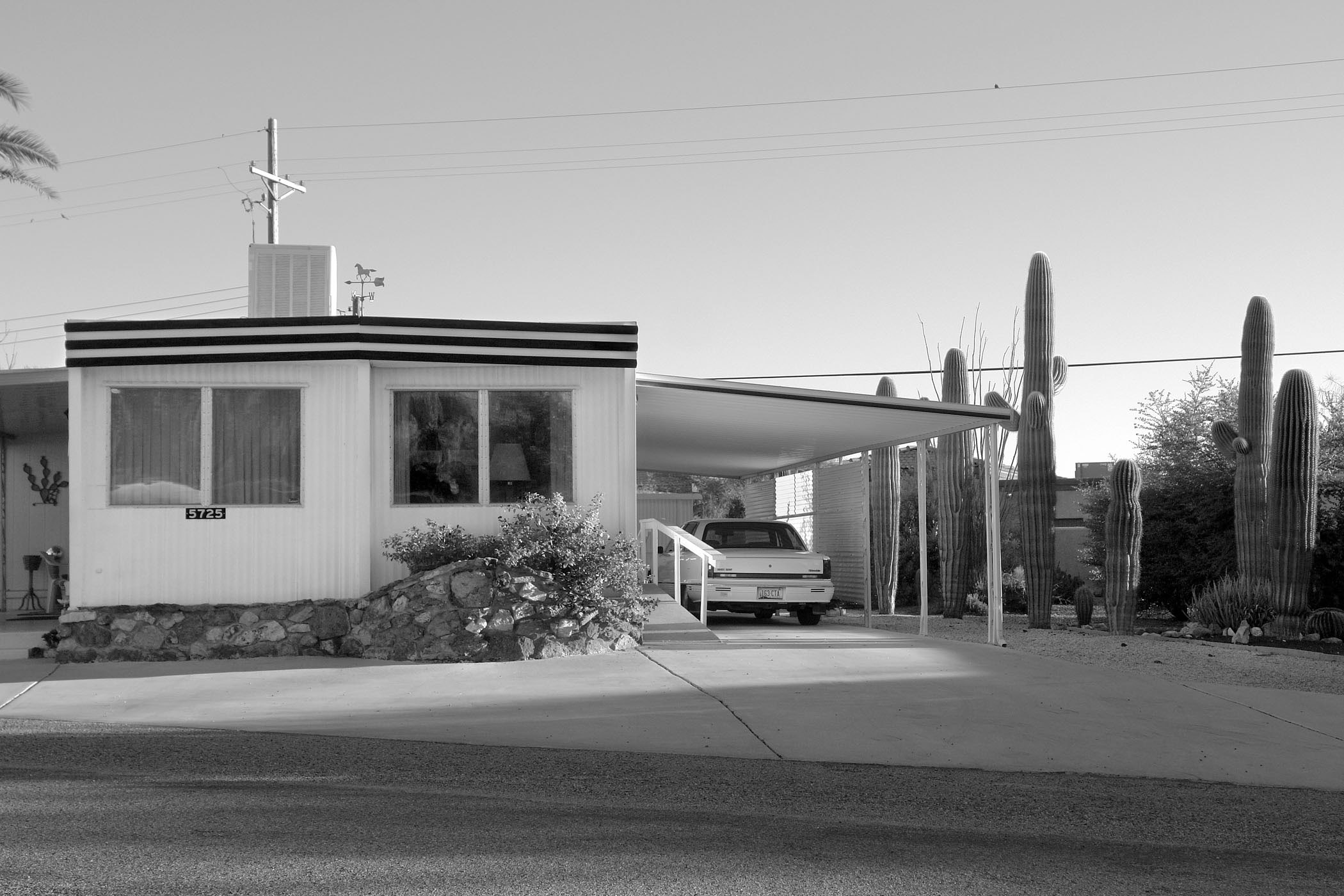
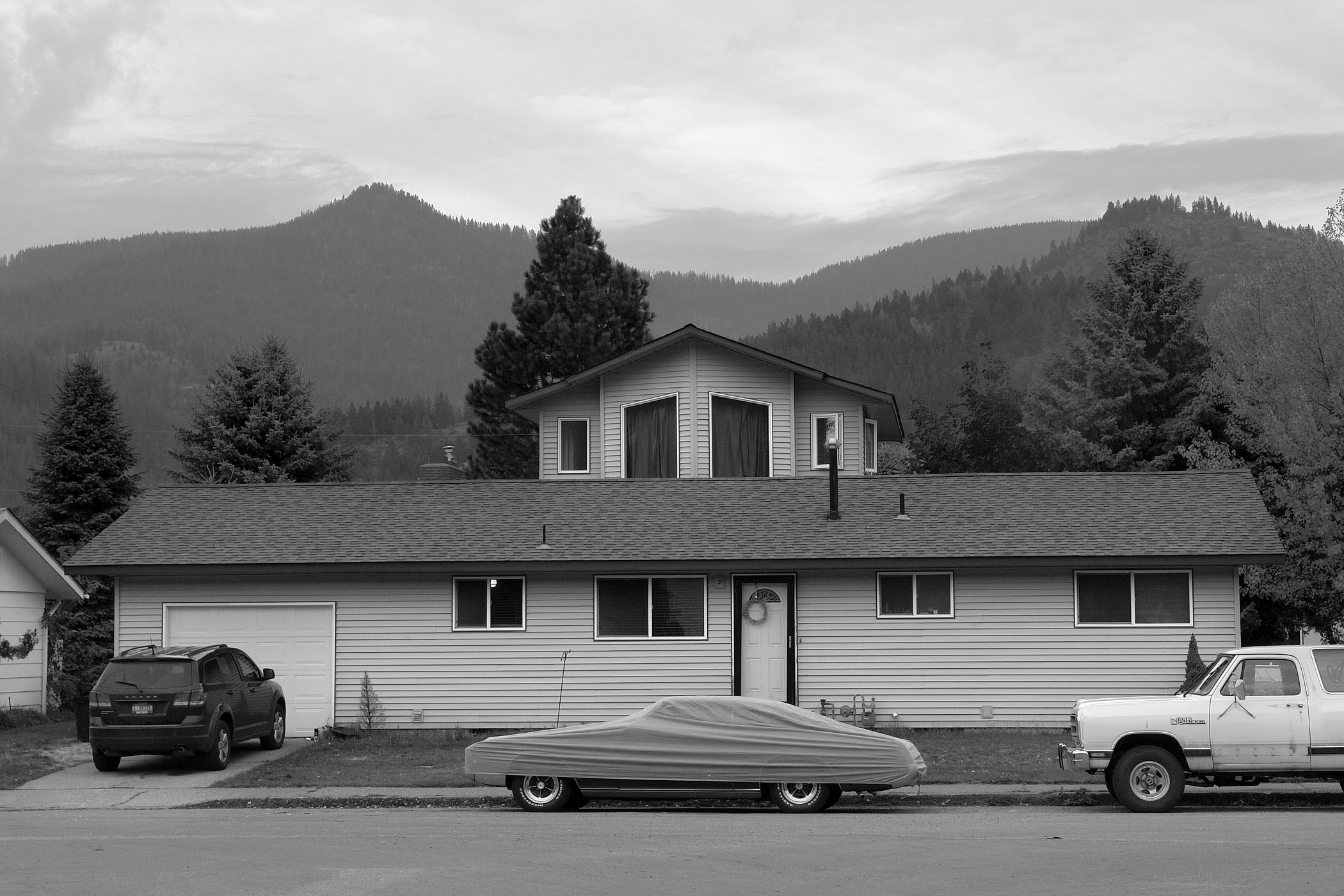
No culture has embraced the automobile so completely as the United States. Its towns and cities are largely designed with car dependence in mind.
Look behind the standing people here and you will often see the cars they drove to get to the parades. While the car makes travel possible it also aids the separation of people from each other on a daily basis. It adds to the deep levels of loneliness and alienation that are now taken for granted.
Martin Luther King Day parade, Los Angeles, California.
Martin Luther King Day Parade in Long Beach, California.
Perhaps this makes the thoroughly pedestrian and social nature of a parade all the more poignant. Whatever they are for, American parades feel nostalgic, throwbacks to some long gone but not quite forgotten sense of belonging.
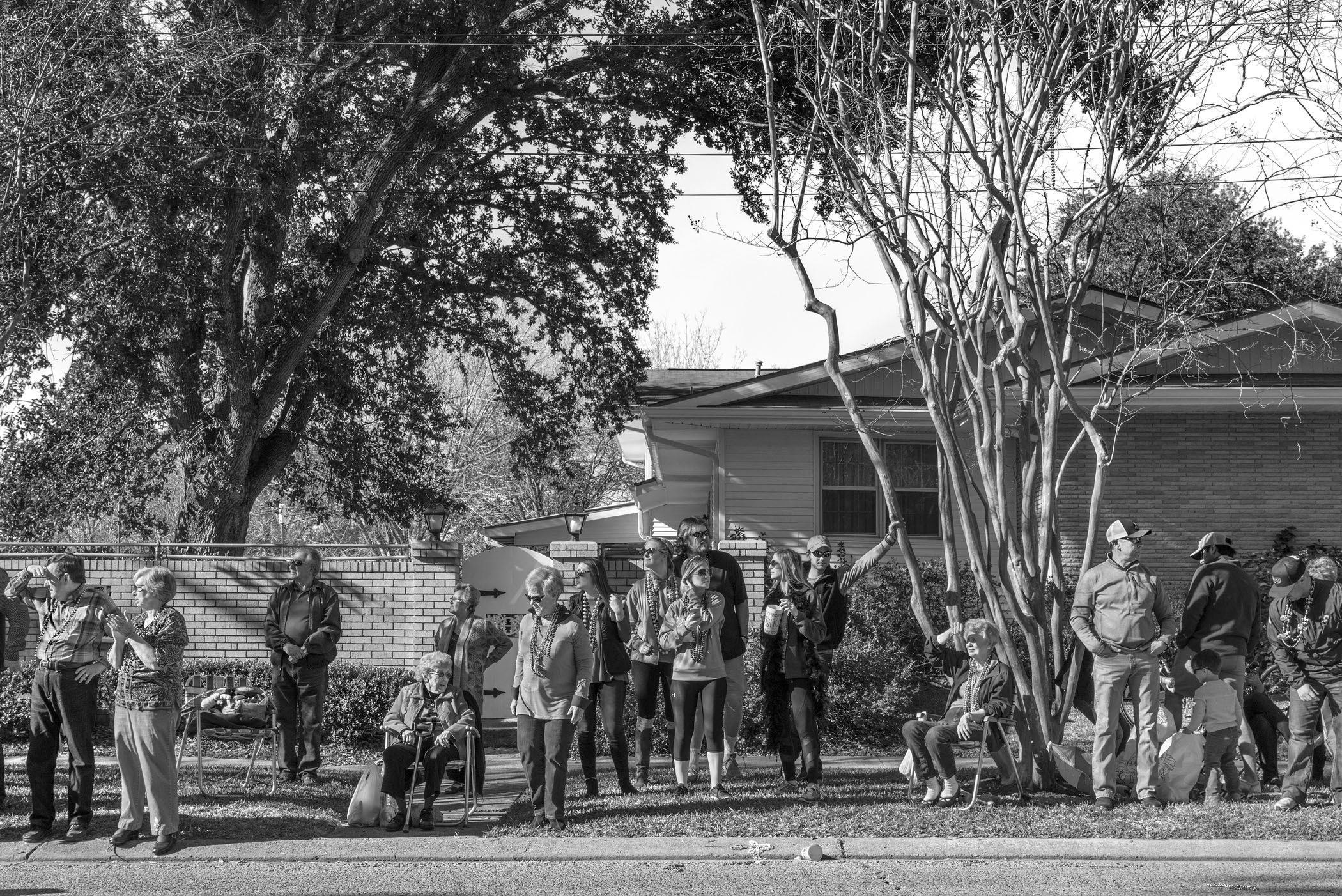
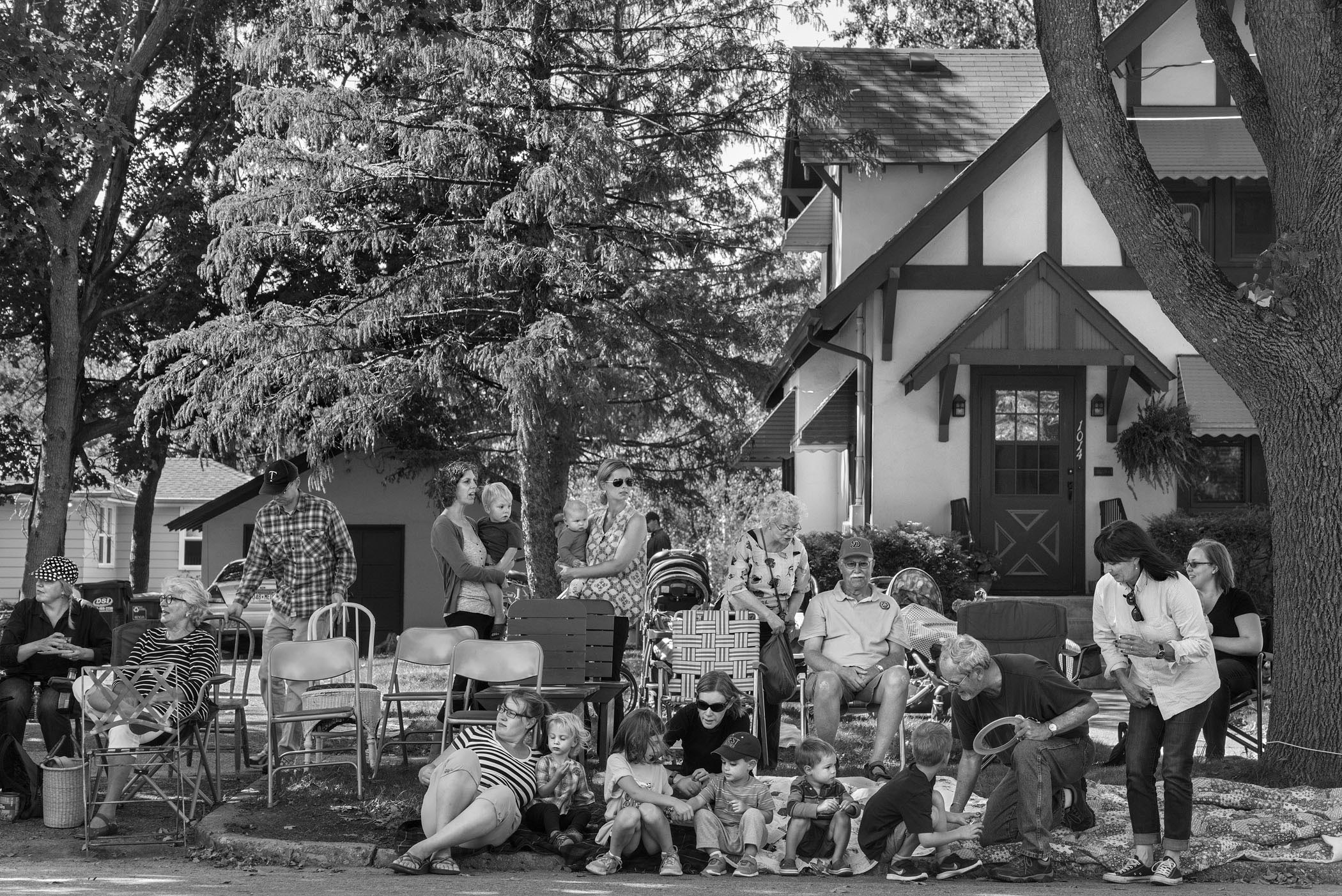
Defeat of Jesse James Day Parade, Northfield, Minnesota. * Mardi Gras Parade in Morgan City, Louisiana.
Maybe something as basic as standing together, in each other’s presence and for whatever reason, is some kind of utopia.
Martin Luther King Day parade, Long Beach, California.
A narrative full of complexities and ambiguities, a series of modern day tableaux.
George Washington Day Parade, Ladero, Texas.
Americans Parade is a parade of Americans. One after the other, from one community to the next, building up a picture of Americans in the United States in 2016, the year Donald Trump was elected, a year when Americas division have never been more pronounced.
I have visited the United States several times over the years and outside of the biggest cities, I would see very little street life and have no reason to stop; I would only know of a place by it’s reputation, it was like the local community was invisible.
Marion County Country Ham Days, Lebanon, Kentucky.
Macy's Thanksgiving Day Parade, New York.
Black History Month parade, Baton Rouge, Louisiana.
The idea for the work came about when I went to a Martin Luther King parade in a neighbourhood I had been to before. Unlike my first visit, when the streets were empty, the streets were suddenly alive, full of people, families, movement and a sea of sound, a complex community was suddenly visible.
In 2016, I decided to criss-cross the country looking for parades that covered many of the different American demographics. The NYT’s magazine liked the idea and supported me throughout, publishing the work on the weekend of Trump’s inauguration.
Jesse James Festival Parade, Kearney, Missouri.
Martin Luther King Day Parade in Los Angeles, California.
St Patrick's Day parade, Peoria, Illinois.
Throughout the year I visit 26 parades, in 24 cities across 14 states. From the very first parade, my visual approach was simple and deliberate. Moving alongside the parade I would follow the route, waiting for a clear view to photograph a section of the crowd on the other side.
I would look at the landscape and the overall composition, at groups that caught my attention, at fleeting moments, but I also embraced the generosity of the camera, it’s ability to record and freeze more than I could register. The crowd gives the photograph that element of chance, to create itself.
Macy's Thanksgiving Day Parade in New York.
Macy's Thanksgiving Day Parade.
Mermaid Parade in Coney Island, New York.
The details become important. A sea of faces, expressions, postures, gestures, a look, a touch, alongside, fashions and social behaviour and interactions. A narrative full of complexities and ambiguities, like a series of modern day tableaux. Although much of America is segregated and separated by race or income, and this difference is exploited as a means to polarise and divide,
it is far too simple to define a community through this narrow identity. What I have attempted to do is create a group portrait of multiple identities, where people stand together, in a company of strangers.
George Georgiou, 2019
Cranberry Festival Parade, Warrens, Wisconsin.
Rodeo parade, Tucson, Arizona.
To buy a signed copy of the photo book (edition: 1,000; 58 images over 126 pages) please click here.
